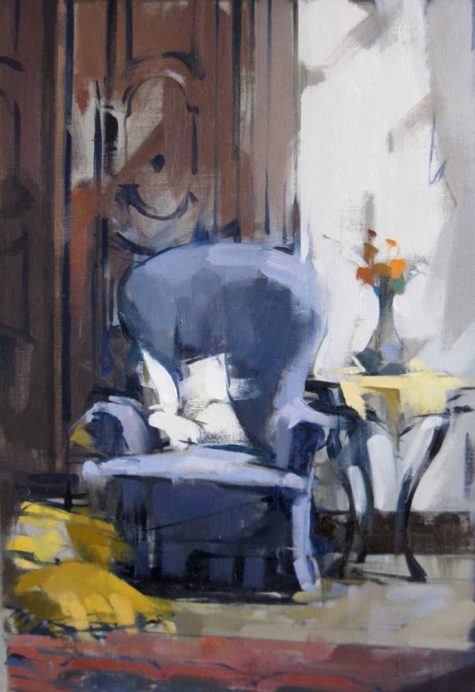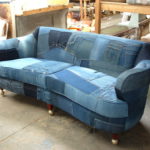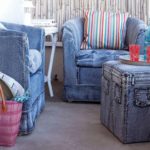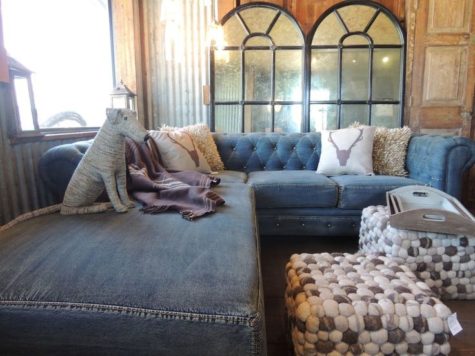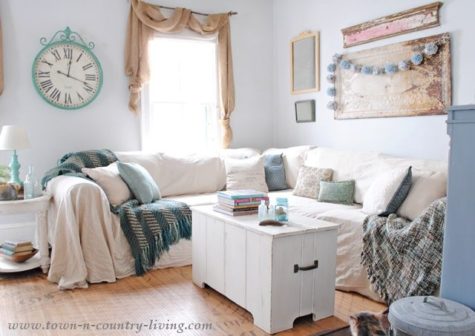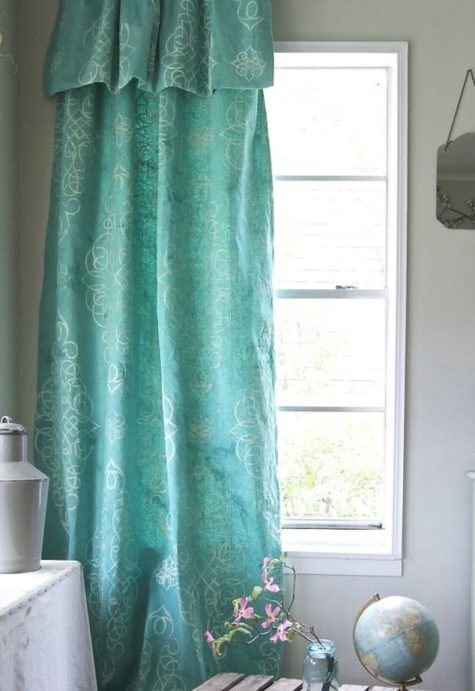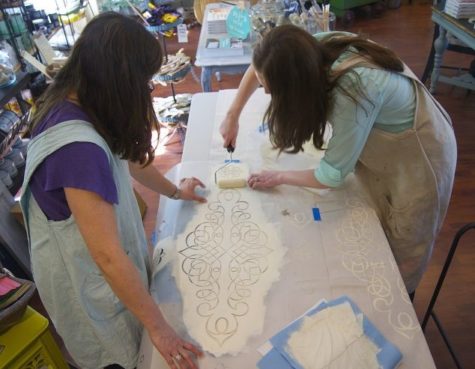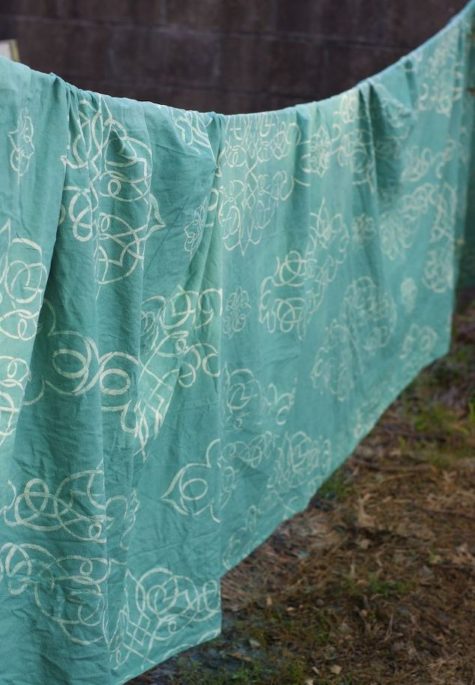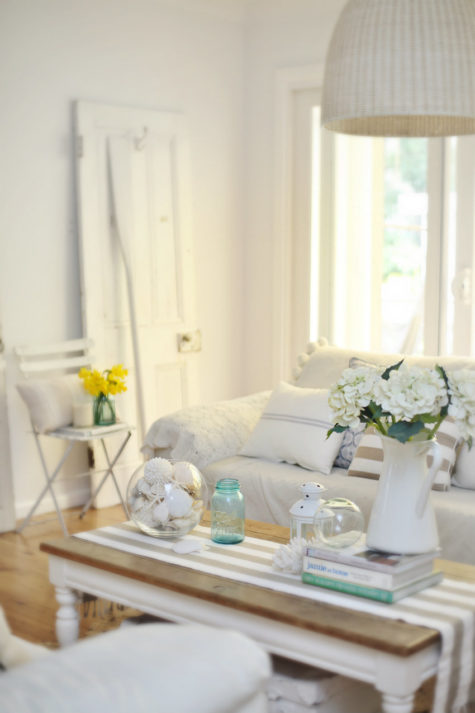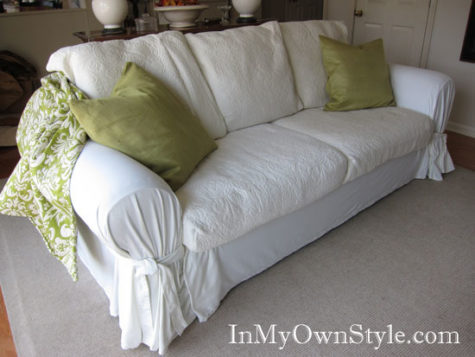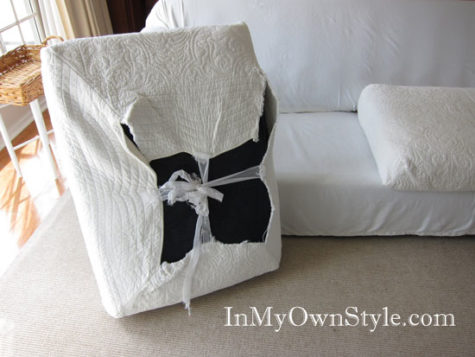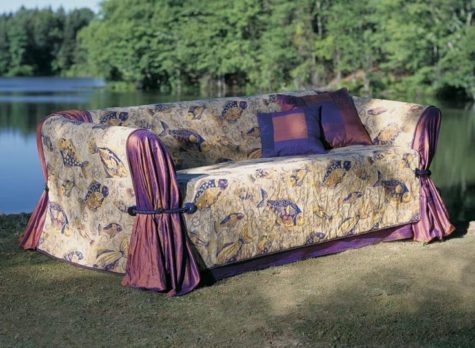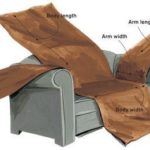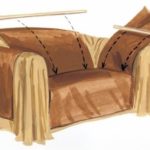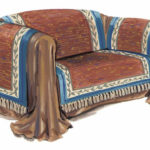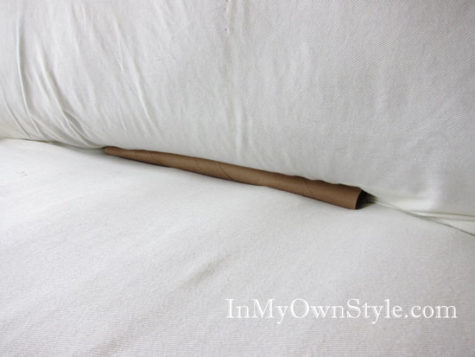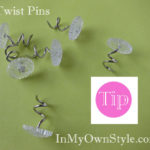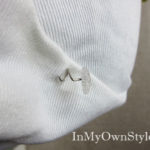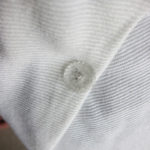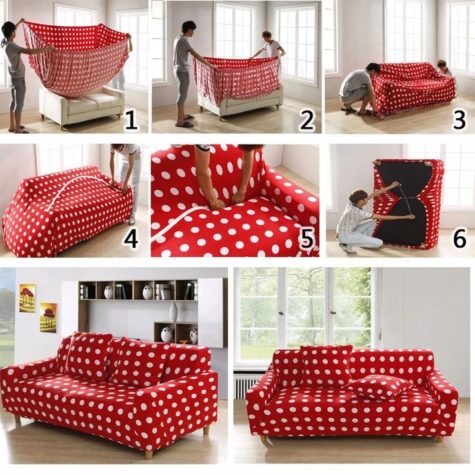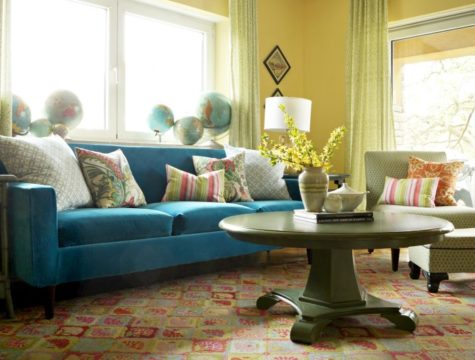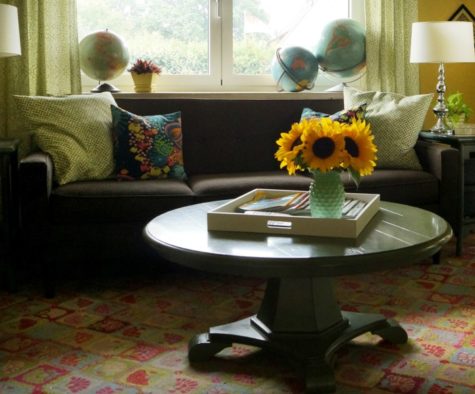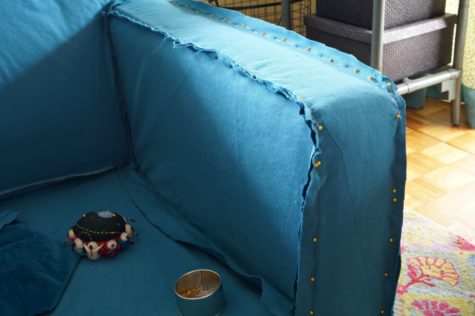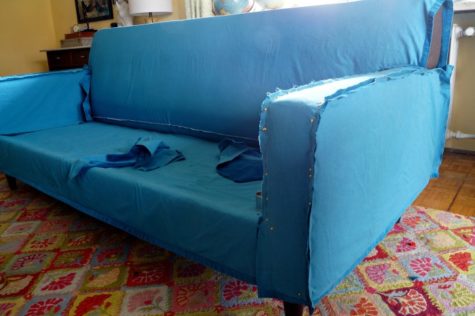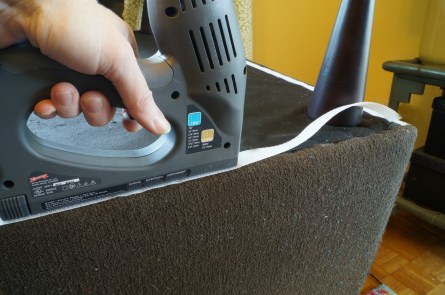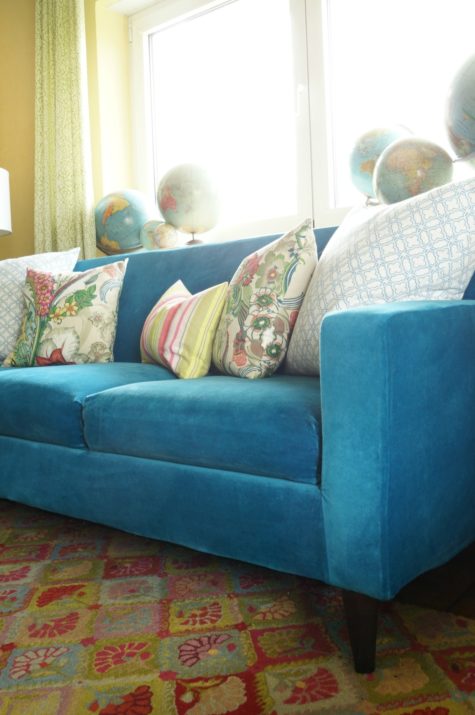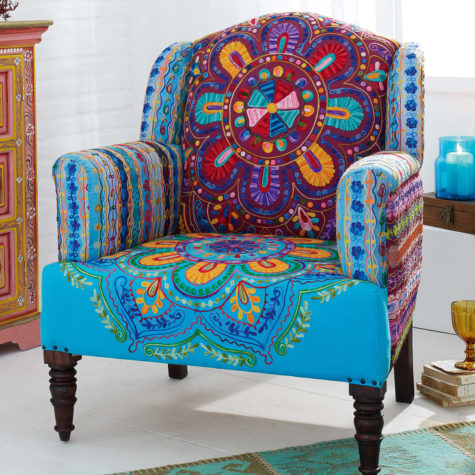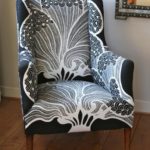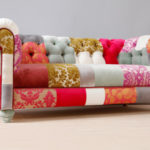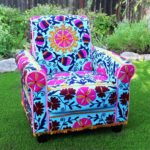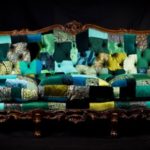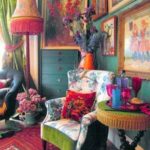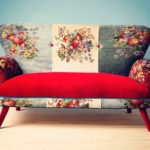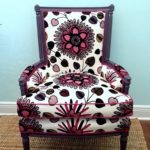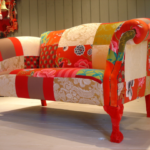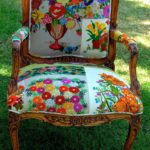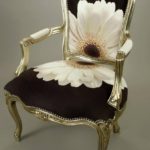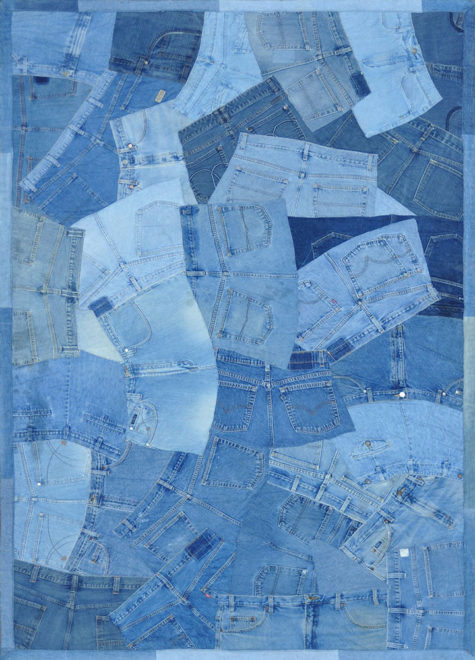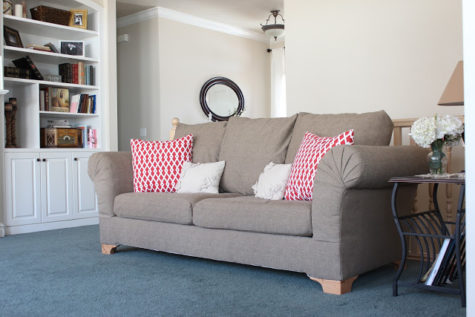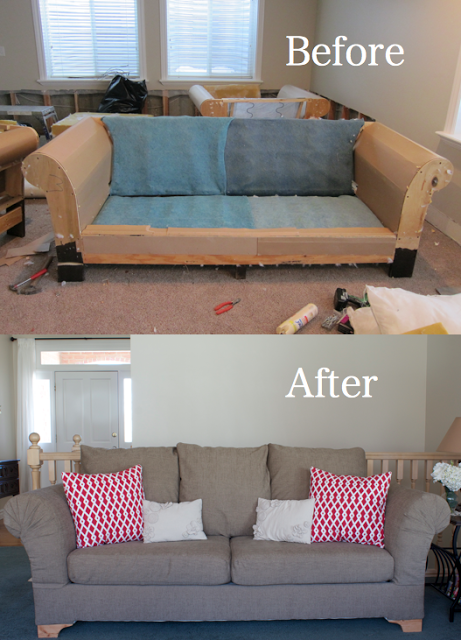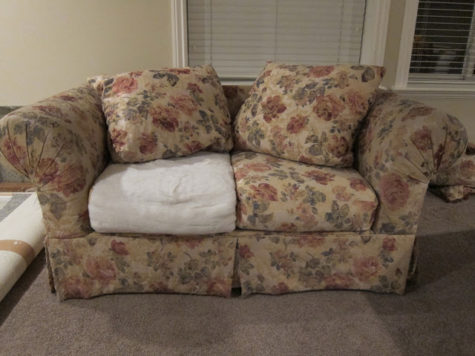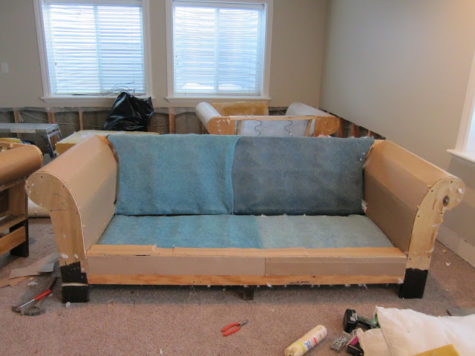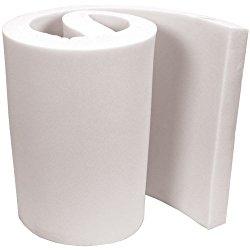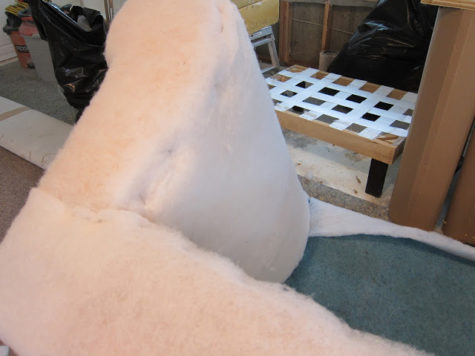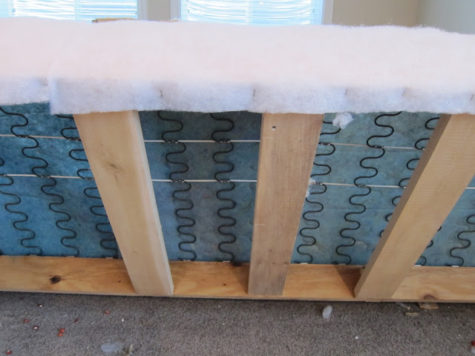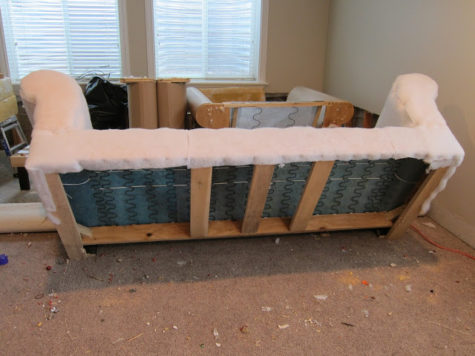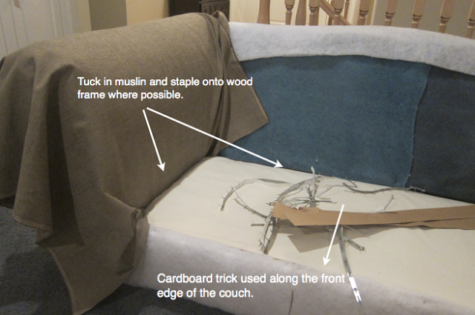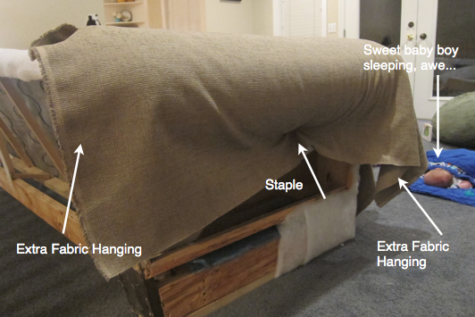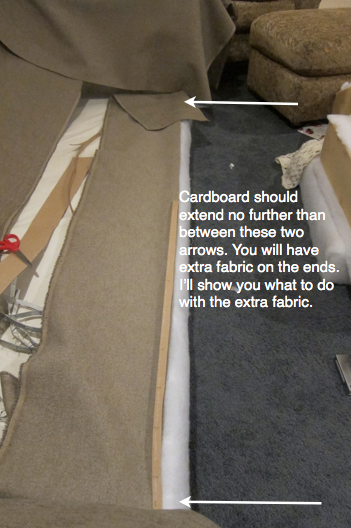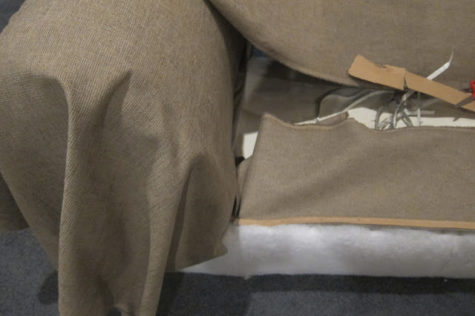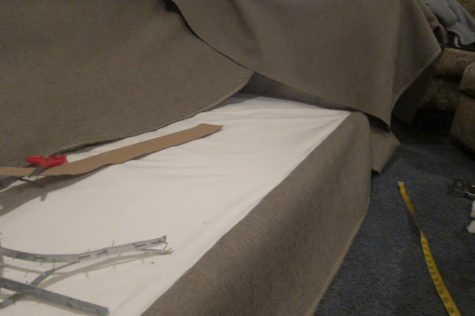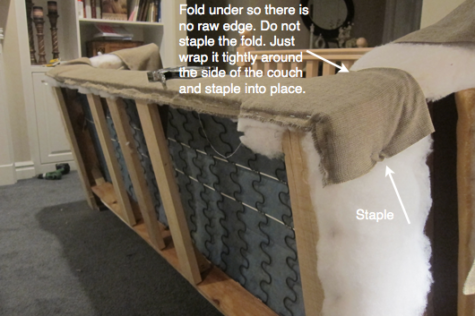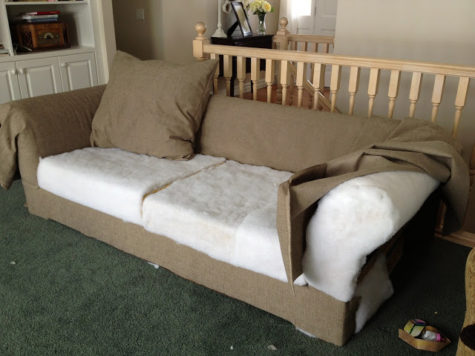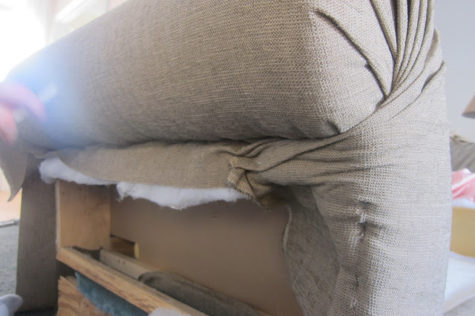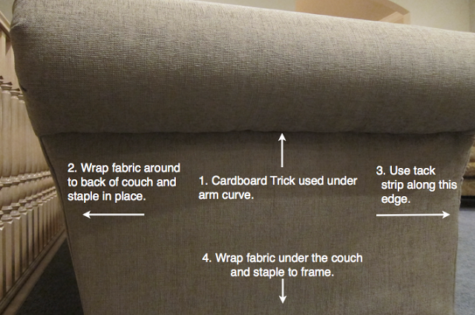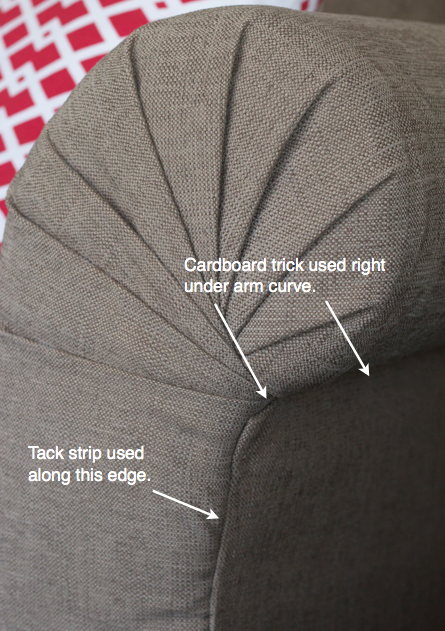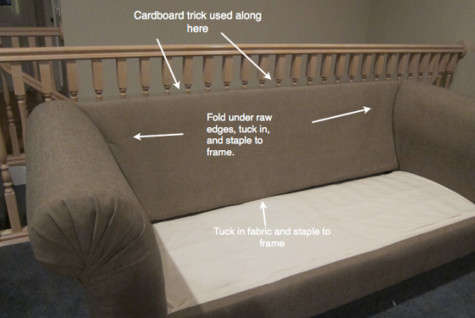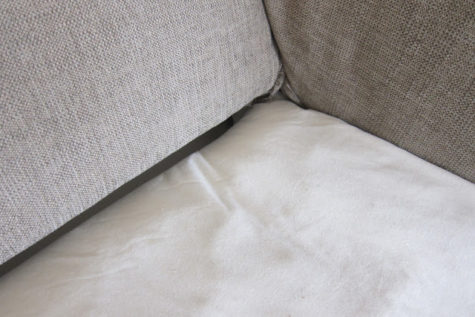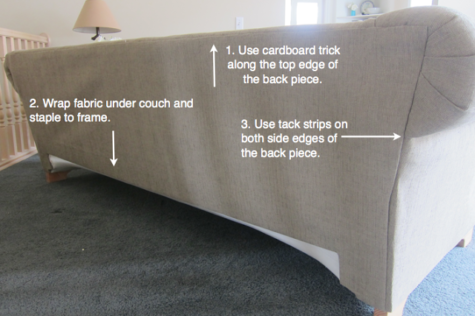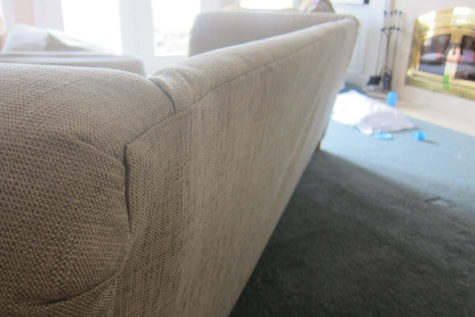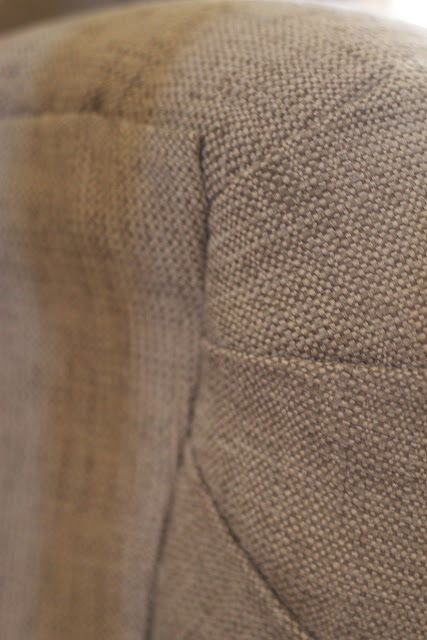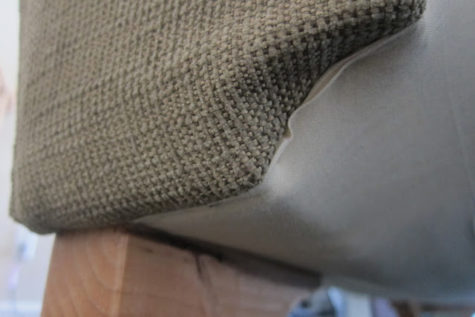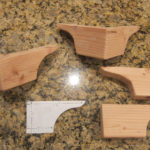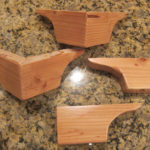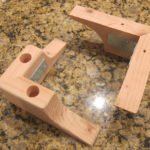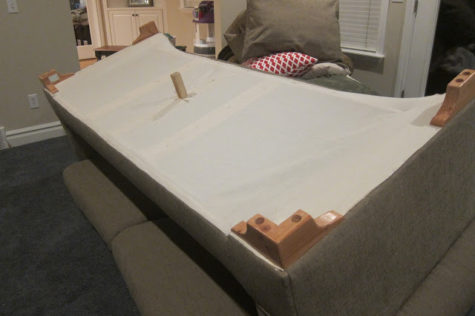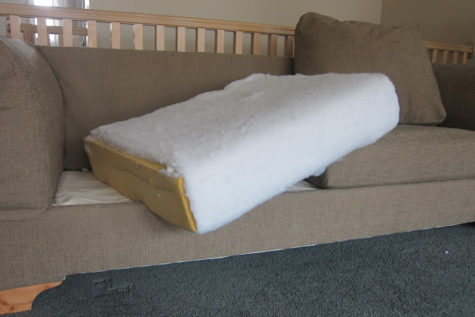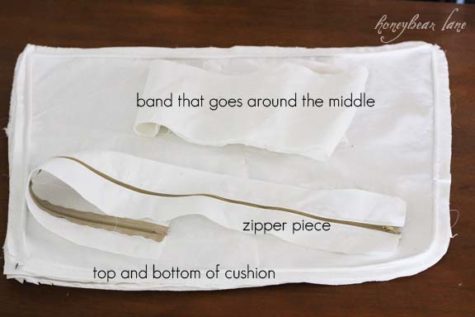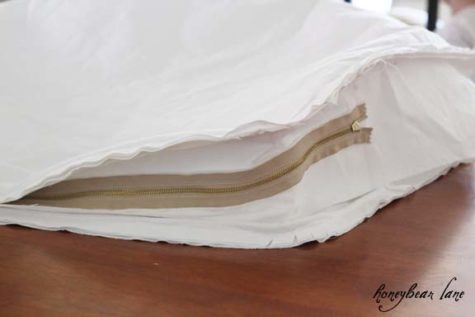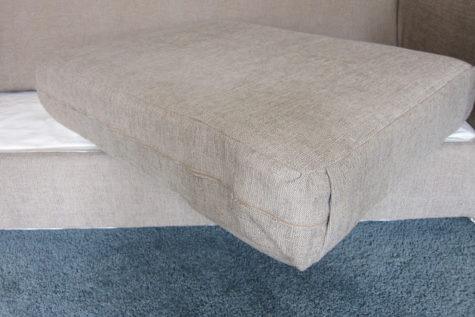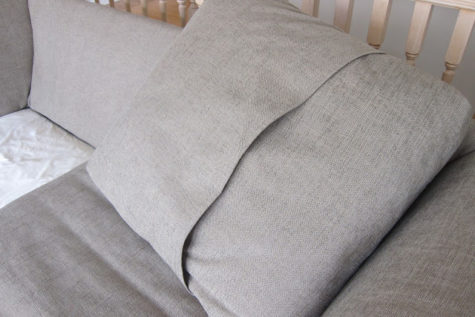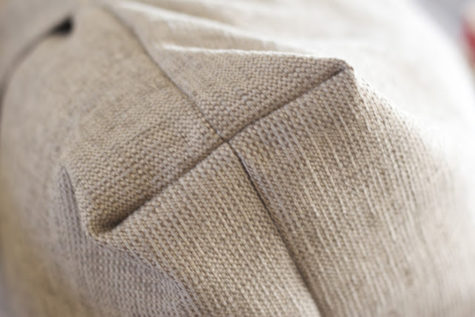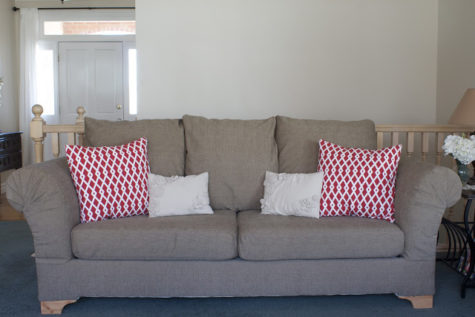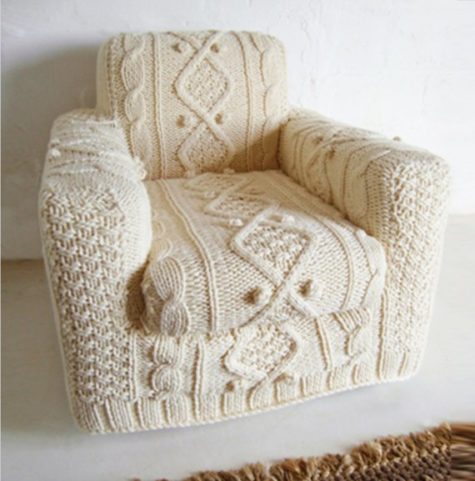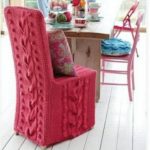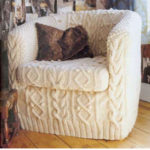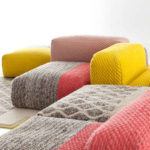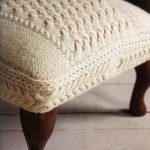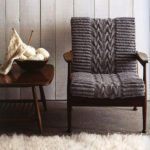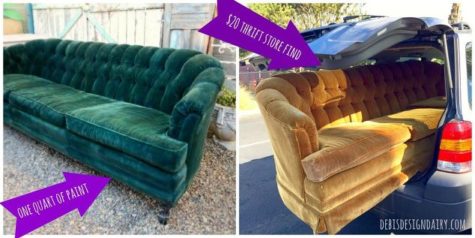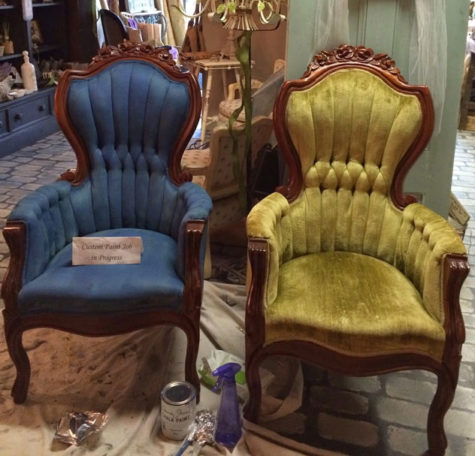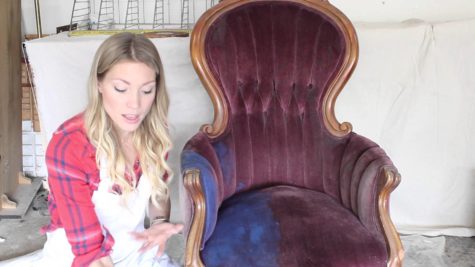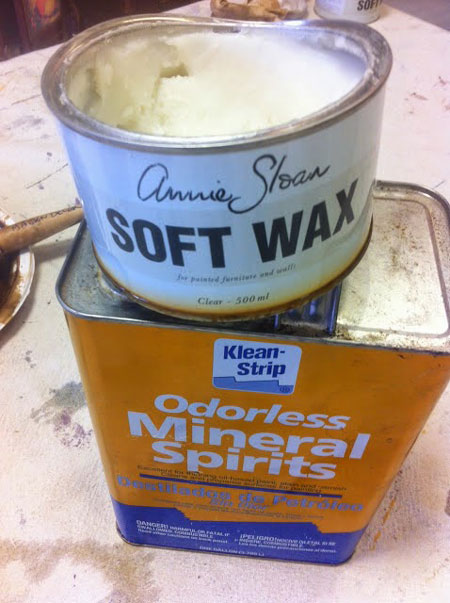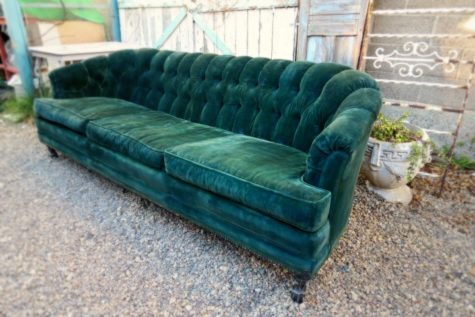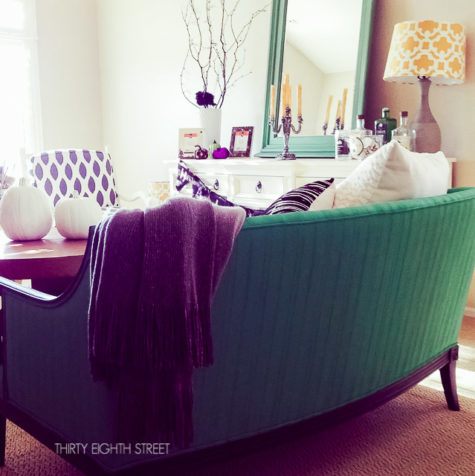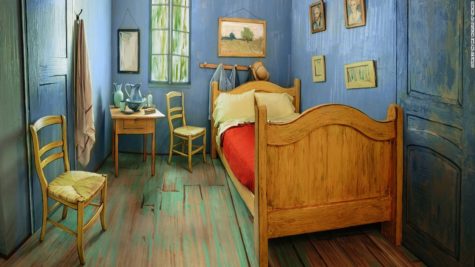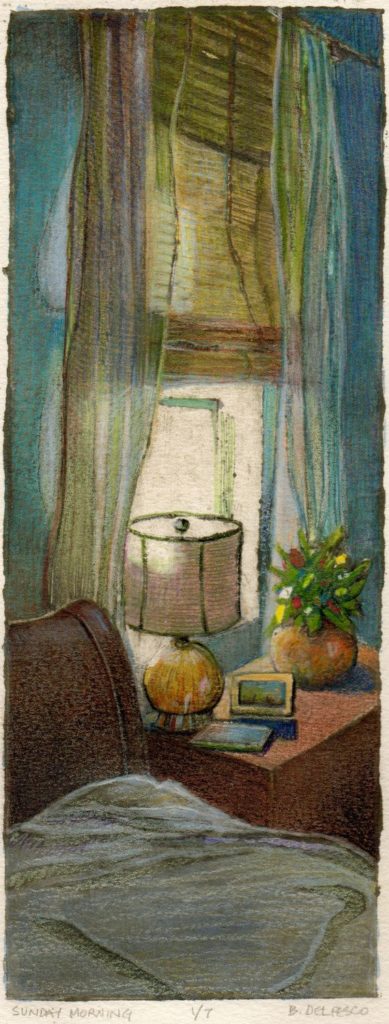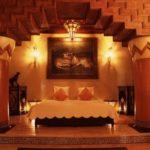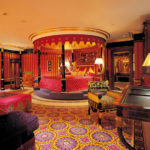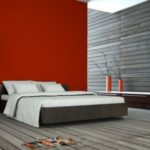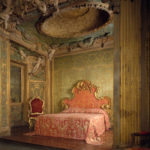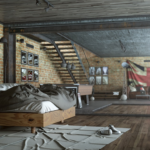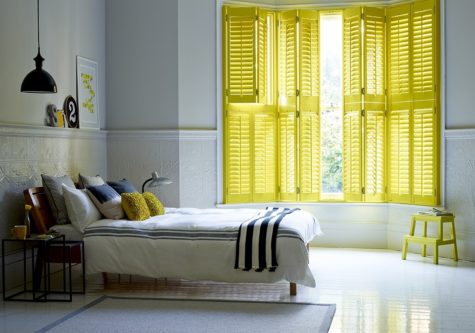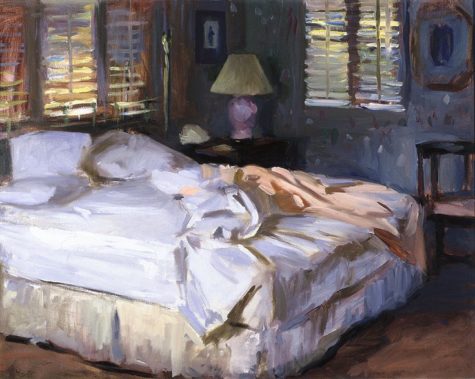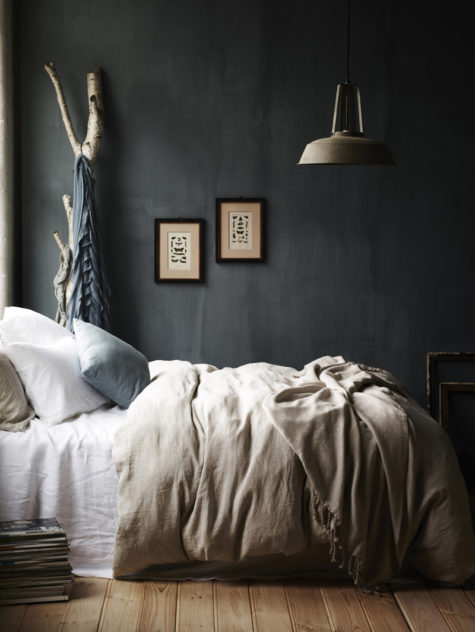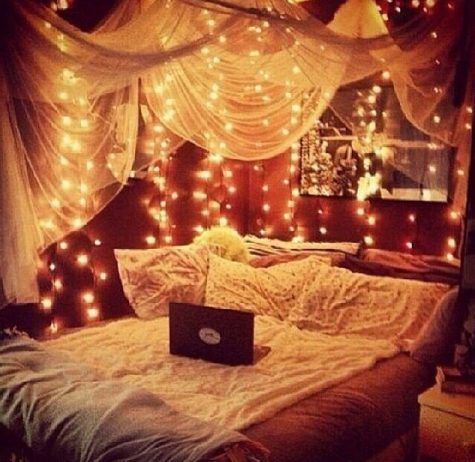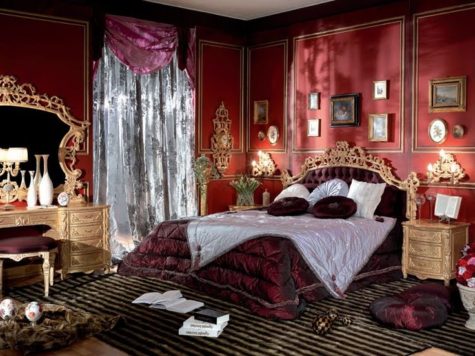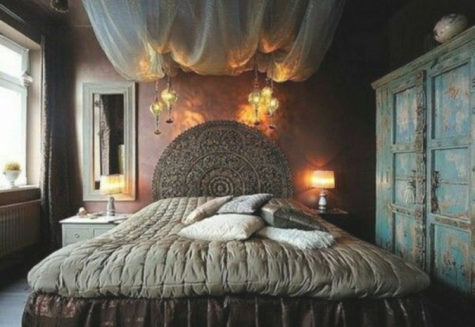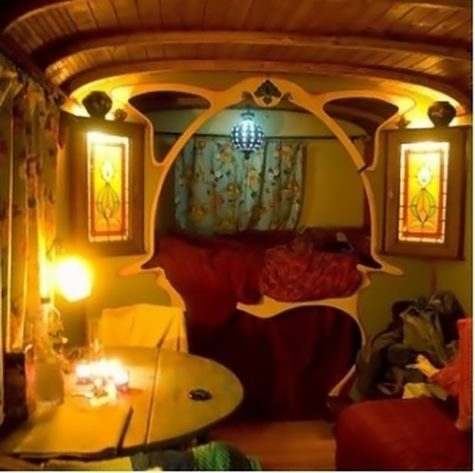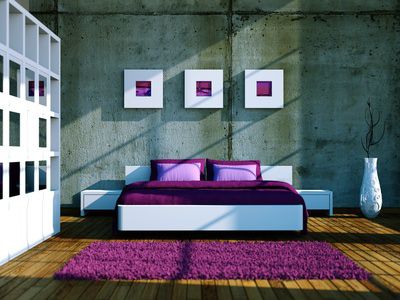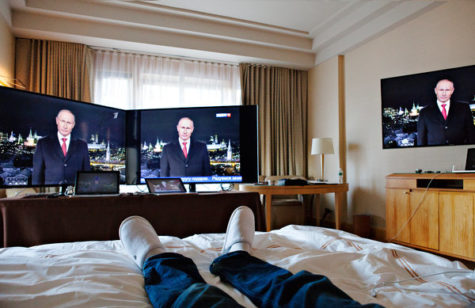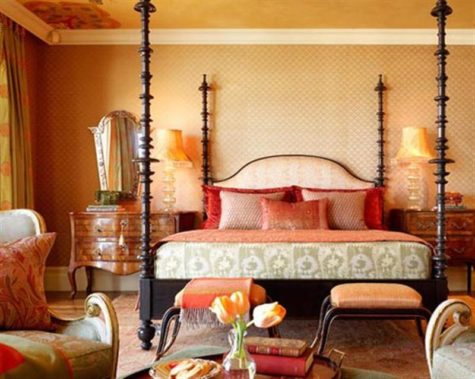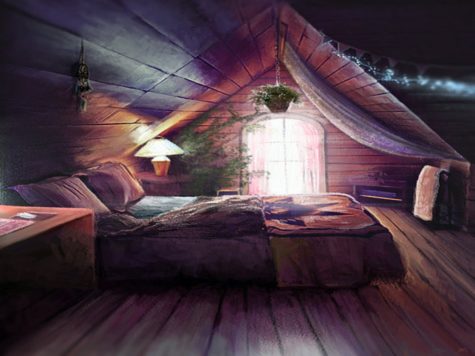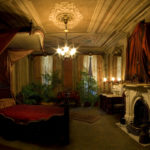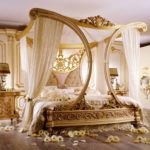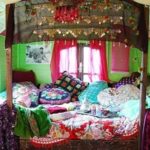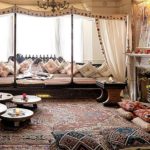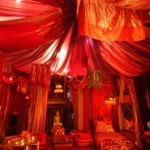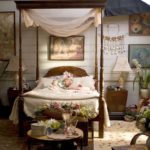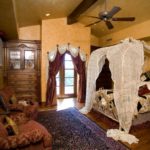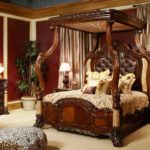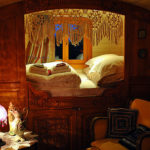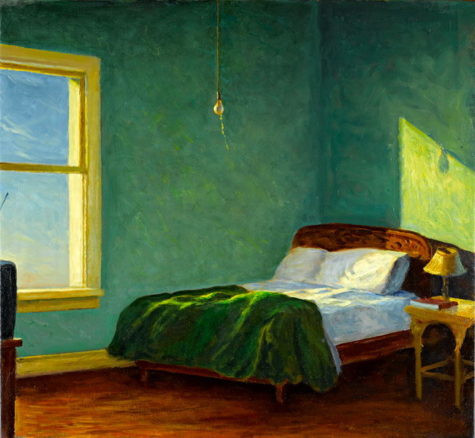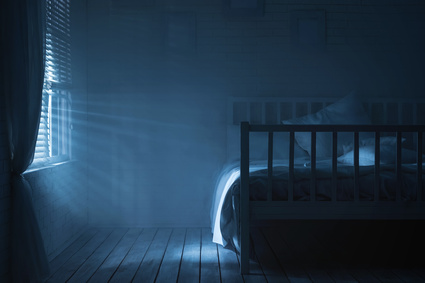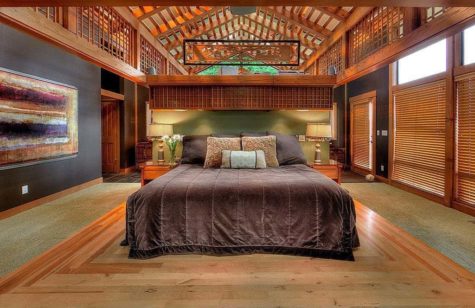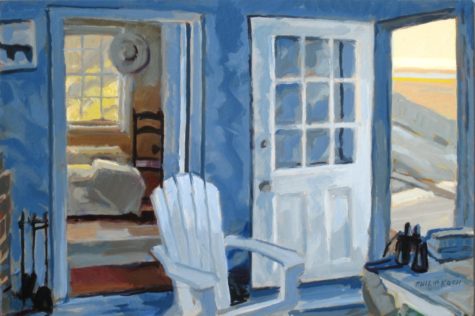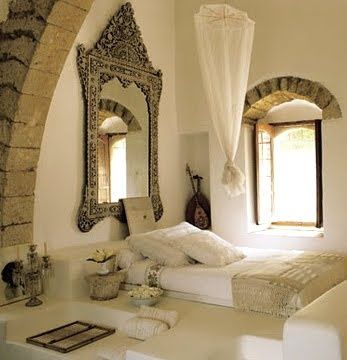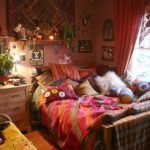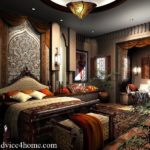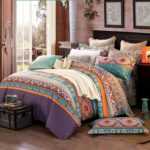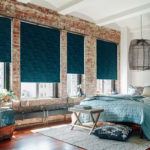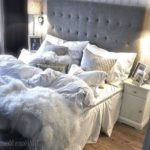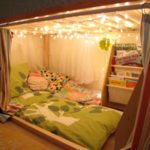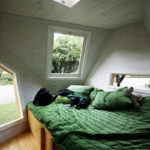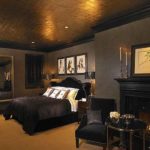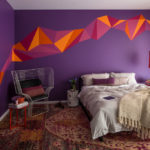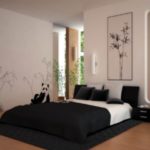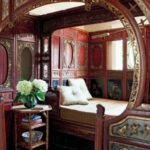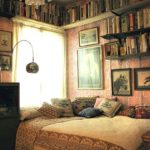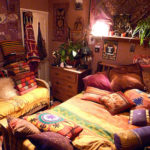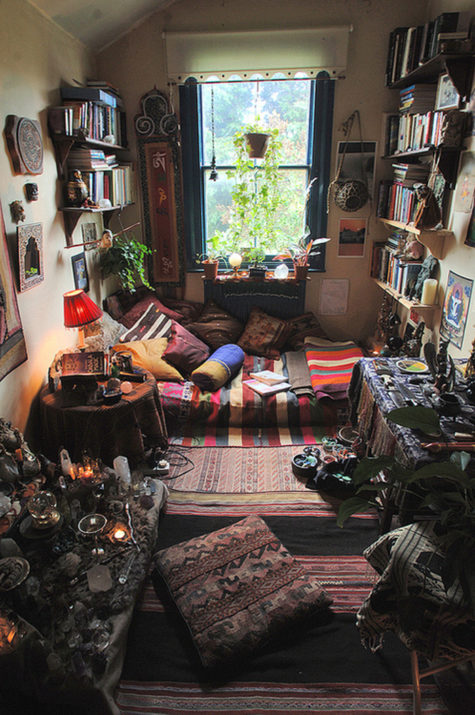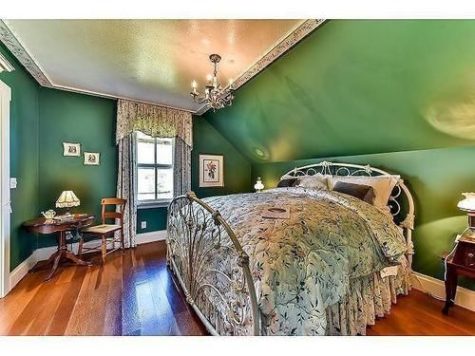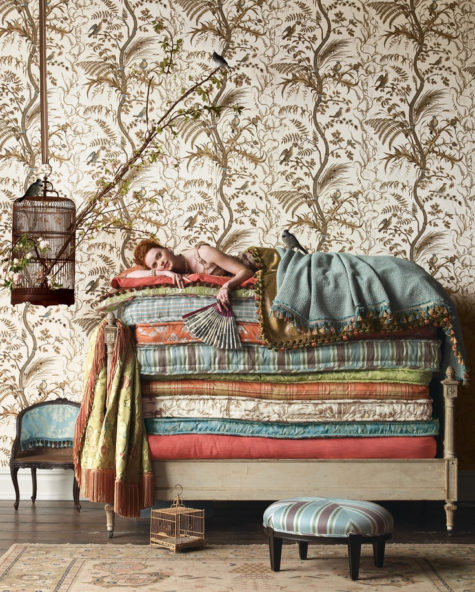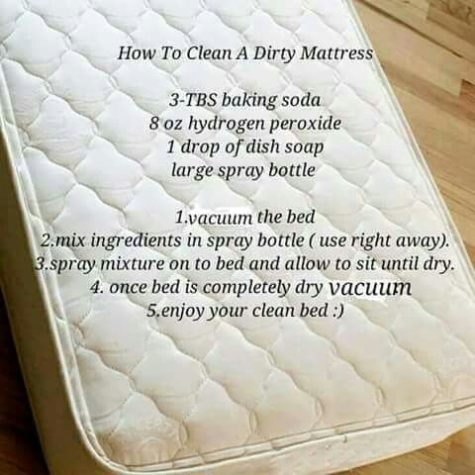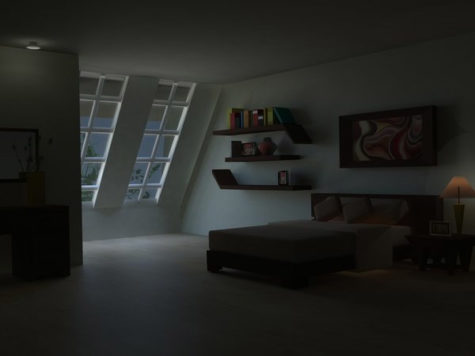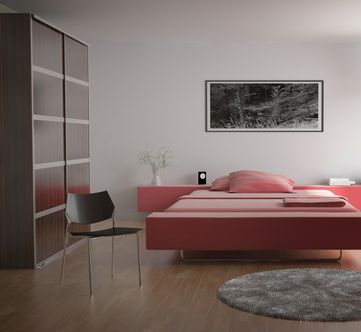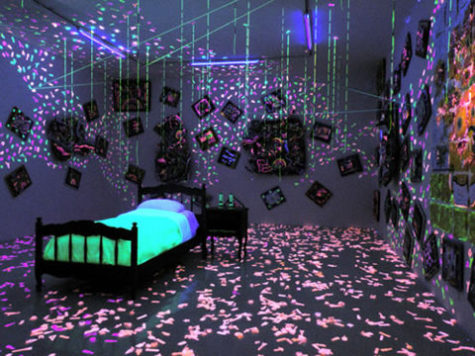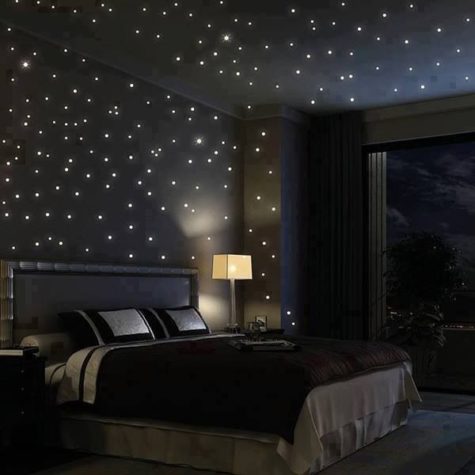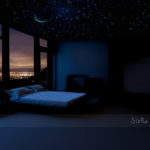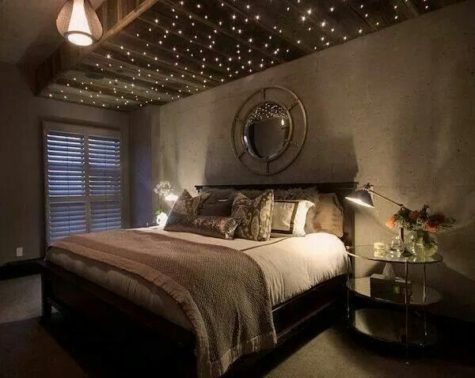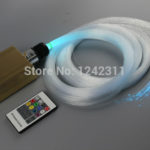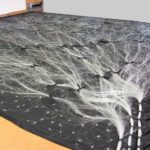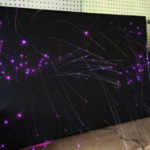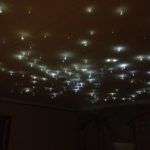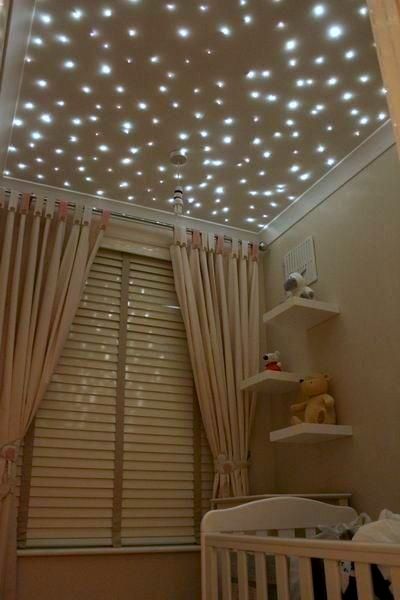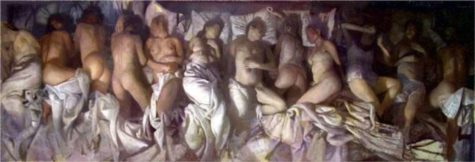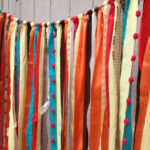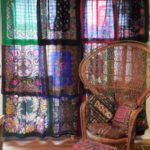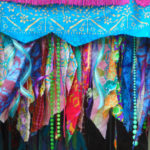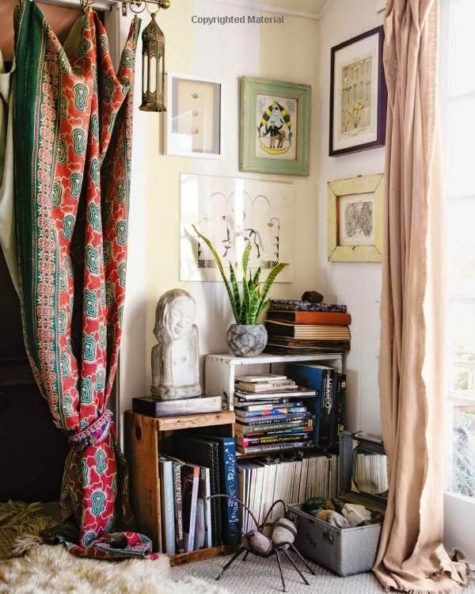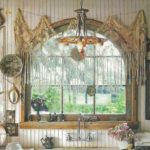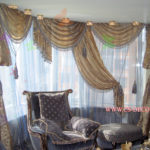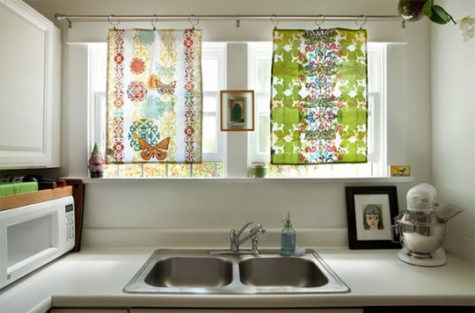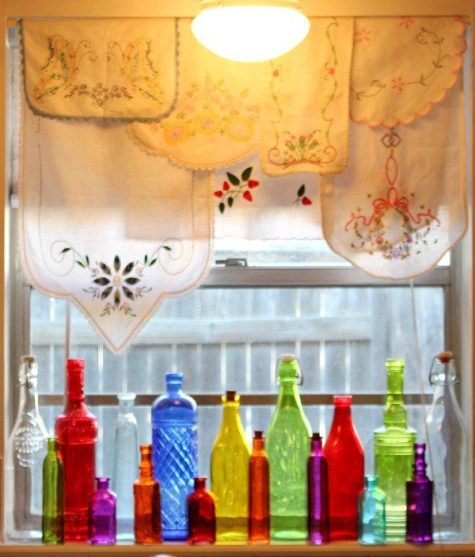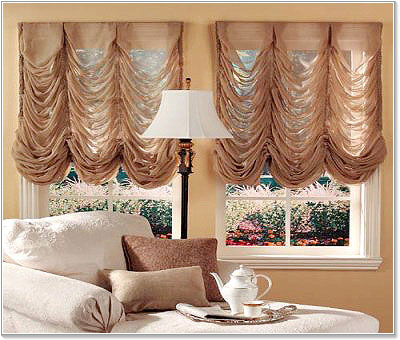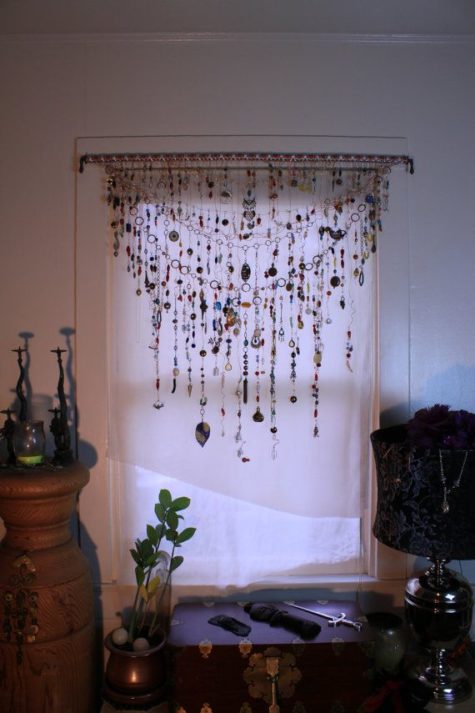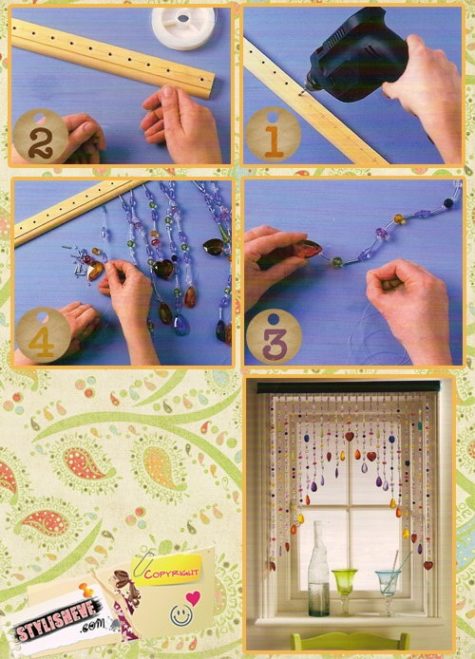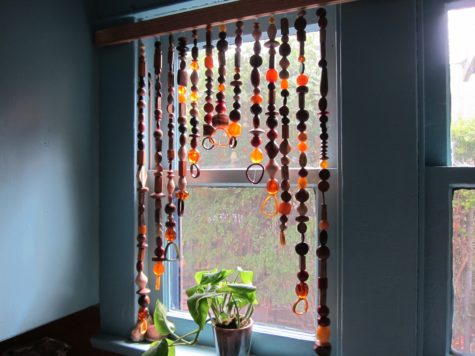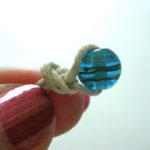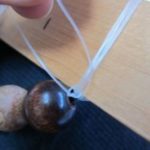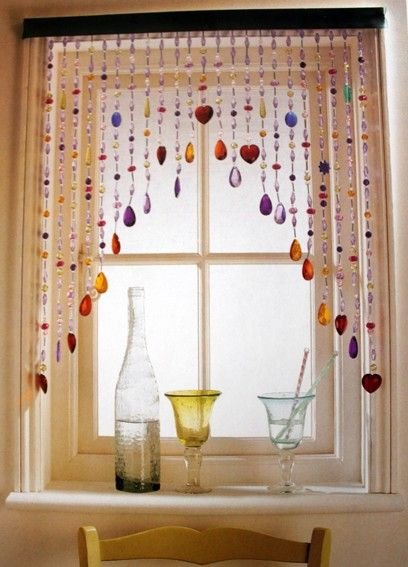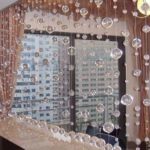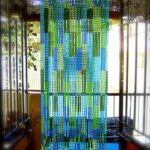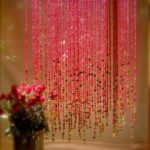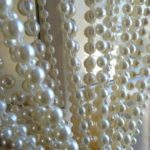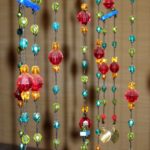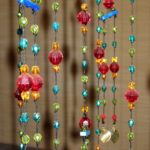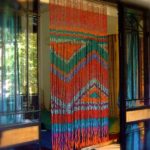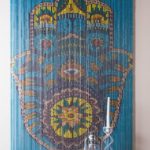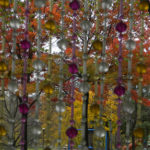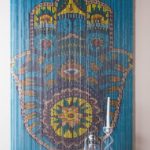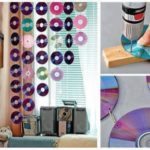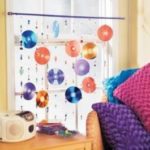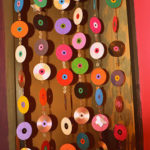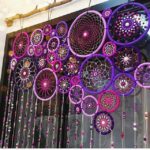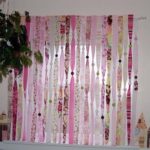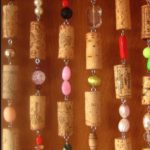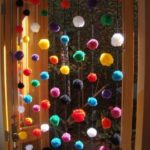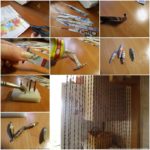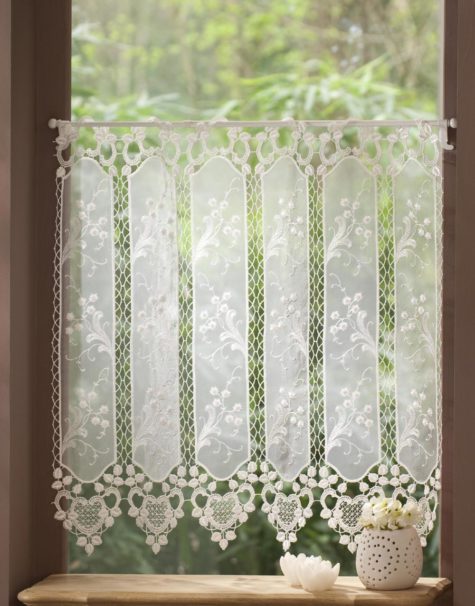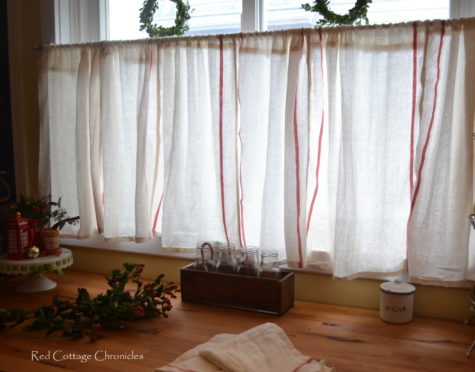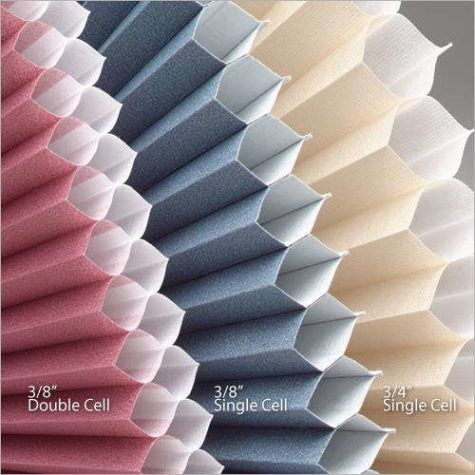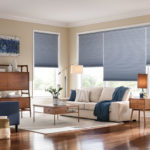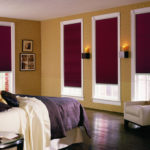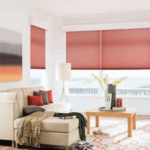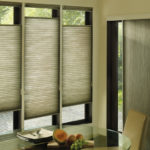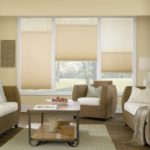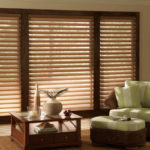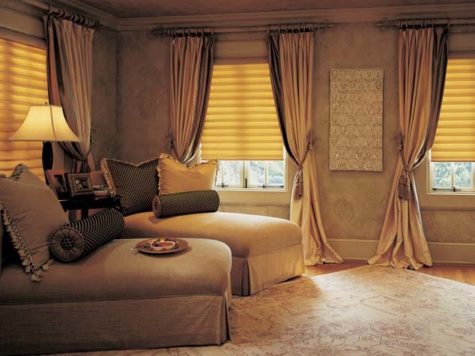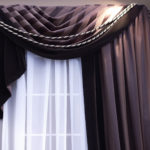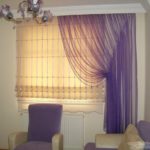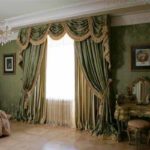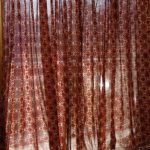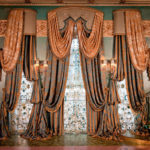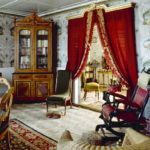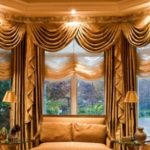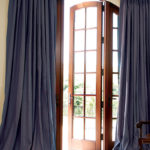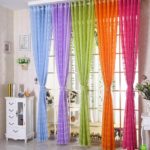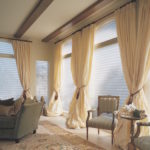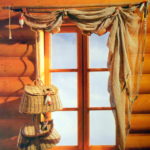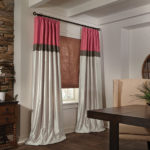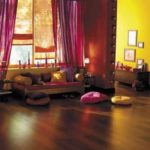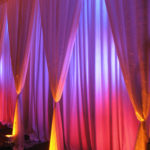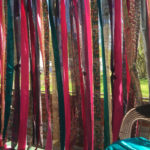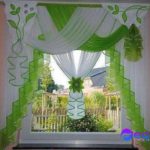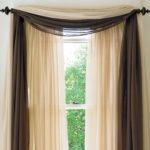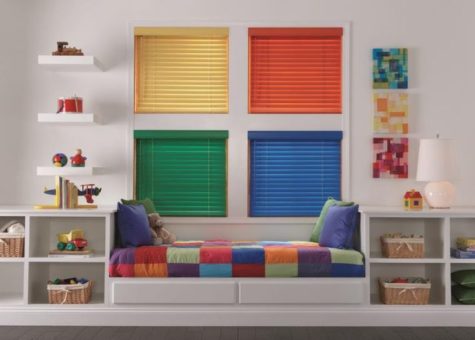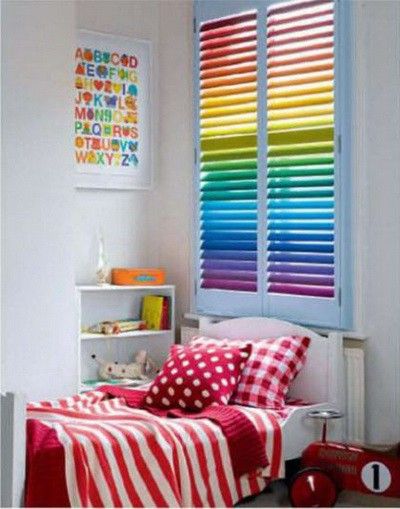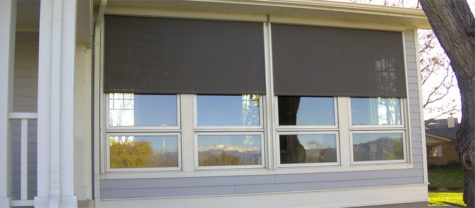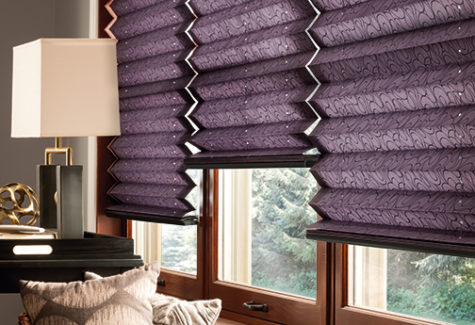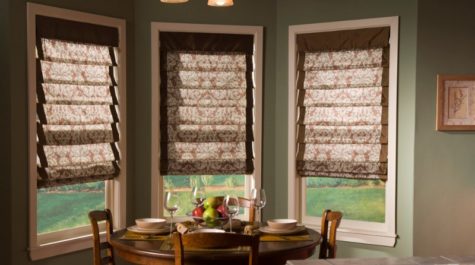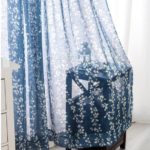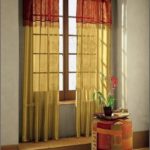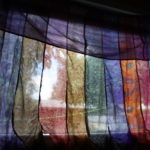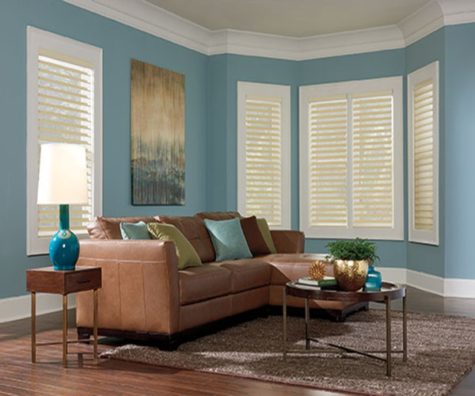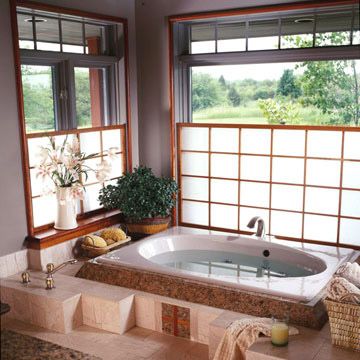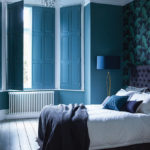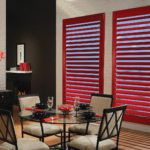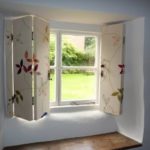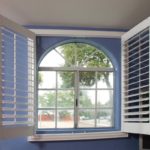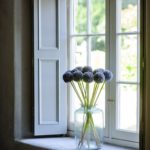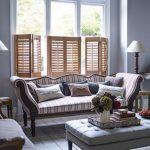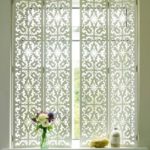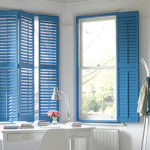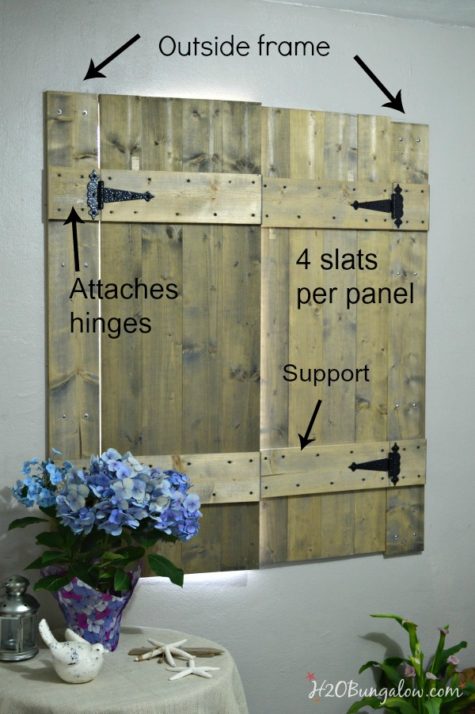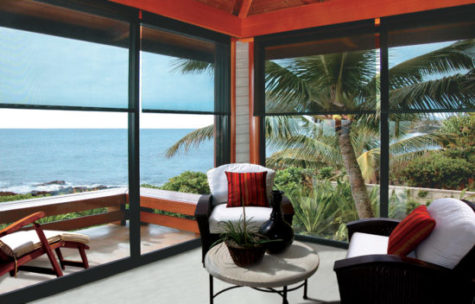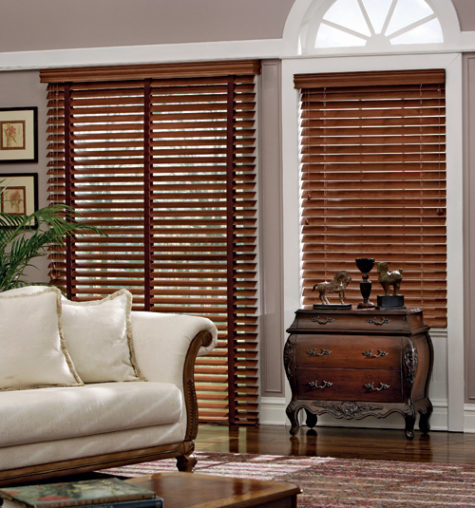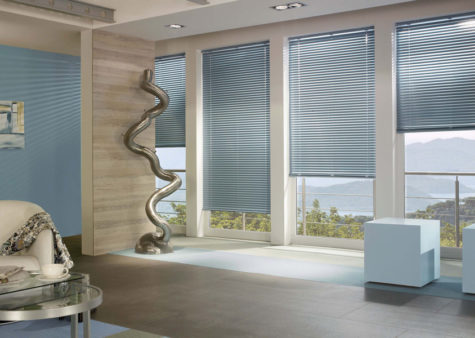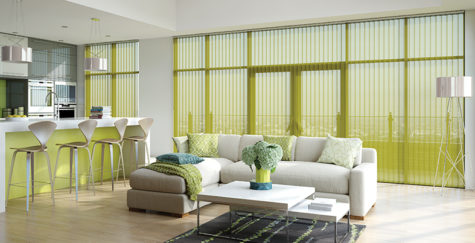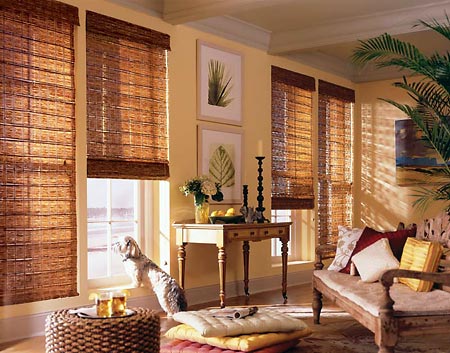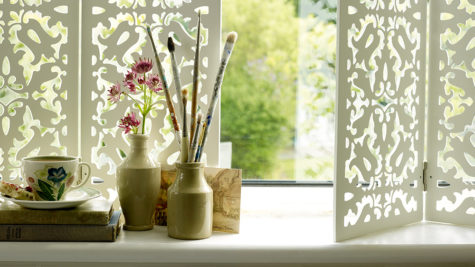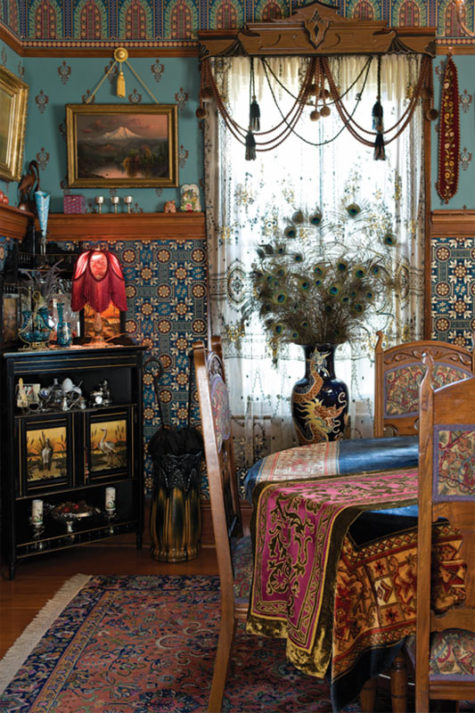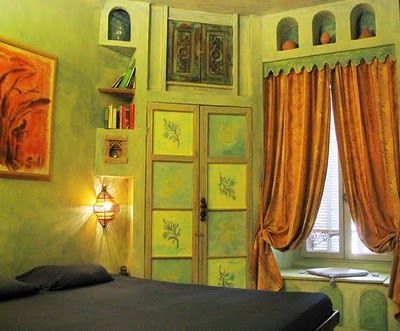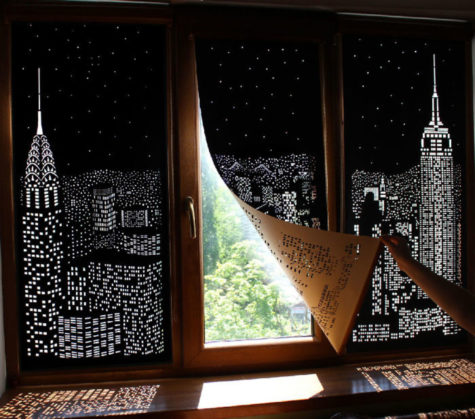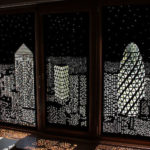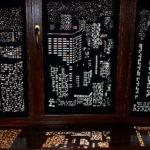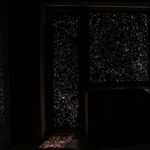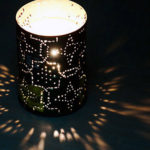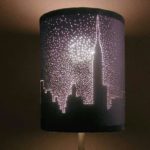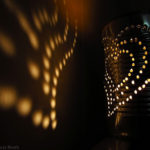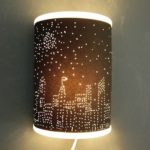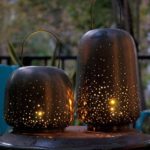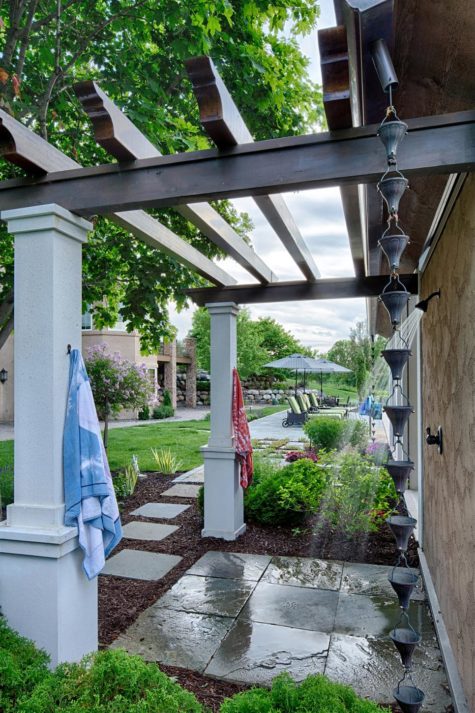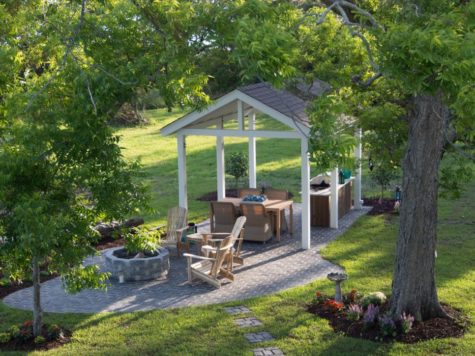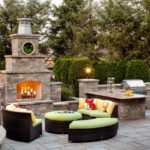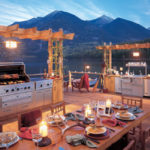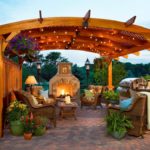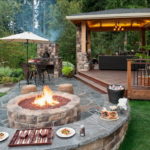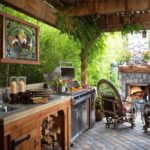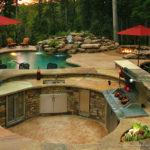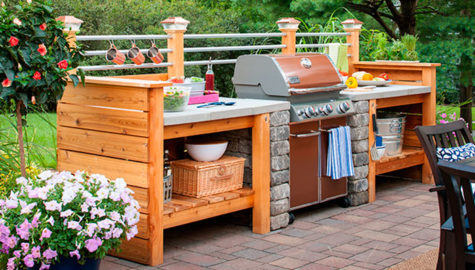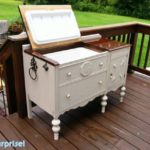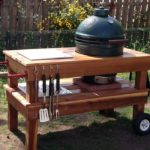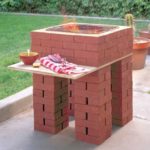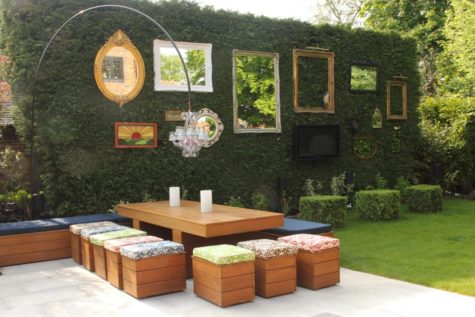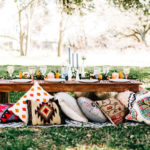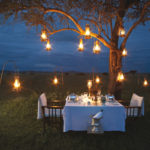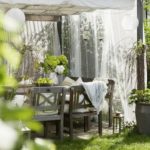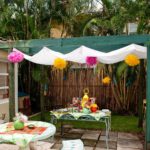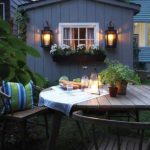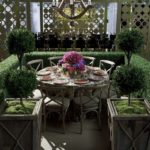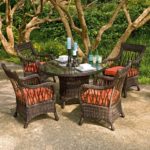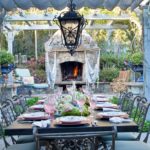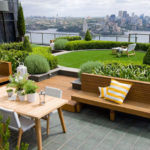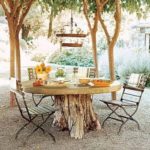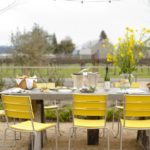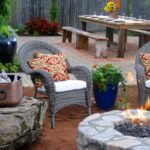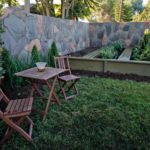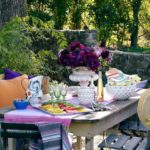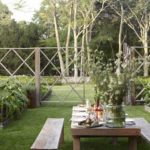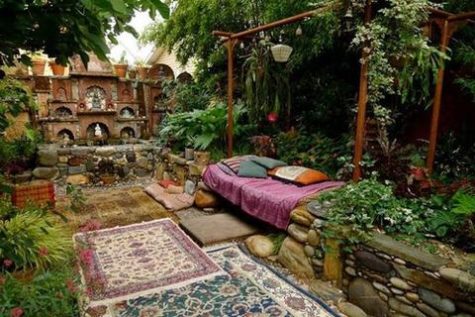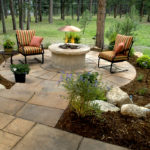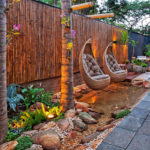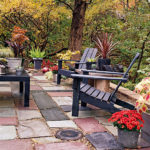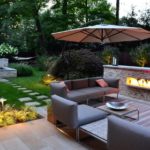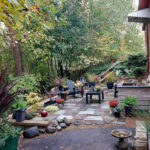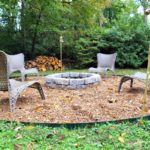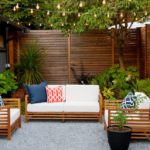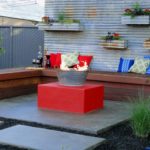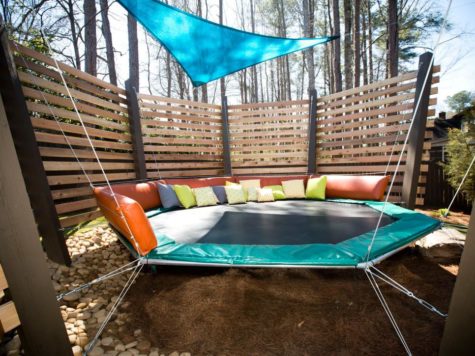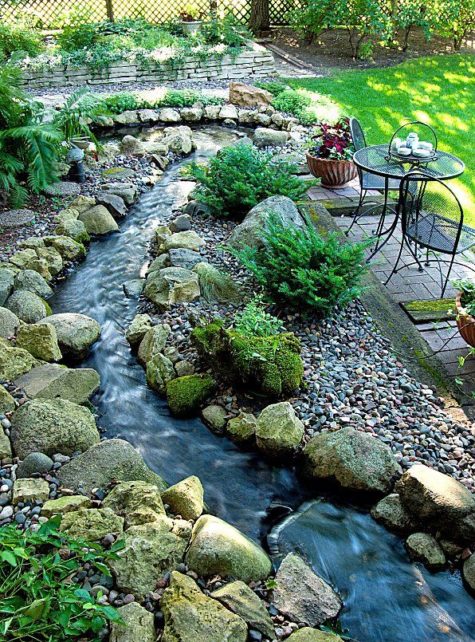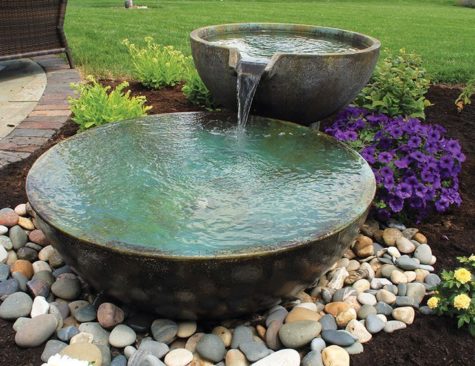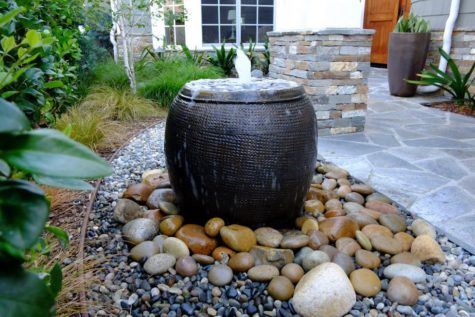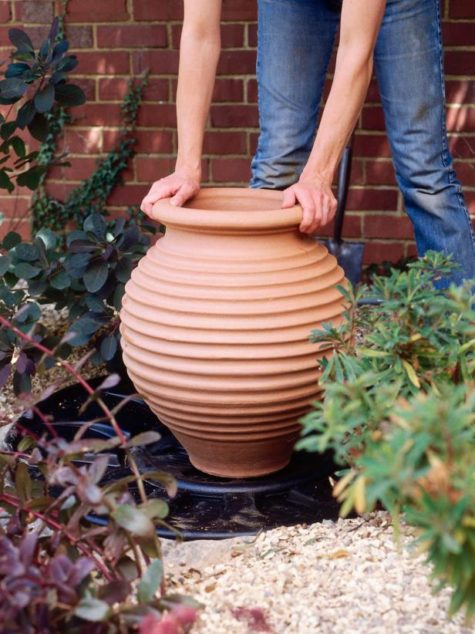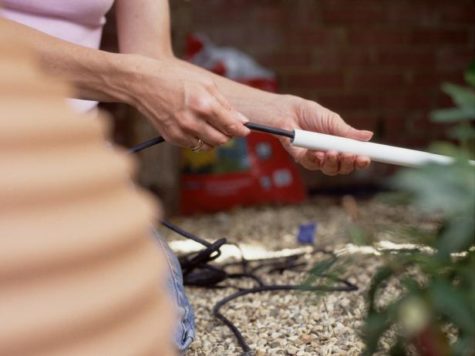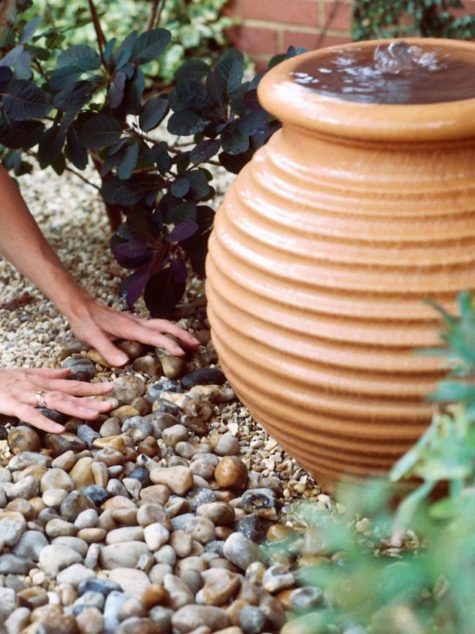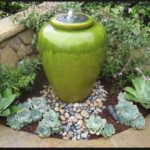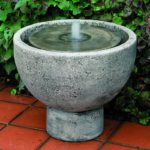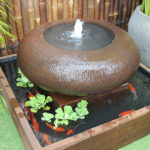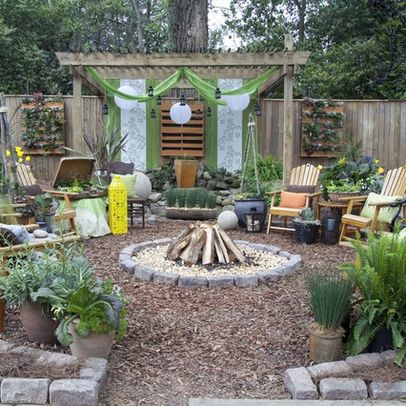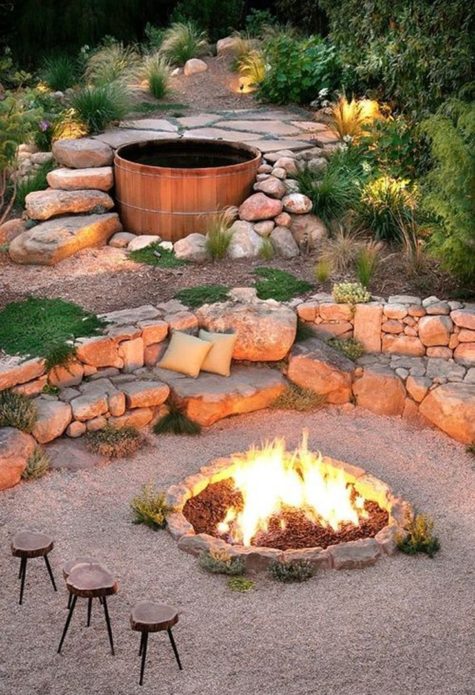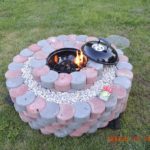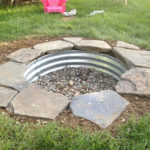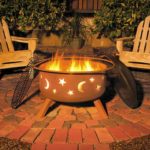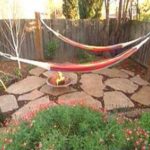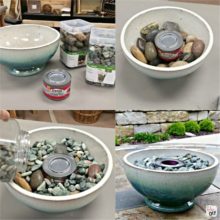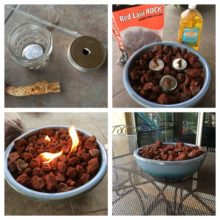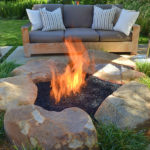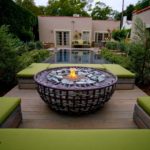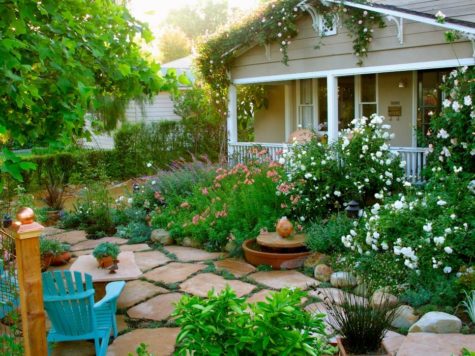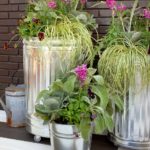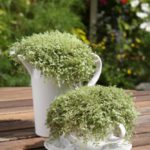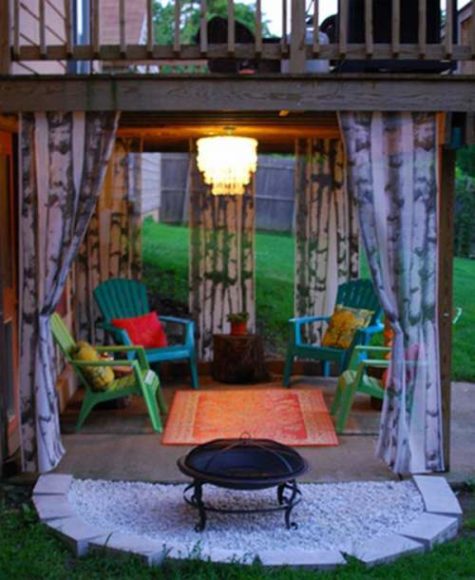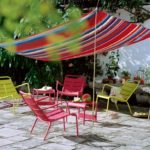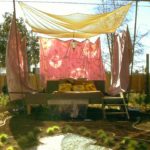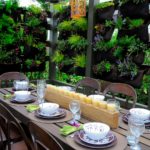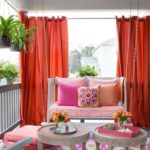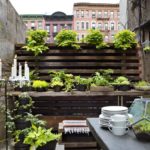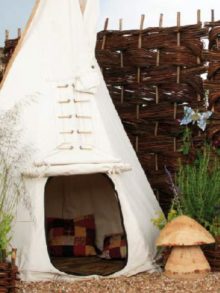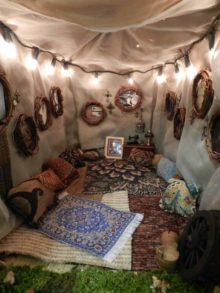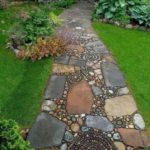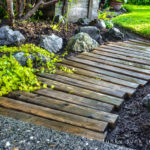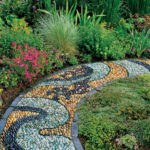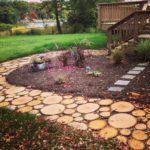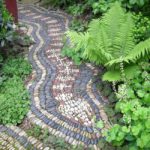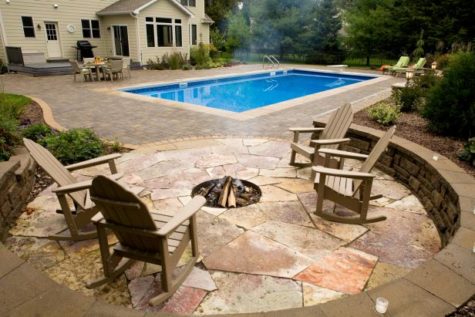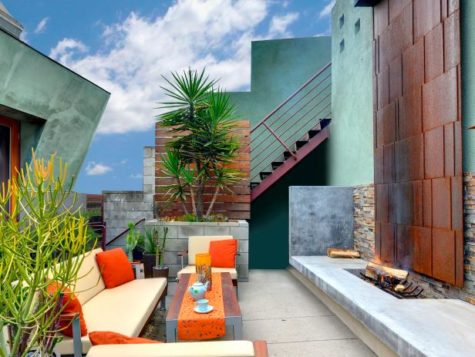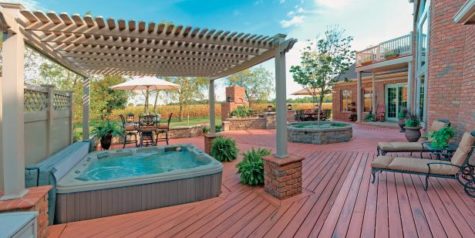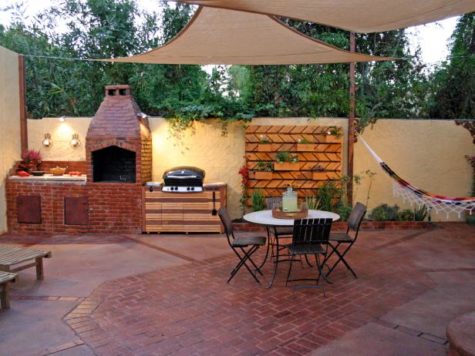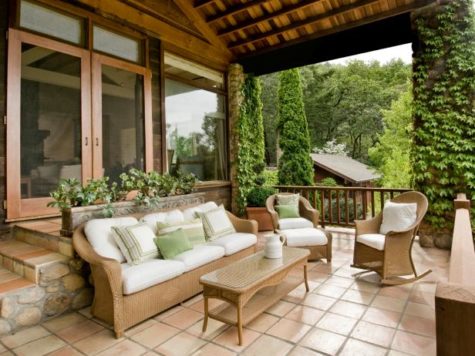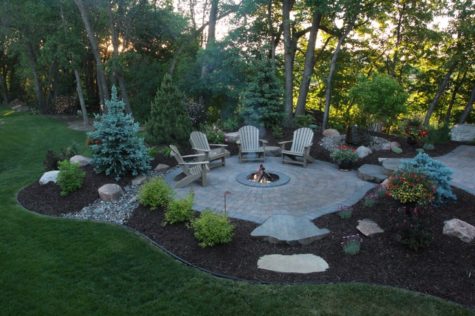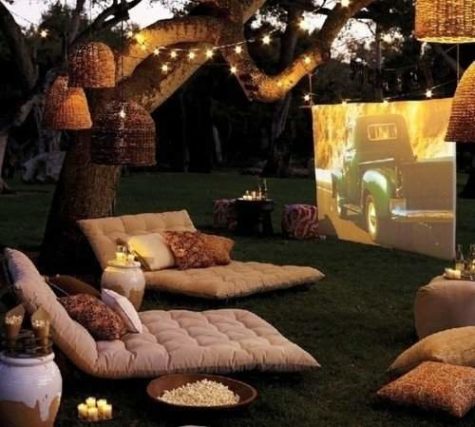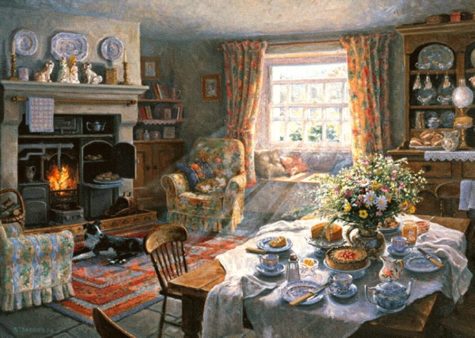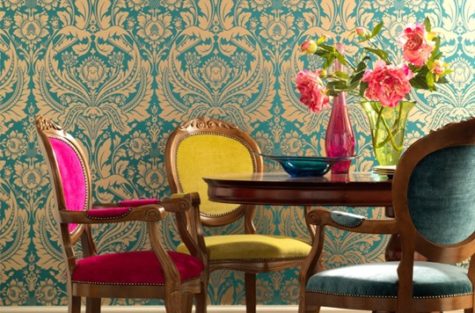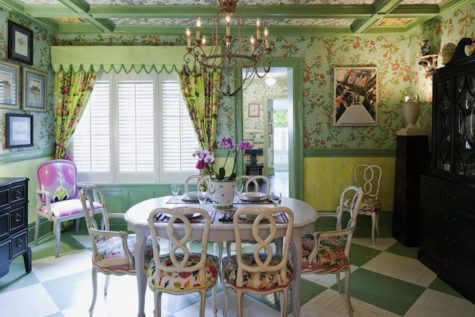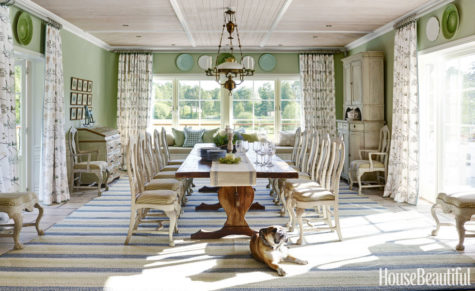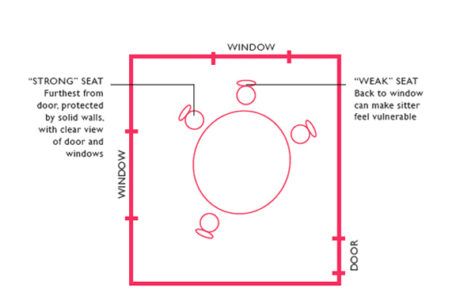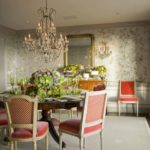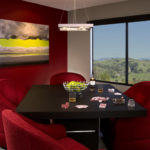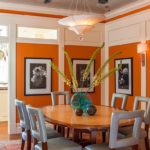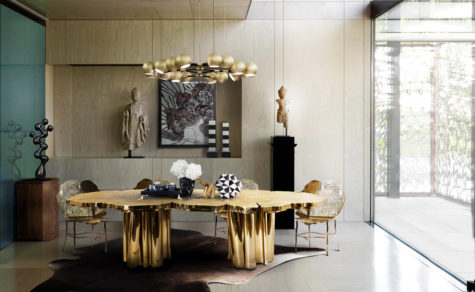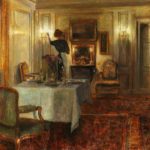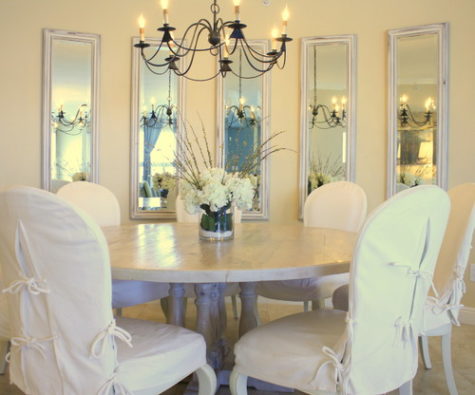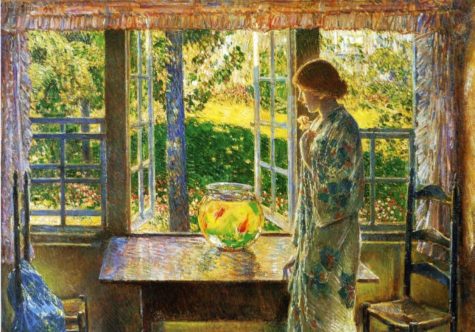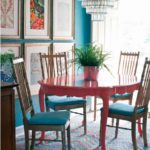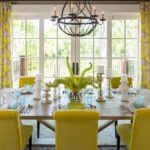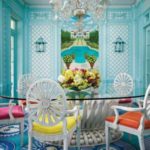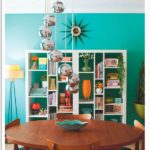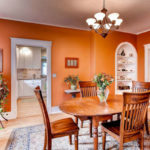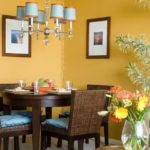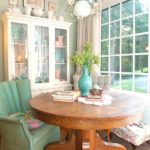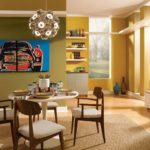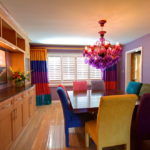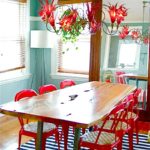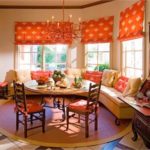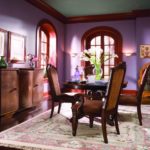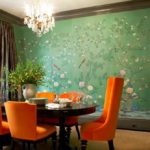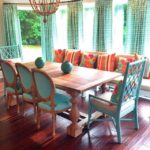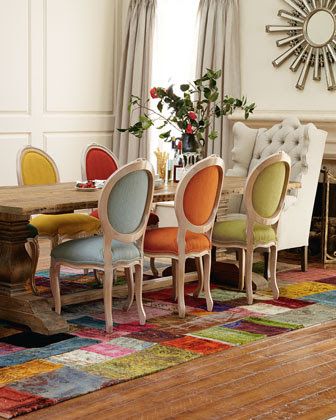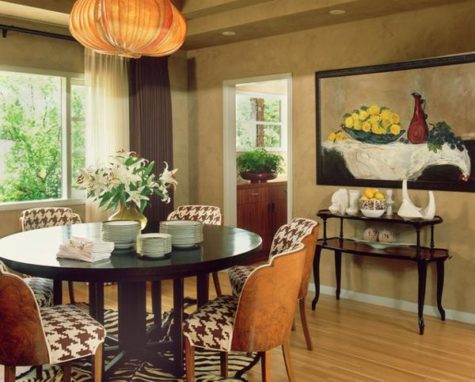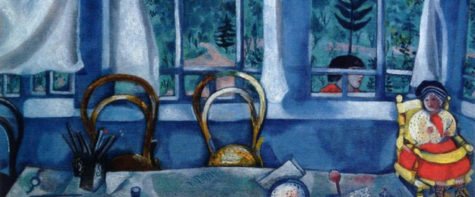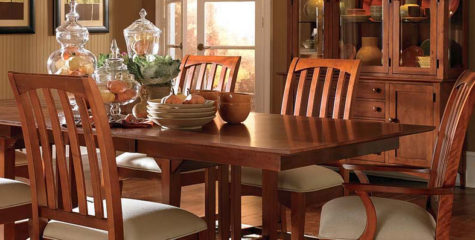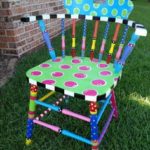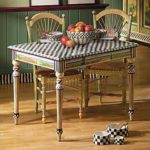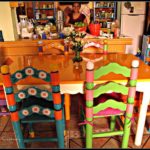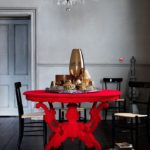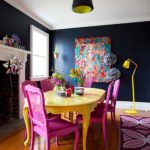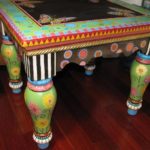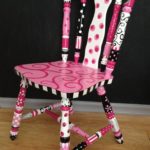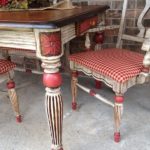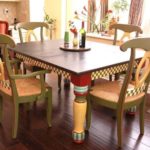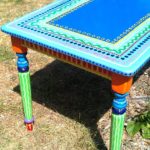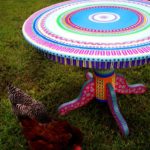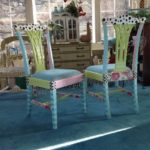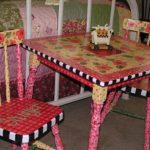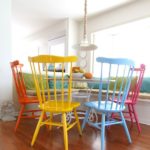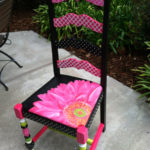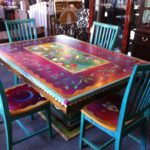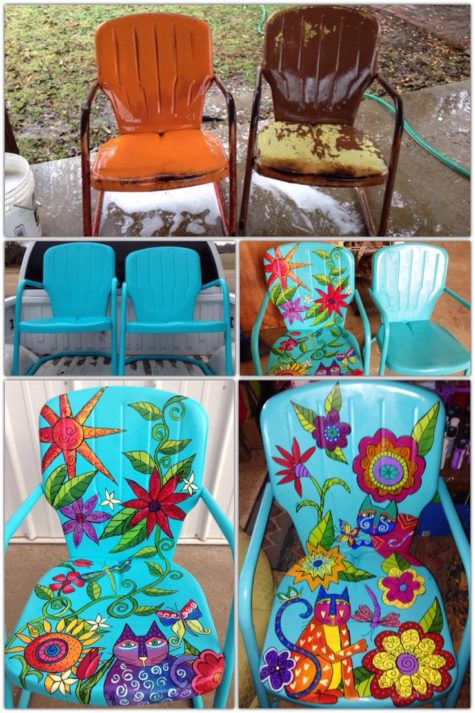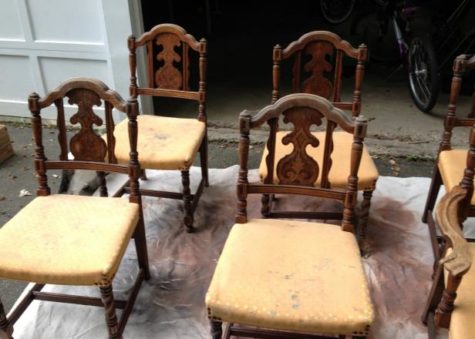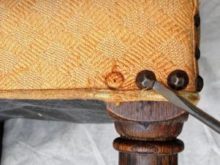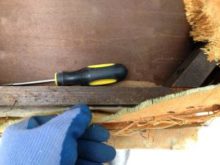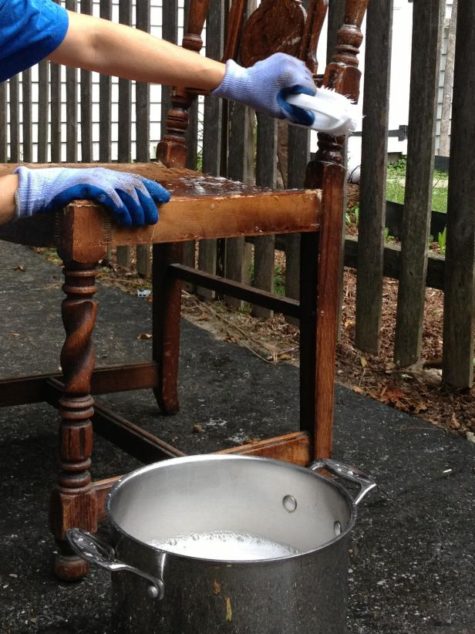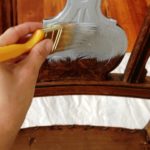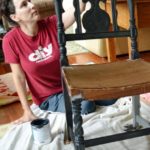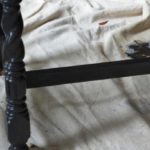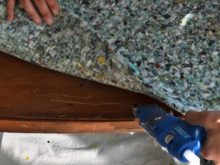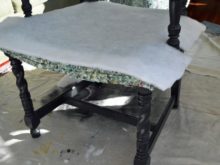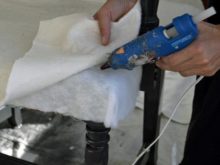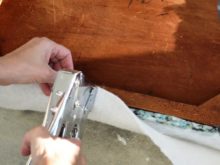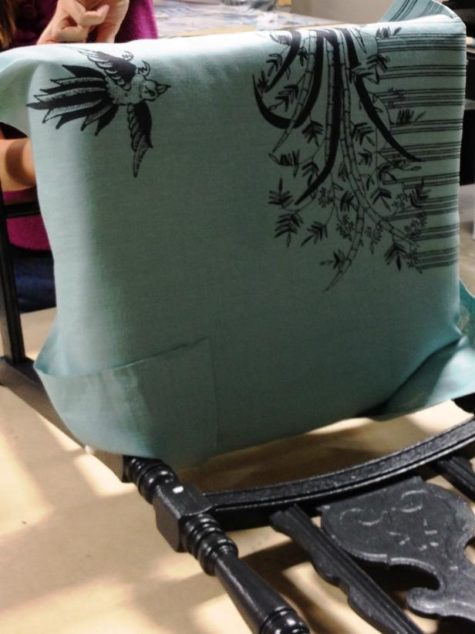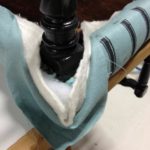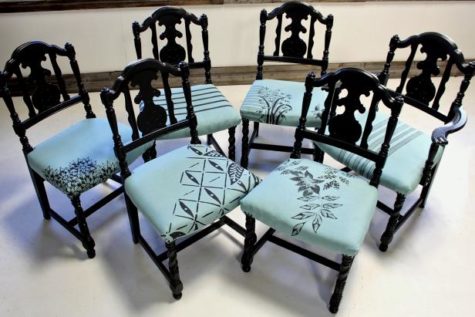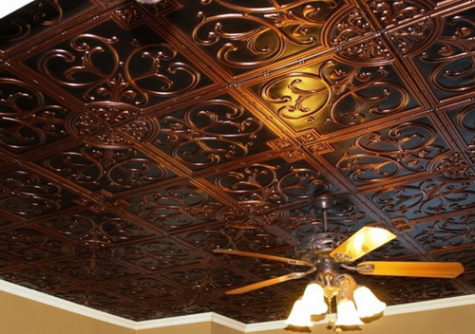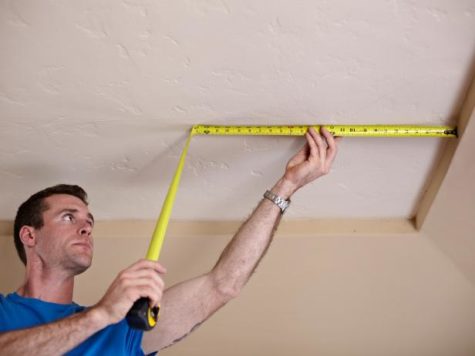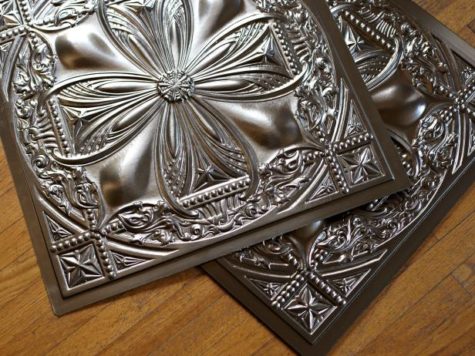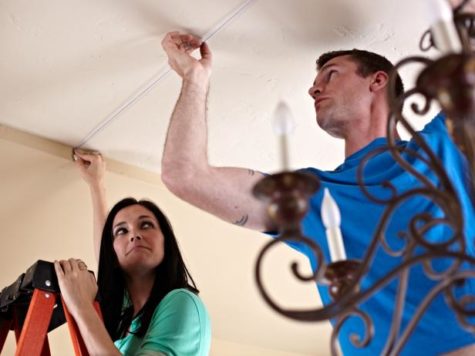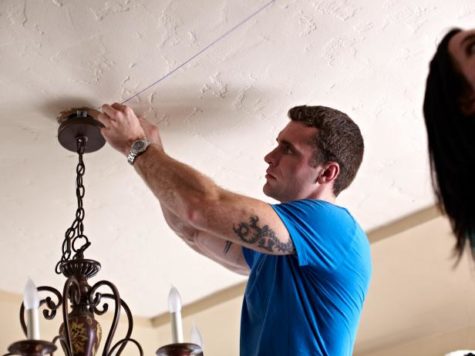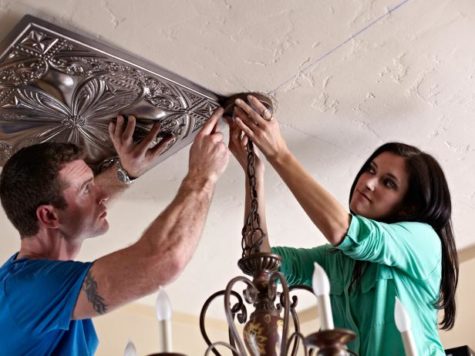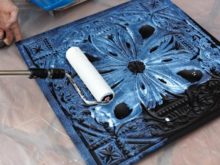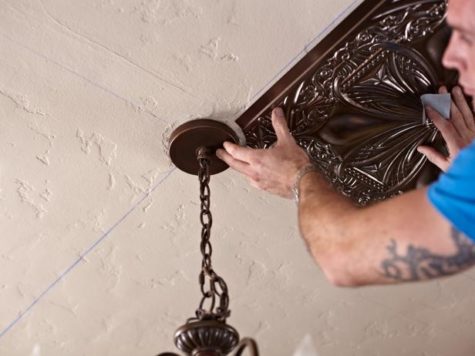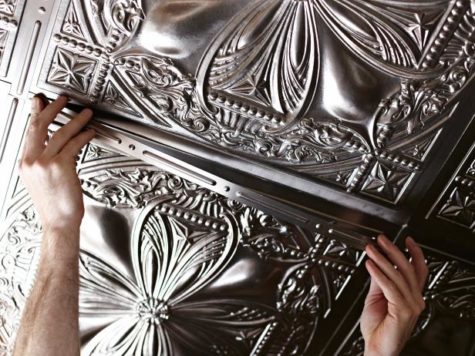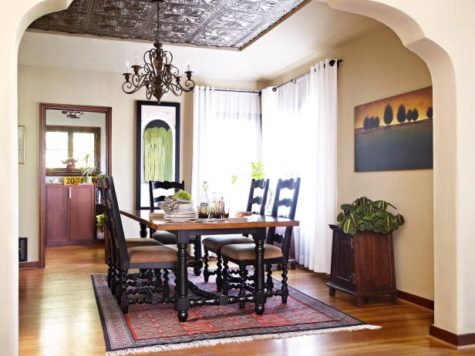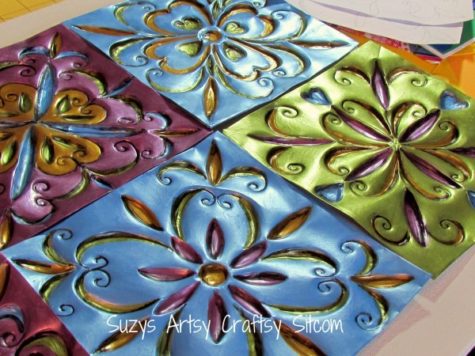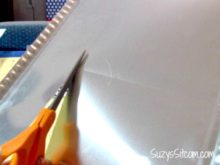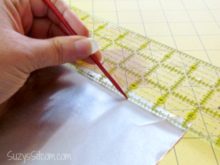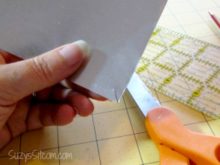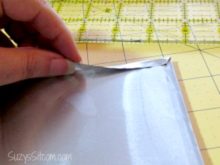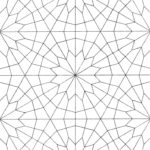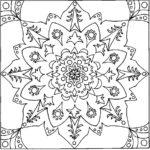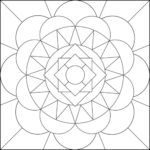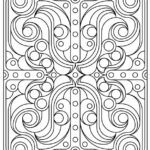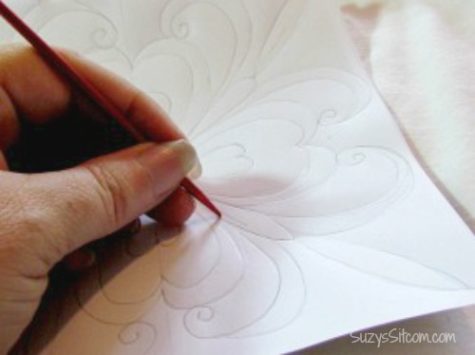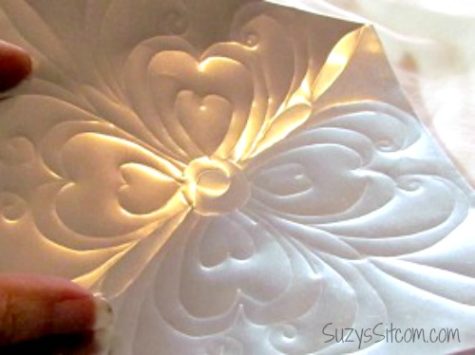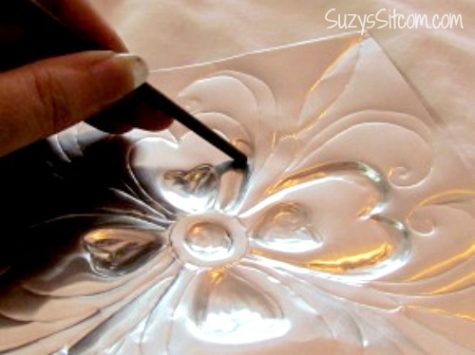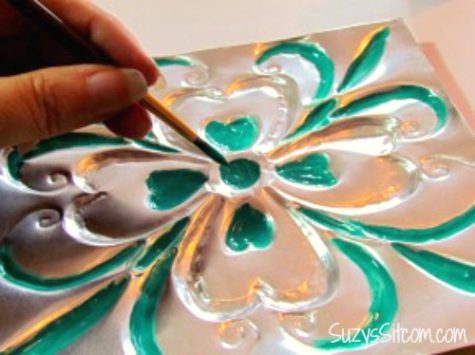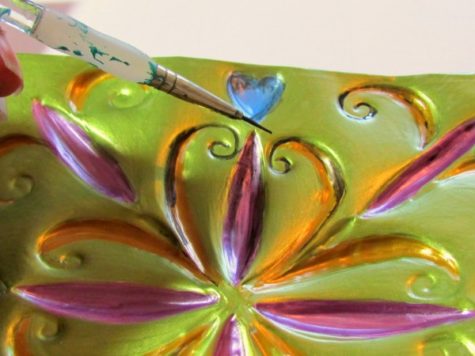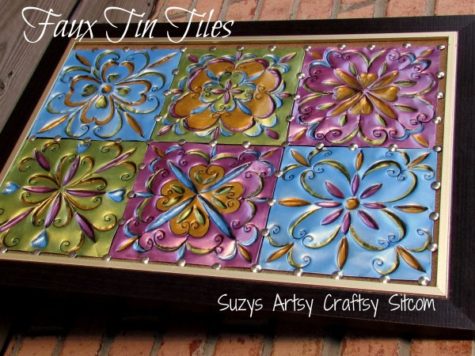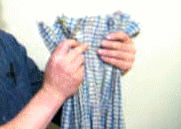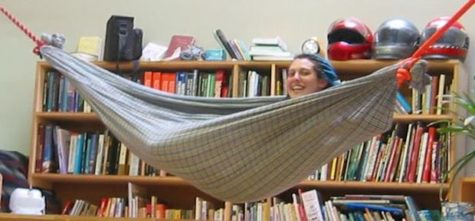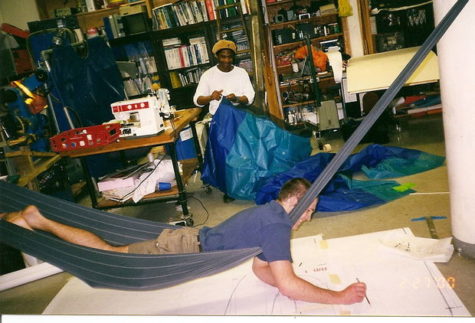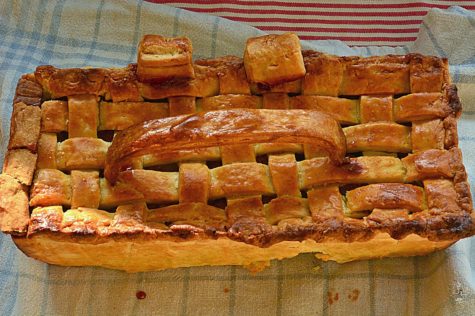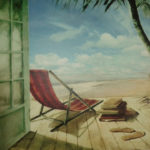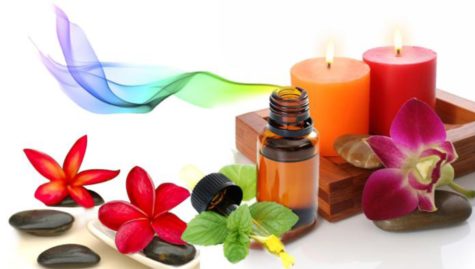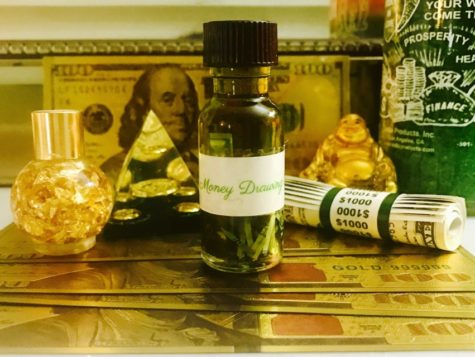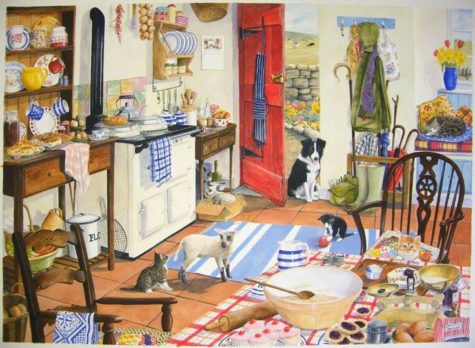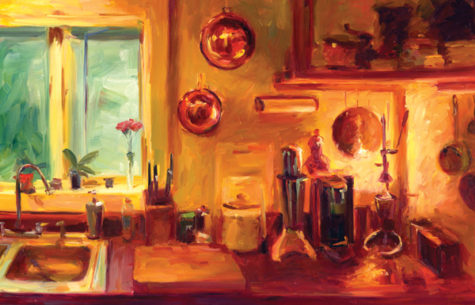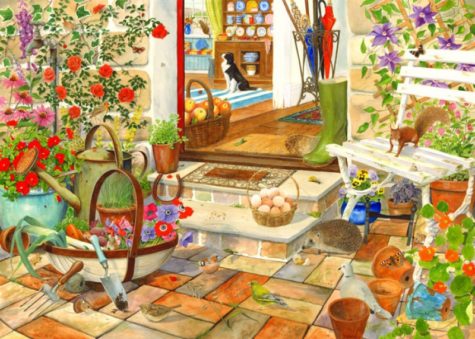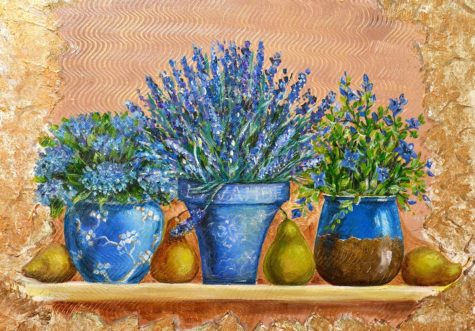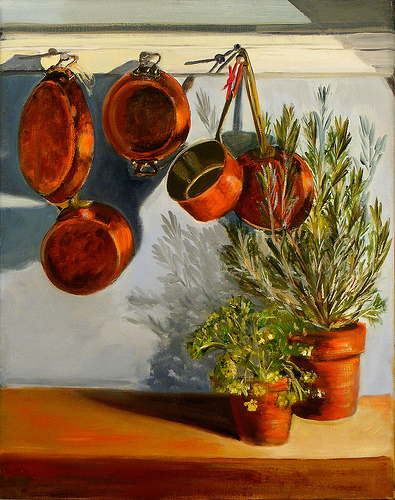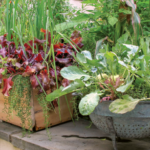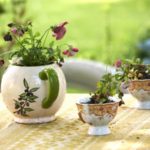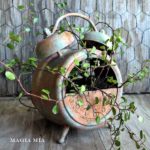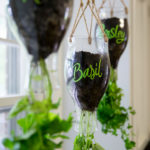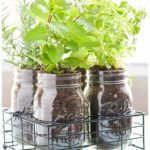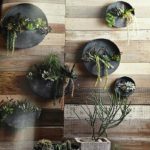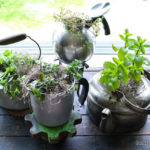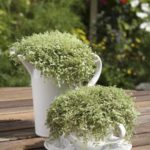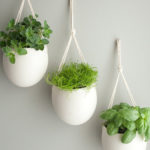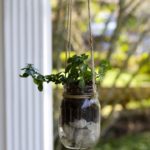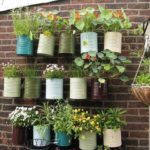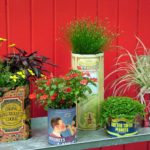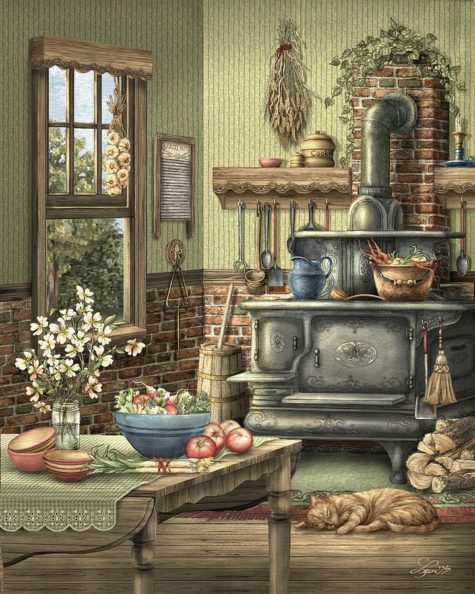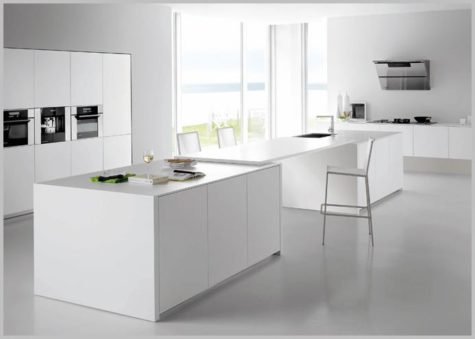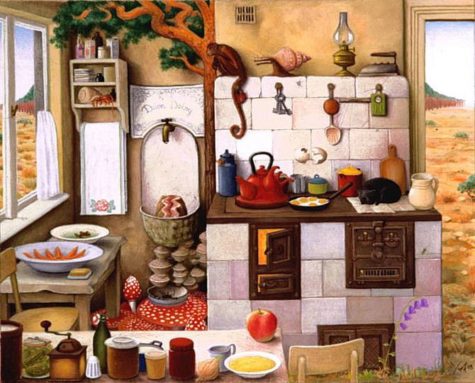Living As If
Come On In And Have A Seat
Today, it’s all about the seating. My living room furniture is the most poverty stricken area in my house with the exception of the bathtub with the missing faucet. I have been looking forward to exploring what can be done about it ever since the beginning of this particular project.
When we cleaned out our closets, I got really excited about all the cool stuff that could be done with blue jeans, and it occurred to me that it would be really fun to recover my sofa and chair with old blue jeans. For example:
Pretty cool, huh? And, sadly, it’s going to be complicated… and require courage, a sewing machine, plus a learning curve of unknown proportions. But it’s something that I want to try to do, so with that in mind, here are a variety of tutorials on how to recover sofas and chairs.
Let’s start with the easy stuff first. There are a number of tutorials for covering sofas and chairs with drop cloths. The biggest expense here is the drop cloth. On the up side, drop clothes can be dyed in a variety of cool ways, and if you were so inclined, you could even make curtains to match. Doesn’t look too difficult.
The simplest way is to just do a simple cover up by tossing the drop cloth over the couch. Voila! Even better if it has been dyed and decorated and looks super cool. The following tutorial is from Home Talk, and it shows how to stencil and dye a drop cloth to make curtains. I don’t see why this method couldn’t also be used on a throw for your couch.
Stencil and Dye Your Own Drop Cloth Curtain
We take a look at a wonderful DIY project by Stephanie Jones. She shares how she took a regular canvas drop cloth and gave it some stenciled style and color with Chalk Paint® decorative paint by Annie Sloan. She says: “I wanted to add a little softness, warmth and boho pizazz to a less-than-lovely window at our studio.”
Stephanie started by washing and drying her 4×15 canvas drop cloth. You can easily find one at your local hardware store. This step helped soften up the fabric, which allowed it to more easily take the Chalk Paint dye she would use later on.
Using Old White Chalk Paint, a roller and a large Moroccan-inspired stencil, Stephanie, along with her team of helpers, stenciled an allover pattern onto the drop cloth. To help everything stay in place as they worked, they smoothed the drop cloth onto a flattened-out box that had been spritzed with low-tack adhesive.
“To avoid seepage, don’t forget to off-load excess paint from the roller onto folded paper towels before rolling,” notes Stephanie.
Since the look she was going for was a bit faded, she chose to stencil before dyeing; however, if you’re looking for a crisper, brighter look, you’ll want to stencil after dyeing.
Next, she mixed Florence Chalk Paint® with a little bit of Provence Chalk Paint® and poured it into a large plastic tub filled with water. Stephanie used a mix ratio of 1 part paint to 20 parts water and let the loosely bunched drop cloth soak for about an hour.
Once finished soaking, Stephanie hung the drop cloth on a clothesline outside to drip-dry overnight. She then used a steam iron to soften it.
When all was dry and ready to hang, Stephanie draped the finished drop cloth over a plumbing-pipe curtain rod and scooted it to the side to hide an awkward corner in her studio. Voilà – hardware store chic!
If you don’t like that loose look, or if you’re already covering up your sofa like this, and want something a little more permanent looking, here’s a tutorial on how to make a loosely fitted slip cover (once again using a drop cloth).
Cover A Sofa With No Sew Drop Cloths
Here’s a simple tutorial from A Beach Cottage:
- Buy the biggest drop cloths you can find and then cut them up, you get more bang for your buck this way
- Take all the cushions that you can off of the sofa
- Lay your drop cloth over the sofa seat area only and roughly estimate what’s the best way to cut the drop cloth fabric to best fit the seat area of the sofa double folded and with a big enough overhang to tuck and fold into the crevices of the sofa
For example: With the drop cloth I had I simply folded it down the middle and cut it in half giving me two pieces of double folded fabric
Important note: You want the fabric double folded because a single piece of fabric will slip around much more (ask me how I know this or ask a Beach Cottage kiddo if they sat on a sofa with a single piece of drop cloth and promptly the whole lot slid to the floor)
The amount of fabric you have to tuck in is key to it not slipping and sliding around when you actually want to sit on the thing.
- Cut your fabric – don’t worry about edging you won’t see that
- Fold your drop cloth piece so it is double folded, lay it on a table or floor and smooth it out and line up the edges…trust me do this bit.
- Lay this piece of fabric over the seat of the sofa, smooth, smooth, smooth
- Push and tuck, push and tuck- all the over-hang fabric needs to be squeezed tightly into the crevices of the sofa.
Note: this tight pushing and squeezing is what will stop the ‘cover’ slipping around and falling off when you sit on it
- Lay the other piece of fabric out and put the cushions on it, now wrap up the cushions like a parcel, leaving the bottom of the cushions with the opening of the fabric
- Place cushions on the sofa and then put your hands underneath and again squeeze and push the excess fabric in tightly so the fabric won’t move around too much when you sit down.
- Add texture to the arms of the sofa with crochet, knit or stripe, smooth and tuck this tightly into the sofa too
- Add lots of pillows and cushions in different shapes and patterns for interest and depth.
Your couch or chair will look better, and hold up longer under normal wear and tear if you put the cushions on top of the couch cover. Like this one from In My Own Style:
You can also add ties at the arms to give a more finished look. I don’t think it would be too hard to figure out how to add the ties, and the cushion covers are pretty easy too. The ones in the picture are made from a bed spread, and tied underneath.
- Here’s what she had to say about the cushions
“I am all about easy and a believer in what you can’t see can easily be faked. I found white quilts on clearance at the store I used to work at. I used them to make cushion covers. I sewed covers for the bottom cushions that are semi – boxed covers that are tied on with ribbon on the bottom.”
“Here is the underside of the cushion. The cover is more like a gently fitted wrap around cover. You can see I had to really scrimp on the amount of quilt fabric I had. I was determined to make it work. It is uneven, but no one sees it. I used these same covers with the old slipcovers I had on this sofa/chair. I have washed them many times and the ribbons and uneven edges don’t matter one bit.”
Alternatively, you could also make a “couch wrap.” This is a cool idea and a great way to keep a loose couch covering in place and looking good.
This is really super simple. The hardest part will be to figure out what to use for the heaver covering. Here’s a visual tutorial:
Keeping that pesky slip cover tucked in:
To keep a one-piece slipcover from moving and getting un-tucked, push cardboard tubes into the crevices to hold the extra fabric down. Here I used a long tube that fabric came on and a tube from a roll of foil. Both are more rigid than a paper towel tube. You may have to use different size tubes depending on how big your crevices are.
Push the tubes back into the crevice as far as they will go. If slippage is still a problem, you can wrap rubber bands around the tubes. The rubber helps to keep the fabric from slipping. You could also use PVC pipe.
To hold pleats in place or any part of the slipcover that won’t stay the way you want it – use twist pins. You can find them at any sewing store or online. These are clear plastic, but they also come in decorative shapes and finishes that look like nail-heads.
You just screw it into the pleat or fabric you want to stay in place.
If you have a small couch and a large fitted sheet, you could opt for this method. I like how simple it looks, and after a bit of research, I realize that it’s actually a stretchy pre-made couch cover. 🙁
That being said, I don’t see why a person couldn’t use a stretchy knit fabric, or even a sturdy fitted sheet and do the same thing. It would probably work even better if the bottom cushions were on top of the couch cover.
If you like this tailored look, you could make a fitted slip cover yourself. I have a great tutorial for that as well. It’s from Maggie Overby Studios.
A Blue Velvet Sofa!
It is no secret that I have a thing for blue velvet sofas. I have been drooling over them for a while now but guess what? I finally got my own, well sort of…
My blue velvet sofa is actually an Ikea Hack!
Here is what I started with, my 8-year-old mid-century style sofa with brown tweed upholstery. I love the straight lines of this sofa but what was I thinking buying a brown sofa? Oh yeah, that was 8 years ago when I had small children with grubby hands… Now I have big children with grubby hands but at least they understand when I say not to eat on the sofa. (If only I could get them to listen.)
After hemming a pair Ikea SANELA curtains for a client I had a bit of fabric left over, and I got the idea that this pretty blue velvety fabric might just work on my sofa. I ran a piece of scrap through the washing machine and was pleasantly surprised to find it washed beautifully.
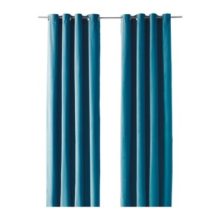 I’m sure your thinking why didn’t I just buy velvet fabric? Well, nice velvet is very expensive and the inexpensive options usually have a shine to them that just looks cheap. Also the nicer silk and cotton velvet (velveteen), needs to be dry cleaned. These curtains were machine washable, exactly what I needed.
I’m sure your thinking why didn’t I just buy velvet fabric? Well, nice velvet is very expensive and the inexpensive options usually have a shine to them that just looks cheap. Also the nicer silk and cotton velvet (velveteen), needs to be dry cleaned. These curtains were machine washable, exactly what I needed.
So my blue velvet sofa is actually a slipcover made from curtains in dark turquoise. They cost only $70 for two 55″x 118″panels, minus the grommet tops one pack gives you over six yards of beautiful velvety fabric. For my slipcover I used four panels (two packages) and had quite a bit of fabric left over.
When I started working with the fabric I also noticed that it has a bit of stretch to it, perfect for the tight-fitting slipcover I was looking to make.
This is not a slipcover sewing tutorial but I will give you a few personal pointers if you are considering sewing our own but have never sewn a slipcover before.
1. When fitting your slipcover, pin you fabric on the sofa inside out ( I like a tight upholstered look so I pin mine tightly.) Once pinned remove the slipcover and sew right along the pin line, removing the pins as you go. I do this in sections and keep adding on, usually taking the slipcover on and off several times as I sew.
Since I was using curtains I tried to take advantage of the hemmed edges. I ran the finished edges of the curtains along the bottom of the sofa it saved me the step of hemming the slipcover at the end.
If you want to take an extra step towards an upholstered look, add a strip of Velcro along the bottom edge of your sofa and slipcover so you can tuck the edges under for a tight fit.
This last tip is specifically for sewing velvet. Watch that you keep the direction of the velvet going in the same way whenever possible. Velvet will look dark in one direction and lighter in another. If you are not careful you may have one cushion looking like it is a different color than the rest.
The end results look like this… After a days work and $140 investment in fabric, I have my very own blue velvet sofa. Add few new pillow covers and I have a whole new look.
This seems like a fair amount of work, and would require a sewing machine, and I thought it might be fun to share a vision of the possibilities:
Ok, yes, that chair isn’t covered with a slip cover, but I think a person could make one that was similar. But what if your couch or your chair is a total mess and needs to actually be reupholstered? Then what? Well, if a trip to Craig’s List isn’t in your future, or if you’ve always wanted to know how to reupholster a couch or chair… hang on to your hats, because I have a tutorial.
It probably isn’t as hard as it looks. But it does have a certain fear factor, and I’m sure there’s a learning curve. So, before I share the tutorial, I’m going to share a gallery of some super cool upholstered couches and chairs. Hopefully this will get us over the hump and inspired to take on a challenge.
I love these, and with my idea for a blue jean covered couch in mind, I thought I might figure out what size the individual pieces would need to be, and then sew blue jean pieces and parts into appropriately sized squares of “upholstery” material. Here’s an example of what it might look like:
So, are we ready for the tutorial? I’m sure it’s way easier than it looks. The scariest part is that you have to take your furniture down to the bare bones… After that it’s just a matter of measuring, cutting, layering, and attaching it. Here’s a step by step tutorial from Do It Yourself Divas.
DIY Strip Fabric From A Couch and Reupholster It
I don’t exactly have $$ right now to buy the couch of my dreams, but lucky for me, my husband and I were able to reupholster this beauty. We found a living room set that included a large sofa, love seat, chair and a half, and an ottoman for $50. Engineer hubby and I totally transformed the sofa AND an ottoman for $200. We are going to go through the steps of stripping the fabric off of the couch and reupholstering the couch.
This proves that almost anything can become something new.
Use your imagination when finding the right couch. The diamond in the rough is usually really rough at first. So, look past dingy, pastel colored, floral fabrics and look at the general shape and structure of the piece to find the right candidate for reupholstering. Here are some things to consider when looking for the right couch:
Step back and look at the couch to determine how many “sections” you will be reupholstering. The “visible” sections for my couch were arms, back of back rest, front of back rest, sides (under arms), front bottom, pillows, and cushions. There were two “hidden” sections which included under the couch and under the seat cushions.
Typical upholstery fabric is sold on a large bolt that is about 54″ wide. Knowing this may help you estimate how much fabric you will need per section.
- Cost to reupholster.
A sofa can take anywhere between 12-20 yards of fabric depending on its size and shape. Keep that in mind when choosing fabric; things can get pricey. We used 16 yards on our couch.
- Is the structure sound?
Can I reuse the tack strips or any upholstery hardware? Will the feet need to be replaced or renovated? Are the foam cushions worn out or do they have plenty of body left? Is this couch more comfortable than a $200 couch I could buy new? Will any odors remain once the fabric and batting have been removed?
Our couch was easy to reupholster because the seat cushions and the pillows were detached. I imagine it would be harder to reupholster a couch that had cushions and pillows sewn onto the body of the couch, but I’m sure it can be done with a little determination.
You will need:
- Couch
- Heavy Duty Upholstery Fabric
- Inexpensive fabric to use in “unseen” places, i.e. muslin
- Staple Gun/ Staples
- Cereal Box Cardboard (we will explain later)
- Batting
- Spray Glue
- Zippers, thread, or anything else needed to sew cushion covers
- Any replacement items for worn out material, i.e. foam or feet
- Pliers
- Hammer
- Sewing Machine or a friend who has one
- Fabric Scissors (hands down, the best fabric scissors.)
- Measuring Tape
- Any other job specific tools
Here’s the criteria we used to find the right fabric…
No continuous pattern. Patterns, such as stripes, can be difficult to line up during reupholstering and may require more material to make patterns align.
Fabric with a sturdy weave. This may go without saying, but make sure to get a durable fabric that is meant for furniture if you want your legacy to last.
How much? Remember the sections I talked about? Measure the length of each section and add a few inches extra on each end so you have enough fabric to work with. It would be bad to not have enough, so measure a little generously. We didn’t have to worry about the width since 54″ wide fabric fit each section on our couch perfectly. As I mentioned above, we used 16 yards on our large sofa.
- Price point.
We are on a budget and the fabric had to fit within that budget, so we didn’t waste time looking at fabric above a certain price point. Our fabric was about $9 a yard.
Strip it down
Unfortunately I didn’t take a picture of the fabric on the sofa before is was ripped off. Hubby was anxious to get going and started ripping off fabric, batting, and foam, so to give you an idea of what it looked like with it’s original fabric, here is the love seat.
Here is the sofa all stripped down with the seat cushions and pillows set aside. Engineer hubby ripped off the fabric, the batting from the whole couch which he thought was holding in all the odors. He also removed the foam from the arms. When we realized that foam is really expensive, we salvaged the original foam and “Lysol-ed” it liberally 😉 All that remained of the couch when we were done stripping it, was the wood structure, cardboard on the arms, springs, the blue mesh material covering the springs, foam (foam not pictured), and metal tack strips.
In our case, the next step was to put the foam back on the arms. Foam only covered the front, sides, and tops of the arms. Sadly, I don’t have a picture of this so just use your imagination. I did however attach a photo of a roll of foam you can purchase. It’s called High Density Urethane Foam 1″x24″x30″.
Remember, any staple dimples or irregular shapes in the foam may show through when you cover it with new batting and fabric, so use spray glue on the back and try to staple it nice and evenly on the edges.
New batting stapled into place. You will notice some dimples caused by the staples, but these were not too severe and were easily smoothed out once the fabric was stretched over it. We used about 3 packages of 8oz batting that had been pre-cut for a queen size quilt. (10oz would have been better but it wasn’t in stock). You can buy it at Walmart.
Roughly cut it into pieces that cover each section of the couch. Sections meaning, front of arms, around each arm, front of couch, and back of couch. Just go for it, it doesn’t have to be perfect.
Notice the feet have been removed. Also notice all the yucky stuff that came out of the couch when it was stripped. Among the “treasure” was 75 cents, “the lost sock”, cocoa puffs, the top hat from a Monopoly game, and much more.
We first attached muslin over the seat cushion springs/base (see finished product below).
Locate areas on the frame of the couch where you can staple the muslin. Cut muslin to fit. Be generous and give yourself plenty of fabric to work with.
Use the cardboard trick, described two paragraphs below, along the front edge of the couch in order to hide staples and give a uniform edge.
Fold the muslin over the stapled cardboard strip and tuck under the arm and back.
Pull the muslin tight and staple to the frame. You will be working under the couch at this point in order to staple the muslin to the frame.
Drape a large piece of fabric over the arm of the couch and staple in the joint. Notice how we have a lot of extra fabric hanging off the front and back of the arm. That fabric will be folded into a fan later on.
Use the cardboard trick to attach the fabric to the front of the couch. The cardboard makes it so you don’t see any staples and you will see how.
- Place the fabric “right side” to the muslin and a couple inches away from the edge of the couch.
- Cut a few strips of cardboard (cereal boxes work great) about 1/2″ wide and as long as the couch goes.
- Staple through the cardboard and the edge of the fabric into the wood frame.
Flip the fabric over and you have a nice, clean, finished look for the front part of your couch.
Staple the fabric to the bottom. Wrap and staple the fabric around the sides of the couch about 5 inches.
Notice the front bottom piece. It is tightly secured with staples, no raw edges showing. The back fabric piece is just draped over the back for fun at this point; the next step is to work on the arms again.
Arms. This is the trickiest part.
- Start from the outside of the arm and work your way up, around, and down creating small folds.
- Staple as you go; you can always pull the staples out and readjust.
- When you get close to the end, fold the fabric under to give it a clean finish and staple in place.
- Don’t staple on the front of the couch, just pull the fabric tight and staple it in place on the sides of the couch.
- The fold at the bottom of the arm should cover the fold you made earlier on the front bottom piece.
Trim away bulky fabric as needed. Notice where we stapled. All these staples will be covered by the side fabric piece.
Move to the back of the arm and follow the same process creating a fan with the extra fabric.
We applied a little bit of super glue behind the small fan folds to keep them in place. So far so good four months and three kids later!
Here is an overview of what you will be doing to attach the side piece. Notice the order.
- First, use the cardboard trick to attach fabric under the arm curve.
- Second, staple fabric around the back of the couch and staple in place.
- Third, use a tack strip to secure fabric in place on opposite side. This little strip of metal allows us to create a finished edge much like the cardboard trick.
- Along the edge, push tack strip through the back of the fabric.
Fold it over so that the back of the tack strip is against the back of the fabric.
Hammer the fabric and tack strip into place along the side. Wrap and staple bottom edge of fabric onto the couch.
This is what the side should look like finished.
Attach fabric to the “front” of the back rest.
- Use cardboard trick to staple fabric in place along the top of the back frame.
- Flip fabric over to the front of the couch, pull it tight, tuck in bottom, and staple to frame. Make sure the “right side” of your fabric is showing once you flip it over.
- Fold under raw edges on the sides and staple to frame from behind the couch.
Add back piece.
- Use the cardboard trick along to top of the back. Flip fabric over.
- Begin working on the bottom.
- Wrap bottom fabric under couch and staple. The staples under the couch will be covered by muslin later.
- Then work on the sides of the back piece using tack strips. All staples should be hidden.
Here is a closer view of the back rest so you can see more clearly what we did and where we used the cardboard trick. Notice that the “front” back piece actually wraps over the top and down the back of the couch a few inches. Then the “back” back piece is stapled on top of the “front” back piece.
Attach the muslin to the “unseen” underside of the couch. No need to make it look pretty. Just cut a piece to fit the bottom and just staple it on. Start on one side and work your way around. Then attach the feet.
Here are the feet Engineer Hubby designed and made since we didn’t like the original feet. We really liked the blonde look, but you could always stain them.
We added the center block for extra support.
Wrap cushions in new batting as pictured.
Use spray glue to secure the batting to the foam cushion. Now for the cushion cover… I used THIS tutorial.
How to Make a Cushion Cover
Start with these four pieces:
- The two main pieces-top and bottom of cushion
- The middle band
- The zipper piece you created from this zipper tutorial
To get your top and bottom of your cushion, set your actual couch cushion on top of the fabric you want to use and trace around it with a fabric pen. Then cut it out, about a 1/2-1″ out from the line you drew (for your seam allowance and piping.) Cut two.
Note: If you are tracing an asymmetrical piece you will need to make sure that you keep the RIGHT sides opposite. To sew piping onto your fabric, follow this piping tutorial. The middle band you create by measuring the height of the cushion (for the width) and the perimeter around, minus the zipper length. Give yourself several (like 5-6) extra inches tacked onto the perimeter.
I’m not going to share the whole tutorial here, but I think this will give a basic idea of how to do it. The full tutorial can be found at Honey Bear Lane.
The finished product looked like this:
Make Pillow Covers.
I made simple envelope pillow covers so I didn’t have to sew on a zipper. I used this tutorial from Make It Love It.
I didn’t want the corners of my pillows to poke out, so I just sewed them down into the form.
All done! I promise this look isn’t too hard to achieve. Just have patience and always over estimate on your fabric so you have enough.
Wowsers! Well, if that looks too complicated, you could always knit something!
Knitted upholstery !!
Your cat will love it, I promise! LOL! Here are some more knitted sofa and chair covers just for fun:
Or You Could Just Paint It!
Here’s a video about how to paint a velvet sofa and keep it soft! If your sofa or chair is in decent shape, and still comfortable, maybe this is a viable option!
And yes… it’s true! You really can paint your upholstered furniture!
Painting velvet requires more patience than painting other fabrics. Maison Decor gave the chairs three coats of paint. They watered down the paint slightly by using a wet brush and spritzing the velvet lightly with a water bottle mister. Watering down the paint helped it spread evenly. Amy explains that watering also kept the fabric from soaking up too much paint, which can lead to cracking.
“The nap of the velvet needs to have the paint worked into it, but not so as to disturb the way it lies,” Amy adds.
Following the three coats of paint, with drying time in between coats, Amy and her team sanded the surface with 600 grit sandpaper, which helped restore the fabric’s smooth feel. Then they waxed the upholstery, which created a smoother finish and protected the chairs.
Amy explains that she used a 50/50 mix of Annie Sloan’s Soft Clear Wax and odorless mineral spirits, and applied the mixture with a wax brush. They waxed in the direction of the nap, wiping away excess. The key element was allowing the wax to dry completely, which required three weeks.
As for people skeptical of sitting on waxed velvet, Amy assuages any fears. “Often people ask, can you sit on a waxed chair? Won’t it come off on your bottom? The answer is no!” She attests, “In our house we have a pair of painted and waxed chairs in our dining room, and it’s been two years now of daily use with no wearing off of paint or wax. Now that’s something I can feel comfortable recommending to everyone.”
Ok… I think that’s about enough of that!
Bedroom Feng Shui
The bedroom is an obvious respite from a tiresome world for many reasons: It provides comfort, warmth and familiarity in the face of great stress, hard work and exhaustion.
While it’s certainly wonderful to have a room full of the furniture of your dreams, it’s even more important to address the feng shui characteristics of your bedroom. As pleasing as material items are, the placement of certain items, the colors and even the materials can make an enormous difference in the state of your life affairs.
Bedroom arrangements in feng shui embrace the primary function of your bedroom, which is to serve such activities as sleep, relaxation and sex. Feng shui principles incorporate the right elements and furniture placement to enhance your overall health and well being. These principles ensure the continued flow of chi energy through the balance of yin (female) and yang (male) energies.
Feng shui in the bedroom can bring new and unexpected harmony to life. The benefits range from the financial to the professional to the romantic.
The idea of a perfect feng shui bedroom may bring different images to different people, but they will all have one thing in common – pleasure and dreaming as the keywords. In a good feng shui bedroom, every item will reflect the clear intent for love, healing, and relaxation.
What do you think?
I collected a wide variety of beautiful images of some spectacular bedrooms. Beautiful as they are, most of them would definitely NOT give me a good nights sleep, or a feeling of security, safety and complete restfulness. Here they are. What do you think?
And now that I’ve completed the post and read all the feng shui information, I have a pretty pretty good idea as to why they don’t “feel” quite right for a cozy and comfortable night’s sleep.
What to Do
Your bed should be placed in the “command” position or far away from and unaligned with the door. The door should be visible from the bed. This placement encourages the natural flow of chi, which in turn promotes restfulness, sleep and motivation; all of which are conducive to a successful professional life.
Early to bed, early to rise and to enjoy the sunlight. Natural light is the ideal way to start the day, not only because it releases such positive energy, but also because it raises serotonin levels, which can make your workday more productive.
What Not to Do
Don’t place clutter of any kind, especially work-related items,underneath the bed. Any type of mess has its own unique, negative energy that can disturb everything from sleep to health.
Don’t place a desk in the bedroom. If this is unavoidable, then don’t pile the desk with paperwork, bills and other work or finance related items. If these items must be in the bedroom, use a fabric or a folding screen to separate the area from the rest of your bedroom, which should be your resting area.
3 Steps To A Good Feng Shui Bedroom
So you’ve heard a lot about creating good feng shui in your bedroom and you know that it is so very important to have good energy there, right? You might also be a bit skeptical about feng shui, or maybe intrigued but convinced that it’s impossible to create good feng shui in your bedroom.
Here come 3 easy steps (read: rules) to help you get an easy grasp on good bedroom feng shui and even enjoy it in your bedroom on a constant basis!
- Step 1 – Create A Good Energy Foundation
What does a good feng shui energy foundation mean? It is basically a set of building blocks on which all other good things can be created. There are several factors that make a good feng shui energy foundation in your bedroom.
- The first one is the abundance of fresh, clean air.
- Second is the quality of natural light.
- Followed by the “no clutter” rule and the “no electrical equipment” rule.
These are firm rules like “no computer in the bedroom” or “no cell phone close to the bed”, and definitely “no TV or exercise equipment in the bedroom”.
Why? Mainly because they create high EMFs for which you pay dearly (often without understanding why you are not feeling well). They also slowly but surely destroy all the goodness you want to have in your most intimate space – the energy of genuine love, deep connection and sexual healing.
Basics like keeping the window open for a fresh air flow, letting natural light in, not storing any clutter in your bedroom closets or under the bed have to become just that: basics that you do not think about, argue or make it hard to implement.
- Step 2 – Put Your Bed In The Best Spot
Find the best furniture layout with your bed in the so-called commanding position and/or facing one of your lucky feng shui directions.
Have access to your bed from both sides and have (no matter how small) nightstands on both sides of bed.
Be mindful not to have a mirror facing your bed or any sharp angles pointing at you while you sleep. Understand what makes a good feng shui bedroom layout and see if yours is close to having good feng shui.
If you feel like moving your furniture from time to time, this is perfectly fine, just be sure you know the best spots for your major furniture pieces. A good placement of furniture – especially your bed – in your bedroom will allow for a stable and harmonious flow of energy which every room needs (and more so a bed-room!)
- Step 3 – Beautiful Color and Decor
Beauty is like food, energy-wise. An ugly space can literally poison your energy, while a beautiful, harmonious one will elevate, nourish and heal you.
Do your best to create and maintain a sense of beauty in your bedroom and have only items that you love to be surrounded with.
Follow basic feng shui colour guidelines, such as the one that recommends earth colour tones as best colours for the bedroom (look at a wide range of colours: from deep chocolate browns to light sand colours), and be sure to add sensual, romantic touches in a fire feng shui element colour (red, pink, magenta, lavender or coral orange colours.)
Bring only art that makes you happy and inspired, use comfortable natural bedding and have either candles or dimmer switches to keep the energy soft and nourishing.
Your bedroom is the outward expression of your love for yourself, so start loving yourself more as love leads to all things good, no matter you are sharing your bedroom with a loved one or only with yourself.
Ultimately, love does not come from outside, but is rather an expression of your own ability to feel love. So express it more, as well as nourish and strengthen this expression with good feng shui in your space.
Good luck in creating an excellent feng shui bedroom!
To Encourage Career Growth
While the right design tips will go a long way in positively influencing your professional life, several elements and objects in particular encourage growth in this area. They include:
- Water:
Water has a powerful effect on career growth in feng shui. Its dual energy and serenity mirrors the very qualities necessary for a successful professional path. Despite that, its presence in the bedroom is generally frowned upon since it generates too much yin energy. Place a small table fountain or an elegant piece of artwork depicting water in your home office or North sector of your home, but never in the bedroom.
- Mirrors:
Mirrors are equally beneficial as they relate to careers and feng shui. However, they should not directly face the bed since they can drain your energy. Mirrors are also associated with the water element, which shouldn’t be placed in a bedroom. According feng shui guru Lillian Too, the purpose of mirrors is to reflect negative chi energy away from you.
- Colors:
Yellow is a stimulating color that easily keeps your brain focused, while green is exceptionally calming. Colors like red, purple and gold are heavily associated with wealth. However, these colors are dramatic and deep, and hence should not be used in abundance. Instead, use them as creative accent pieces for your bedroom’s gentle color scheme. Lampshades, candles and small trinkets are excellent items to touch with these brilliant hues.
- Other Considerations:
The key to success in both finance and career is to increase the amount of positive energy in your life. This can only be accomplished if your bed is stable and supported by a strong headboard to protect your personal chi as you sleep.
Placement of The Bed
While the aesthetic elements are the first things generally noticed in a bedroom, the most important feature is truly the position of the bed. As the largest piece of furniture in the room and the place where you rest, the bed is particularly important. The wrong placement can jeopardize your health.
- The ideal placement for your bed is diagonally across from the door. This placement gives you privacy and also allows you to see anyone entering your bedroom.
- Never place your bed directly across from the door. This placement puts you in a sleeping position where your feet point toward the door. This is known as the coffin position and is the worst possible position since it’s considered the position of death and is very inauspicious.
- Avoid placing your bed in front of or underneath a window since chi energy enters and leaves a room through the windows. If your bed is in this pathway, the chi energy will flow over you as you sleep, causing a restless sleep.
- Don’t place the mattress directly on the floor. This is very inauspicious since you’re in the main pathway of the chi energy.
- Floating beds look very appealing, but lack the feeling of support and safety. Choose bed frames with proper support so that you can feel more relaxed.
- Having a headboard against the wall gives you a subtle sense of security that’ll help you fall asleep easier. This has to do with our survival instincts and sense of security.
- Never place your bed on a wall shared by the bathroom, or kitchen.
Note: If the size or configuration of your room, especially window location, prevents you from following feng shui guidelines, then you can apply corrective feng shui cures and remedies.
One easy solution to inauspicious wall placements that cannot be avoided is to use a thick headboard for your bed, which acts as a buffer, and can minimize wanted noise that disturbs your sleep.
Additional Bedroom Furniture
Everything you place in your bedroom has a profound effect on the flow of chi energy. You want to ensure auspicious energy flows easily between the bedroom door and windows. By keeping this natural pathway free of clutter and large pieces of furniture, such as chairs and armoires, you’ll prevent stagnant chi and enhance all activities that take place inside your bedroom.
The bedroom is the most yin place in a home. Think of a comfy cave: dark, cozy, small. There should be a sense of enclosure, and freedom to move within it. Keeping that goal in mind, there are three main rules for your bedroom, which advise against:
- Placements that block natural pathways and doorways.
- Cluttering the bedroom with too much furniture.
- Placements that create poison arrows directed toward the bed.
Poison arrows are created whenever you place an armoire or dresser so that the sharp edge of the corner is angled directly at the bed.
If you can’t avoid placing furniture so that it create poison arrows, then you can remedy this by suspending a multi-faceted crystal ball from the ceiling so that it is between the poison arrow and the bed. Another solution is to use a runner for a a dresser to conceal and soften the corner edges.
Don’t place large furniture by your bed. Some people like putting large bookshelves right by the bed. It provides easy access to books for those who enjoy reading right before going to sleep.
Small bookshelves are fine. However, if you have bookshelves that are more than six feet (180 cm) tall, then you are better off without the bookshelf. The reason is that the large furniture can give you that invisible pressure that makes you feel oppressed. It’s similar to the feeling you get when you drive right next to a truck or when you’re standing right under a monumental structure.
You can place nightstands on either side of the bed; just be sure that the nightstand isn’t higher than the mattress, since this creates a poison arrow targeting the bed. Chairs and other pieces of furniture should also be set in the bedroom according to the same guidelines.
If your armoire doors have mirror insets, then you want to place it where it doesn’t reflect the bed. If this is unavoidable, then you need to cover the mirrors when sleeping.
Mirrors
Mirrors can be used in a bedroom, but with great discretion. There are placements you want to avoid such as placing a mirror directly across or over a bed. You simply don’t want to reflect the bed in a mirror. This invites a third party into your marriage or relationship and results in infidelity. Some practitioners believe that a mirror can also startle the soul when it steps from the body for its nightly astral travels.
If you must place your bed so you don’t have direct line of sight of the bedroom door, you can place a mirror so that you can see the door from the bed, just be sure not the mirror doesn’t reflect the bed.
Clutter
To create chi balance, you must first rid your bedroom of all clutter and work-related equipment. Dirt and dust create stagnant chi which can result in such things as illness, disharmony within your relationships and loss of wealth.
One of the biggest stress producers in most of our homes is… CLUTTER! Even if you consider yourself a hopeless clutterbug, give yourself the gift of creating a clear and clean sanctuary in your bedroom. Be ruthless!
Fresh Air
Open the windows often or use a good quality air-purifier to keep the air in your bedroom fresh and full of oxygen.
Be mindful of the quality of air in your bedroom. You cannot have good feng shui in your bedroom if the air you breathe in is stale and full of pollutants. Please note, though, that plants in the bedroom are not good feng shui unless your bedroom is fairly large and the plants are located far from the bed.
- Essential Oils
Essential oils can also help you purify the air in your bedroom, but be sure to choose actual essential oils (they have healing properties) vs fragrance oils (which are mostly toxic).
If you are new to the world of essential oils, you can first look into the basic properties of most popular essential oils and choose which ones you would like to use in your home. There are many essential oils that are easy to love and use, lavender is certainly the number one essential oil because of its versatility and wide array of healing properties.
Your bedroom, for example, will definitely benefit from soothing sensual scents of lavender, rose, ylang ylang, or jasmine, while a home office can improve its energy with a good dose of peppermint, clary sage, or lemongrass in the air. I love diffusing a mixture of eucalyptus, peppermint, and some citrus oils (tangerine, grapefruit or orange) in my office space, especially in colder season when I cannot have the windows wide open.
Once you have made your choice of pure essential oils for feng shui purposes, how do you actually use them?
Spraying an essential oil mix into the air is the easiest, quickest way to change the quality of energy around you. There is a variety of essential oil mists on the market – from love energy mists with soothing, sensual oils to travel jet lag mists to help strengthen your immune system.
If you want to make your own mix, all you need is a spray bottle, preferably glass. Next, fill the bottle with pure water and add several drops of essential oil. Shake it and test it, see if you like the scent, then maybe add a couple more drops.
The easy to follow guideline is 8-10 drops of your favorite essential oils to 8 oz water (I always tend to make it more concentrated, though, but it depends on the oils I am using). Experiment and find the right ratio for you. Making your own essential oils air spray is really easy, and you can just use it in your space as needed.
Desks and Work Spaces
Work and sleep don’t mix, so don’t place a desk in your bedroom. This is a poor idea for a feng shui optimized bedroom. For good health and rest, keep your work separate from this rest area.
If your bedroom must also double as a work space, then select furniture such as secretary or other cabinet style desk that can be closed and out of sight when not being used. If you live in a small space, you can try dividing your work area and your bed with a curtain.
Electronics and Television
Electronics are out, too. They contribute electrical currents to the room that can disrupt your sleep.
Most feng shui experts believe that all electronics should be banned from the bedroom. “I want to say a special word here about televisions. Get it out of the bedroom! You’re inviting strangers into your bedroom every time you turn the TV on, bringing that often harsh outer world into your private chamber. Perhaps more importantly, you are distracting yourselves from each other.”
In a practical world, televisions and laptops are often a necessary evil in your sacred bedroom space. It’s impossible to get away from technology, so a compromise solution is to place your TV in an armoire or other cabinet that can be closed when you’re finished watching TV for the night. Close your laptop when not being used and store inside a night stand or drawer. That way they are at least out of sight and your space while you rest.
Some say that TV has a similar effect as a mirror, however, most of us use LCD’s now, and I can hardly see any reflections from that. So I don’t think the mirror-effect applies anymore.
Though some claim that TV helps them sleep, the light and sound from the TV are actually causing us to stay awake longer than needed. The light from the TV is a form of artificial light that has the tendency to keep us awake by delaying the release of sleep-inducing hormone, melatonin. Further, whatever show or movie that you’re watching can also invoke strong emotions that’ll keep you awake longer than usual.
Some experts also mentioned that electronics in the bedroom, such as TV, brings electromagnetic field that can potentially harm us. I’m not sure how it affects our sleep, but I do know that strong electric currents create strong electromagnetic fields that can cause many health consequences, which is why you shouldn’t live close to power lines.
Color Matters
You can decorate the bedroom walls in color, texture, patterns and artwork. You can use feng shui compass directions to aid you in color selection. Choose colors that are restful. Soft colors like cream, peach, and pale pink are good choices. A soft yellow is considered particularly beneficial. Blues are nice.
The best feng shui bedroom colors for are considered the so-called “skin colors”, and we know the colors of human skin vary from pale white to rich chocolate brown. Choose colors within this range that will work best for your bedroom decor.
Avoid vibrant colors as the main theme of your bedroom. These colors include bright orange, pink, and yellow, and they are not suitable for your bed linens, curtains, and your bedroom walls.
Brighter colors tend to shout out at you, which can amplify your emotions and give you more energy. They also reflect more light, which is known to disrupt your biological clock and keep you awake. If you desire to use bright colors, you may need to dim down the bedroom lights to balance out the brightness. Another method is to use the bright colors as accents rather than the main theme.
Color is usually used to enhance a particular kind of energy (element), or to balance the yin/yang relationship. Some feng shui consultants work with color a lot, others not so much, saying that there are more powerful ways to affect the energies. Personally, I love color and use it a lot because it can have a tremendous impact on how we feel in a space.
Choosing Art For The Bedroom
Choose your bedroom art wisely, as images carry powerful energy. The best feng shui advice for choosing bedroom art is to choose images that you want to see happening in your life; images with nourishing, happy and beautiful energy. Unless you enjoy being sad and lonely, do not use sad and lonely images in your bedroom.
Best art for the bedroom are images related to the emotions of love, happy relationships, body healing, and intimacy.When you select wall art for your bedroom, choose subjects that are happy and restful. Nature images and themes in twos, such as two mandarin ducks, swans, or peach blossoms, promote romance and a relaxing atmosphere.
Humans have an amazing ability to recognize faces and familiar patterns. It is suggested that you remove animal heads (hunting trophies), pictures of faces, and other odd decors from the bedroom, because they can keep you distracted and awake.
Being surrounded with unpleasant images, such as pictures depicting violence or sorrow, can invoke strong emotions that can keep you awake at night. Worse, these emotions can carry over to your dream, making you wake up tired the next day.
If you have any pictures that invokes strong emotions, remove them. Pictures that soothe and relax you are more suitable for the bedroom.
The Ceiling
If you have a choice, avoid putting your bedroom in rooms with sloping roofs and or low ceilings. Low ceilings give an invisible pressure that makes most people feel uneasy. The same is true with slanted or sloped ceilings.
Though the feeling is very subtle, it does give you some sort of unease or feelings of being compressed (worse for claustrophobics), and those feelings carry over whenever you go to bed. This is especially true if you sleep on the side with the lower ceiling. An easy solution is to use a canopy bed. The four pillars that surround you while you sleep have the tendency to make you feel more “supported” from the downward pressure of the ceiling.
A canopy can also provide protection from other negative ceiling elements, like bright light fixtures, a bathroom on the floor directly above you, and a ceiling fan.
Avoid placing your bed directly beneath exposed beams. Just like the sloped or slanted ceilings, sleeping under a beam can also give you a subtle feeling of unease. Beams give you discomfort because it is similar to having a sharp object pointed at you. Also, they can give you a feeling that your space is being chopped up, which can be highly distracting.
The size and shape of the beam, as well as the height of the ceiling, can all play a role on how much discomfort you feel. The easy cure to this is to use a canopy bed. Or you can add a pair of flutes with red ribbons at an angle so the open end is pointing upwards along the overhead beam.
If you have anything hanging right above your bed, such as a chandelier, you will get that same feeling of discomfort because you may not feel 100% safe, and the effects are worse if it is hanging right above your head. The cure is to remove that furniture and place it somewhere else, like right above a dining table, where people will not reside right under it.
- Here’s a nice little gallery of cool canopy beds:
Lights and Lighting
Have several levels of lighting in your bedroom, or use a dimmer switch to adjust the energy accordingly. Good, appropriate lighting is very important, as light is our #1 nutrient and one of the strongest manifestation of energy.
Candles are the best feng shui bedroom lighting, as they not only clear the energy but also create a very intimate, warm and healing atmosphere. When buying candles, check to be sure your candles are toxin-free.
Avoid using harsh overhead lighting. Bright lights keep us awake and can disrupt our sleep pattern. It is true even with artificial lights and especially true for LED lights, which is known to create “light pollution” that causes sleepless nights (this is also the reason why it’s bad feng shui to sleep with your head under a window).
Try to use dim lights with a soothing color, as it can provide the atmosphere and environment as you are getting ready for bed.
Even a little bit of lighting can disrupt your sleep, simply because light can penetrate our eyelids and influence our biological clock.
You are in complete control of the lights in your bedroom. However, you have little or no control of the lights outside of your home. That is why you need blinds and curtains that can completely block out the light from the outside. If your current blinds or curtains have light shining through the cracks at night, it may be worthy to invest in double layered curtains to improve your sleep sleep.
Plants and Greenery
Remove the plants from the bedroom. Plants have an “evening complex” where they grow taller at night. The vibrant growth energy gives off quite the opposite energy you want when you’re asleep.
Also, most plants release more carbon dioxide than oxygen at night. Carbon dioxide has the ability to affect your sleep quality, and is another reason why plants should not be in your bedroom.
Cures and Elements
You can activate various areas in your life by placing feng shui elements and object in your bedroom. For example, you can activate your wealth area in the southeast sector of your bedroom by placing three metal Chinese coins tied together with red ribbon. Improve or enhance your marriage or relationship with a carved pair of rose quartz mandarin ducks on your nightstand.
Bedroom Location
The ideal location of your bedroom is far from any doors that open to the outside world. For this reason, it’s best if your bedrooms are located at the back end of the house, or or at the opposite end from the street.
The main reason is that bedrooms at the back-end are usually much more quiet. Your sleep is less likely to be disrupted from the sound and movement of anything that roams in front of the house, which includes both human and automobile traffic. Because of this, you will also enjoy higher levels of privacy.
If possible avoid placing your bedrooms at the top of the garage. When your bedroom is on top of a garage, your sleep can be disrupted by a variety of factors, including the smell of car exhaust, noise from garage door movements, insects that creeps into your bedroom, and warmer bedroom temperatures. If these four factors are non-existent, this bedroom location should be fine.
Avoid bedrooms under highly active areas. Active areas can include restrooms, entertainment rooms, or other areas where humans are active instead of sleeping peacefully. This usually does not apply to apartments and high-rises, because the bedroom is likely below another bedroom, and the flooring is usually thick and sound-proof.
However, single family homes are a different story. If your bedroom is right under a restroom, your sleep can be interrupted whenever someone flushes the toilet. Or, if you live right under a room of a teenager who has a different sleep schedule, their movements, music, or other activities can keep you awake all night.
Some say that sleeping above the kitchen stove brings bad energy that disturbs sleep and creates health issues.
Bigger Isn’t Better
Don’t oversize your bedroom. If your bedroom is too large, you may wake up tired even if you get a full eight hours of sleep. Some people feel find it hard to fully relax in extremely large bedrooms.
This could be our survival instincts at play. We are most vulnerable when we’re sleeping, and with a larger space, we may feel less in control of our surroundings, causing us to sleep on high alert rather than fully relaxed.
Open vs Closed
Keep all bedroom doors closed at night, be it the closet doors, the en-suite bathroom door or the bedroom door. This will allow for the best and most nourishing flow of energy to strengthen your health, as well as the health of your relationship.
Keeping your bedroom closet clean and organized will further create a sense of peace and calm in your bedroom. Understand the interaction between the doors and windows in your bedroom and be sure the energy is not escaping your bedroom, but rather nourishes and strengthens it.
- Close the window when you sleep
This is mainly true if you live in an urban area, or if the bedroom is facing the street or other potential sources of noise or outside odors. If you live in a rural environment, or if the bedroom is completely private and well protected, an open window might be just fine, providing fresh air and soothing night sounds and scents.
- Open the Window During the Day
After a full night’s sleep, your bedroom is filled with your own carbon dioxide. To refresh the air quality in your bedroom, make it a habit to open the window right after you wake up. This way, your bedroom will feel more nurturing during the night.
Carbon dioxide is known to adversely affect the quality of your sleep. So even if you live in a region with extreme cold or hot weather, try to keep your window fully open for at least a couple of hours during the day to recycle your bedroom’s air.
- Close your bathroom doors
Many homes have a bathroom attached to the master bedroom. If possible, it’s best to keep the door between them closed at night.
- Close the Bedroom Door
Closing the bedroom door increases your sense of privacy, especially if you live with family members. It can also provide you with a feeling of security, which can further relax your survival instincts to assist you with your sleep.
Closing the bedroom door also cancels out the noise from within your home. These sounds include the humming of the refrigerator or other home electronics, and the noise from your family members or roommates living with you.
Tips and Tricks
- A solid headboard will ensure you have a sound restive sleep since it serves as a wall to insulate you from the outside world.
- Don’t crowd your bedroom with items that don’t belong there.
- Keep clothing neatly in drawers and closets.
- Routinely clean underneath dressers and beds.
- Don’t store things underneath dressers or beds.
- Don’t use your bedroom as a storage area.
- Never place water features or paintings of water scenes in a bedroom. This provides too much yang energy and creates a restless sleep.
- Never place live plants in your bedroom since these stimulate and attract too much yang energy.
- Use subdued, indirect lighting, like that provided by table and floor lamps.
- Remedy any poison arrows created by sharp angles of furniture with multi-faceted crystals or rearrangement of furniture.
- Avoid open bookshelves; books create poison arrow effect. Remedy by adding either glass or wood doors.
But wait! There’s More!
Here is another collection of cool bedroom ideas:
Sources:
Is it nap time?
The bedroom can serve as a multifunctional room–such as an office, library, or laundry room–but in the end, it is a sanctuary for sleep. This room should be the most luxurious and personal space in any home – a soothing oasis that is conducive to relaxation and comfort. Here are some tips on how you can design your bedroom for better sleep, which should be considered along with color options, styles, and furniture.
A good mattress is the key to a good night’s rest.
A good night’s rest may be as simple as getting a new mattress. If your mattress is too lumpy, hard, or soft, it will keep you up all night trying to get comfortable. There are many different types of mattresses, such as pillow, foam, innerspring, adjustable, waterbeds, and airbeds; each type has manufacturers who guarantee comfort and better sleep.
When you shop for a mattress, follow these simple steps:
- Research extensively.
According to Consumer Reports, Casper and Tuft and Needle were rated the highest in overall satisfaction in a survey of almost 62,000 Consumer Reports subscribers.
- Test out your mattress.
If possible, lie on any mattress that you’re considering. Wear loose clothes and shoes you can slip off. Make yourself comfortable, and shoo away the salesperson if you’re feeling pressured. Salespeople should expect you to take your time. Spend at least five or ten minutes on each side and on your back (your stomach, too, if that’s a preferred sleeping position). Panelists who took beds home for a month-long trial rarely changed the opinion they formed after the first night.Shopping online or at a warehouse club? Tryouts aren’t usually an option, so checking return policies before you buy is extra important.
- Check Return Policies.
Make sure the store offers a full refund or credit toward another mattress. Return periods, often called “comfort guarantees,” range from a couple of weeks to 120 days. Some retailers, including Macy’s and Sears, charge a 15-percent restocking fee.Costco and some online sellers provide free pickup if you want a refund or exchange, but otherwise, you’ll have to pay for it—or cart the mattress to the store. And you’ll be responsible for any damage.
- Understand the Warranty
It can range from 10 to 25 years and covers only manufacturing defects such as sagging and loose or broken coil wires. Coverage is frequently prorated, meaning that it decreases over time.
- Try to Haggle
Once you’ve settled on a model, try to bring the price down. Many businesses, such as warehouse clubs, have fixed prices and won’t budge. But for retailers that do negotiate—particularly specialty chains—huge markups allow them to lower prices by 50 percent or more during their frequent sales.
- One recommendation:
Any time of year, insist on a sale price you’ve seen for the mattress you know you want, and don’t be afraid to walk out if you feel you’re getting a raw deal.
- Don’t Be Bullied Into Buying a Box Spring
You might not need it. For an innerspring mattress, the box spring (also called a “foundation”) is a wood frame enclosing stiff wire and covered with fabric to match the mattress. For foam or adjustable-air mattresses, it’s a box several inches high.
If you’re switching to a foam or adjustable-air bed from an innerspring, you’ll need a boxy foundation that lacks springs and wire. Otherwise, if your box spring isn’t broken and is still structurally sound, consider keeping it and saving money (roughly $150 to $300 for a queen-size).
- One caveat:
Some brands require you to buy their box spring to receive full warranty coverage.
- Forget About Comparison Shopping
If you like a mattress at one store and ask elsewhere for something similar, you’re likely to be steered toward a same-brand mattress claimed to have the same construction, components, and firmness. But they’re probably not the same. Mattress makers offer some lines nationally, but when those brands are sold through major chains such as Macy’s, Sears, and Sleepy’s, they’re for lines exclusive to those chains. And manufacturers don’t publish a directory of comparable mattresses.
- On Delivery Day
Never accept delivery without inspecting the mattress (and the box spring, if you buy one) for stains and other damage. Also be sure that the mattress has a label that states “all-new material” before you send the driver on his way. If it’s not there, refuse delivery. And keep it on afterward in case you do have to file a warranty claim in the future.
Clean It Up
Not in the market for a new mattress? Maybe it’s time to clean up the old one!
Tackling this five-step chore a couple times a year can help keep things fresh in the bedroom. From Consumer Reports, here’s a nice how-to:
You spend about a third of your life on your mattress. When was the last time you gave it a good, deep clean? The seldom-used living room sofa probably feels the bristle of a vacuum brush more often than your trusty mattress. It’s time to change that. Besides promoting a more pleasant and productive night’s sleep, a clean, cared for mattress can last longer—and it might even help prevent nasty, not to mention costly, pest infestations.
Back when most mattresses could be flipped over, the conventional wisdom was that you should turn it twice a year, and take that opportunity to clean it as well. These days, a lot of mattresses, including the pillow-top variety, can’t be turned because they have a proper top and bottom. But cleaning your mattress two times a year remains a good rule of thumb. (Check the mattress label for instructions since the manufacturer might recommend rotating the mattress head to foot to ensure even wear.)
- Step 1
Start the cleaning process by stripping the mattress of all sheets and bedding and tossing the items in the wash. To remove tough stains, always use a good laundry detergent and the hottest water setting on your washing machine; dry on high heat as well to zap any surviving critters.
- Step 2
Next, vacuum the entire mattress surface with the upholstery attachment on your vacuum cleaner. Pay attention to seams and crevices, where dirt, dust, dead skin, and other icky stuff collect; switching to your vacuum’s crevice attachment can help get in deep.
- Step 3
Once you’re finished vacuuming, check for stains and spot treat them with an appropriate cleaner. An upholstery cleaner or enzyme-based pet-odor remover can do the job on many bodily fluids. You can also try a simple solution of 1 teaspoon mild dish detergent and 1 cup of warm water.
Here’s a simple recipe for a mattress cleaner:
- Step 4
Next, deodorize the mattress by sprinkling baking soda over the entire surface. Especially if this is your first cleaning, don’t be afraid to empty an entire 1-pound box onto the mattress.
For best results, leave the baking soda there for 24 hours. That means you might need to plan the project around an overnight trip—or be willing to sleep elsewhere in your home. If you can place the mattress near a window, the sunlight will add its sanitizing power.
- Note:
In my own experience, I have found that Listerine (the original formula- not the mint) makes for a great deodorizer when it comes to urine (animal or human). Pour it, undiluted onto the area, really saturate it, and then allow it to dry completely.
- Step 5
After the baking soda has had a chance to tackle odors, go back over the mattress with your vacuum’s upholstery attachment. If you don’t already own a mattress cover, we recommend buying one. And adding a mattress pad between the cover and bottom sheet will help absorb moisture.
Along with the periodic deep cleaning described here, these extra layers of protection will help prevent mites, fleas, and other pests from sharing your bed. That should really help you sleep tight.
Recipe for a Mattress Spray with Essential Oils
A nice little refresher made with essential oils can also be spritzed onto the mattress.
Mix together the following:
- 3 drops Eucalyptus Oil
- 3 drops Lemon Oil
- 3 drops Lavender Oil
- 3 drops Tea Tree Oil
- 3 drops Peppermint Oil
- 1/2 bottle Witch Hazel
- 1/2 bottle Water
Pour into a spray bottle and apply to the mattress.
Another nice essential oil blend for your linens and mattress is Lemon Grass and Rosemary. You might also want to try a mix of cheap vodka, lemon, grapefruit, and bergamot essential oils for a citrus delight.
Sleeping In The Dark
One of the most important conditions needed for sound sleep is darkness.
According to Brandon Peters, M.D., who is trained in clinical sleep medicine and neurology at the University of Minnesota Medical Center in Minneapolis, our mind and body’s natural circadian rhythm lean towards following dark-light cycle.Therefore, the amount of light in your bedroom will affect your sleep.
Our modern lifestyles can disrupt us from dark, calm environments that our bodies need for sleep. These modern devices are digital clocks, televisions, phones, and computers, which can light up your bedroom and interrupt your REM (Rapid Eye Movement) sleep.
Some solutions you can use in your bedroom are armoires to hide televisions or computers, and vintage open-faced alarm clocks versus bright digital alarm clocks. Remove phones from your bedroom; if it’s important to have a phone in your bedroom, hide it away in a side table drawer.
If you work at night and sleep during the day, black out shades are a must! We saw some cool ones in yesterday’s post.
Hot or Cold?
Air temperature can affect your sleep.
If the room is too cold or warm, it too can affect how you sleep at night, according to Ralph Downey III, PhD, Chief of Sleep Medicine at Loma Linda University. A simple solution, which can be tested if you believe this is your issue, is altering your thermostat.
Other options you can incorporate in your bedroom to help with room temperature is a ceiling fan, portable heater, or heavy blinds and window treatments, which will help keep the room dark and prevent outside weather conditions from entering your bedroom.
Color and Sound
Soothing colors and soothing sounds make for a good night’s sleep.
Bright, vibrant colors can be fun, but sometimes it’s best not to use them within a bedroom, especially if you have trouble sleeping. Instead, use calm, soothing colors like muted blues, greens, and pastels, which are more peaceful and calm. If you still would like to incorporate bright colors in your bedroom, use them as accents on your pillows or within artwork.
Besides color, soothing sounds can promote sleep too, such as a babbling brook, soft wind chimes, or crickets’ chirping. You can incorporate these sounds in your room with a CD player or any other electronic device hidden away; if you prefer the real thing, then place a small fountain in your bedroom or hang some wind chimes outside your window.
Clutter Is A No-No
Too much clutter can cause anxiety and lack of sleep.
This is a feng shui no-no and good advice to bear, since too much clutter can cause anxiety and uneasiness in any room. Try to keep your bedroom in order so you’re not worried about tripping over stuff when you get up in the middle of the night or toss-and-turn about cleaning up before you go to sleep. There are several storage options you can use in your bedroom or closet that will tackle the clutter, which are appealing and affordable, too.
One or more of these design tips will help you maintain a sanctuary of sleep and rest in your bedroom. Next step to designing you bedroom is to determine your style, color scheme, and furniture.
Sleeping Under The Stars
How fun is this?
There are a number of different ways to get this effect. The simplest one is to use glow in the dark paint. For this project you would need the following:
- Flat black paint – for the background / ceiling
- Glow in the dark paint
- A jar of fine sparkly glitter – optional, but worth it because you’ll get the fun of the glitter all day long as well.
Paint the ceiling and/or walls. Mix the glow in the dark paint in small batches, adding enough glitter to thicken it. Paint on your stars. A template can be used, or the stars can be dabbed on with a paint brush. For larger stars, you may want to apply 2 coats of glitter and glow in the dark paint.
A simpler, less time consuming method is to buy glow in the dark stars decals and stickers. I found some cool ones at Etsy, and a wide variety of them on Amazon.
If you have skills… and money… you can invest in a super cool LED fiber optic ceiling.
It looked pretty complicated, so I’m just going to leave you with this collection of images that give an idea of what is involved:
Or you can just buy pre-made panels in a variety of starfield patterns and colors.
Great for a baby’s room! Really adds some nice soft lighting.
Sleep Like A Baby
Sound slumber results in increased energy and productivity, improved heart and immune system health, a better mood, even a longer life. And hey, you just feel so much better after a satisfying 8 hours of rest.
Sleep is a basic biological necessity—just like eating—and it has an impact on every aspect of your health and your life.
A good night’s rest starts with the right setting for your body and mind to relax and recharge. With a few simple changes to your bedroom, you can get a better night of sleep. Start the makeover from lighting to bedding today so you can sleep better tonight.
Here is a collection of tips and suggestions on how to get a good night’s sleep.
- Make Your Bed
This simple morning chore pays off. A clean, well-kept bed can have a psychological effect on the way you sleep. A National Sleep Foundation poll found that people who made their beds in the morning were 19% more likely to sleep well every night.
- Banish Chaos
Your super-long day is finally over, and then you walk into your bedroom. What’s your gut reaction: “Ah, at last!” or “Oh no!”
A messy bedroom makes some people feel stressed. So try to keep your bedroom orderly and neat so you can relax more at night.
Likewise, your bedroom isn’t the place to multitask. You want a calm atmosphere in your bedroom that makes rest irresistible. Work, read, pay bills, and do other tasks in another room. Remove distractions, such as a TV, so you’re not tempted.
- Hey, That’s My Blanket!
You might want to rethink the way you and your partner make the bed. If you each have your own blanket and top sheet, you can each make yourself comfy and avoid fights over the covers. You’ll both be free to move around and stay as warm (or cool) as you like.
- Build Your Bedding
Sheets, comforters, and your mattress can all affect the way you sleep. Be choosy when you shop.
A breathable fabric like cotton for sheets can help you stay cool through the night. Other fabrics can wick away sweat during warmer seasons. You may also want to have a thinner comforter when the seasons heat up and a thick and toasty one for winter.
Your mattress should support you and feel good. The same is true for pillows. Replace them when they become lumpy or lose their original shape.
- Seal Your Mattress
Sneezes, sniffles, and itchiness from allergies can lead to lousy shut-eye. Your mattress may hold the cause. Over time, it can fill with mold, dust mite droppings, and other allergy triggers. Seal your mattress, box springs, and pillows to avoid them. Air-tight, plastic, dust-proof covers work best.
- Power Down
Dim those lights! And not just the lamp on your bedside table. “Light is a powerful signal to your brain to be awake,” explains Dr. Shives. Even the glow from your laptop, iPad, smart phone, or any other electronics on your nightstand may pass through your closed eyelids and retinas into your hypothalamus—the part of your brain that controls sleep. This delays your brain’s release of the sleep-promoting hormone melatonin. Thus, the darker your room is, the more soundly you’ll sleep.
Power your devices down when you turn in. Or if you just can’t switch off your phone, put it in a drawer so its glow won’t keep you up. Turn off TVs, computers, and other blue-light sources an hour before you go to bed. Cover any displays you can’t shut off.
- Hush Noise
Faucet drips, nearby traffic, or a loud dog can chip away at your sleep. And if you’re a parent, you might be all too aware of noises at night long after your children have outgrown their cribs. Use a fan, an air conditioner, or a white noise app or machine. You can also try ear plugs.
- Set Your Body Clock
Go to sleep and wake up at roughly the same time every day, even on weekends. This routine will get your brain and body used to being on a healthy snooze-wake schedule. In time, you’ll be able to nod off quickly and rest soundly through the night.
A regular sleep routine keeps your biological clock steady so you rest better. Exposure to a regular pattern of light and dark helps, so stay in sync by opening the blinds or going outside right after you wake up. Get out in bright light for 5 to 30 minutes as soon as you get out of bed. Light tells your body to get going!
Melatonin is a supplement that helps to set your body clock. Take the recommended amount about a half an hour before your preferred bedtime, and continue with this practice for a week or two, or until your body rhythms are in sync.
- Nix Naps
You’ll rest better at night. But if you have to snooze while the sun’s up, keep it to 20 minutes or less. Nap in the early part of the day. You can overcome an afternoon energy slump with a short walk, a glass of ice water, or a phone call with a friend.
- Cut caffeine after noon
Coffee in the morning is fine for most people. But as soon as the clock strikes noon, avoid caffeine in foods and drinks. That means coffee, tea, and cola. Caffeine is a stimulant that stays in your system for about 8 hours, so if you have a cappuccino after dinner, come bedtime, it’ll either prevent your brain from entering deep sleep or stop you from falling asleep altogether.
Even small amounts found in chocolate can affect your ZZZs later that night. Read labels. Some pain relievers and weight loss pills contain caffeine.
- Review your medications
Beta-blockers (prescribed for high blood pressure) may cause insomnia; so can SSRIs (a class of antidepressants that includes Prozac and Zoloft). And that’s just the beginning. Write down every drug and supplement you take, and have your doctor evaluate how they may be affecting your sleep.
- Eat Right at Night
Don’t eat heavy foods and big meals too late. They overload your digestive system, which affects how well you sleep. Have a light evening snack of cereal with milk or crackers and cheese instead. Finish eating at least an hour before bed.
Good snack choices
- 1 piece of whole grain toast with a slice of low-fat cheese or turkey
- Banana with 1 teaspoon of peanut butter
- Whole grain cereal and fat-free milk
- Fruit and low-fat yogurt
The ideal nighttime nosh combines carbohydrates and either calcium or a protein that contains the amino acid tryptophan—studies show that both of these combos boost serotonin, a naturally occurring brain chemical that helps you feel calm. Enjoy your snack about an hour before bedtime so that the amino acids have time to reach your brain.
Avoid sugar as it is stimulating and can exacerbate acid reflux and heartburn issues.
- Rethink Your Drink
Alcohol can make you sleepy at bedtime, but beware. A few hours after drinking, alcohol levels in your blood start to drop, which signals your body to wake up. It takes an average person about an hour to metabolize one drink, so if you have two glasses of wine with dinner, finish your last sip at least 2 hours before bed.
After its initial effects wear off, it will make you wake up more often overnight. Warm milk and chamomile tea are better choices.
- Stop Smoking
Nicotine is a stimulant, just like caffeine. Tobacco can keep you from falling asleep and make insomnia worse. Plus, many smokers experience withdrawal pangs at night. Smokers are 4 times more likely not to feel as well rested after a night’s sleep than nonsmokers, studies show, and smoking exacerbates sleep apnea and other breathing disorders, which can also stop you from getting a good night’s rest.
Don’t worry that quitting will keep you up nights too: That effect passes in about 3 nights, says Lisa Shives, MD, sleep expert and founder of Northshore Sleep Medicine.
- Watch What Time You Sip
Want to lower your odds of needing nighttime trips to the bathroom? Don’t drink anything in the last 2 hours before bed. If you have to get up at night, it can be hard to get back to sleep quickly. Keep a nightlight in the bathroom to minimize bright light.
- Work Out Wisely
Working out—especially cardio—improves the length and quality of your sleep. That said, 30 minutes of vigorous aerobic exercise keeps your body temperature elevated for about 4 hours, inhibiting sleep. A post-workout burst of energy can keep you awake. Aim to finish any vigorous exercise 3 to 4 hours before you head to bed.
Gentle mind-body exercises, like yoga or tai chi, are fine to do just before you hit the sack.
When your body begins to cool down, it signals your brain to release sleep-inducing melatonin, so then you’ll get drowsy.
Take time to wind down
“Sleep is not an on-off switch,” says Dr. Breus. “It’s more like slowly easing your foot off the gas.” Give your body time to transition from your active day to bedtime drowsiness by setting a timer for an hour before bed and divvying up the time as follows:
- First 20 minutes: Prep for tomorrow (pack your bag, set out your clothes).
- Next 20: Take care of personal hygiene (brush your teeth, moisturize your face).
- Last 20: Relax in bed, reading with a small, low-wattage book light or practicing deep breathing.
- Lower the Lights
Dim them around your home 2 to 3 hours before bedtime. Lower light levels signal your brain to make melatonin, the hormone that brings on sleep. Use a 15-watt bulb if you read in the last hour before bed.
- Free Your Mind
Put aside any work, touchy discussions, or complicated decisions 2 to 3 hours before bed. It takes time to turn off the “noise” of the day. If you’ve still got a lot on your mind, jot it down and let go for the night. Then, about an hour before you hit the sack, read something calming, meditate, listen to quiet music, or take a warm bath.
- Write down your woes
“The number one sleep complaint I hear? ‘I can’t turn off my mind,’ ” says Dr. Breus. To quiet that wakeful worrying, every night jot down your top concerns—say, I have to call my insurer to dispute that denied claim, which will take forever, and how can I spend all that time on the phone when work is so busy? Then write down the steps you can take to solve the problem—I’m going to look up the numbers before breakfast, refuse to stay on hold for more than three minutes, and send e-mails tomorrow night if I can’t get through—or even I can’t do anything about this tonight, so I’ll worry about it tomorrow. Once your concerns are converted into some kind of action plan, you’ll rest easier.
- Listen to a bedtime story
Load a familiar audiobook on your iPod—one that you know well, so it doesn’t engage you but distracts your attention until you drift off to sleep. Relaxing music works well, too.
- Stay cool…
Experts usually recommend setting your bedroom thermostat between 65° and 75°F—a good guideline, but pay attention to how you actually feel under the covers. Slipping between cool sheets helps trigger a drop in your body temperature. That shift signals the body to produce melatonin, which induces sleep.
That’s why it’s also a good idea to take a warm bath or hot shower before going to bed: Both temporarily raise your body temperature, after which it gradually lowers in the cooler air, cueing your body to feel sleepy. But for optimal rest, once you’ve settled in to bed, you shouldn’t feel cold or hot—but just right.
Try to keep your bedroom around 65 F. Everyone has their own ideal climate, so there is no right or wrong temperature. But avoid extremes in hot or cold because that might interfere with your rest.
Before you leave home, close the blinds or curtains in your bedroom to block the sun and keep the space cool. A couple of hours before you turn in, open a window to allow cool air to cycle through. Or use fans to push the warm air out.
- Spray a sleep-inducing scent
Certain smells, such as lavender, chamomile, and ylang-ylang, activate the alpha wave activity in the back of your brain, which leads to relaxation and helps you sleep more soundly. Mix a few drops of essential oil and water in a spray bottle and give your pillowcase a spritz.
- Breathe deeply
This technique helps reduce your heart rate and blood pressure, releases endorphins, and relaxes your body, priming you for sleep. Inhale for 5 seconds, pause for 3, then exhale to a count of 5. Start with 8 repetitions; gradually increase to 15.
To see if you’re doing it right, buy a bottle of children’s bubbles, breathe in through your belly, and blow through the wand. The smooth and steady breath that you use to blow a bubble successfully should be what you strive for when you’re trying to get to sleep.
- Put Your Neck in ‘Neutral’
Blame your pillow if you wake up tired with a stiff neck. It should be just the right size — not too fat and not too flat — to support the natural curve of your neck when you’re resting on your back. Do you sleep on your side? Line your nose up with the center of your body. Don’t snooze on your stomach. It twists your neck.
Use good posture before bed, too. Don’t crane your neck to watch TV.
- Check your pillow position
The perfect prop for your head will keep your spine and neck in a straight line to avoid tension or cramps that can prevent you from falling asleep. Ask your spouse to check the alignment of your head and neck when you’re in your starting sleep position.
If your neck is flexed back or raised, get a pillow that lets you sleep in a better-aligned position. And if you’re a stomach sleeper, consider using either no pillow or a very flat one to help keep your neck and spine straight.
- Try a Leg Pillow for Back Pain
Your lower back may not hurt enough to wake you up, but mild pain can disturb the deep, restful stages of sleep. Put a pillow between your legs to align your hips better and stress your lower back less.
Do you sleep on your back? Tuck a pillow under your knees to ease pain.
- Block Your Clock
Do you glance at it several times a night? That can make your mind race with thoughts about the day to come, which can keep you awake. Put your alarm clock in a drawer, under your bed, or turn it away from view.
- Stay put if you wake up
“The textbook advice is that if you can’t fall back asleep in fifteen minutes, get out of bed,” says Dr. Shives. “But I ask my patients, ‘How do you feel in bed?’ If they’re not fretting or anxious, I tell them to stay there, in the dark, and do some deep breathing or visualization.”
But if lying in bed pushes your stress buttons, get up and do something quiet and relaxing (in dim light), such as gentle yoga or massaging your feet until you feel sleepy again.
- Keep a sleep diary
To help you understand how your habits affect your rest, track your sleep every day for at least 2 weeks. Write down not only what’s obviously sleep related—what time you go to bed, how long it takes you to fall asleep, how many times you wake up during the night, how you feel in the morning—but also factors like what you ate close to bedtime and what exercise you got. Comparing your daily activities with your nightly sleep patterns can show you where you need to make changes.
Sources:
Letting The Outside In
 The Ultimate Guide to Window Treatments
The Ultimate Guide to Window Treatments
Whatever style of home you have, windows are one of the first things you notice and the way you treat your windows creates an ambiance which enhances your particular style. Window treatments are simply swaths of material, arranged or draped or pleated over an opening to the outside, a space waiting for you to unwrap!
- Creative Window Treatment Ideas
The sky is the limit with how creative you can get with your window coverings. Literally put any design you want on a shade—a photograph, a logo, or your art. A print-on –demand program provides you this outlet for a totally personalized shade that creates a memorable picture from your own photograph gallery, or design a menu or logo or capture any moment in time to view everyday.
Here are some ideas using ribbons and scarves:
If you’re the DIY type, you can get cracking at your own stitched or no-sew drapes or roman shades. Add ribbons, cloth tapes, iron on hems, bows, ruffles, contrasting fabric with trim or sew together vintage scarves, tablecloths, napkins or stencil away with your favorite shapes. Your imagination is only a shade away.
- Elegant Window Treatment Ideas
To achieve a graceful look on windows usually starts with your fabric choice. Roman shades and drapery are a no-brainer here. Softness, layers and deep, decadent folds are the key.
Oversize drapes that hang floor to ceiling are particularly elegant since they make your room appear to have higher ceilings. You can also easily add a shade behind the drapes to give the layered effect. Bonus points: use different textures and colors on the layers and your elegance factor shoots up.
- Unique Window Treatment Ideas
It’s time to get out of the boring blind and shade funk of thinking you can only do a neutral, blah window covering. Get unique and think top down bottom up shades that let you decide when and how much light to let in from above and below the shade.
Check these out:
For unique drapery ideas, I suggest holdbacks, jabot corners, drapery swags or dual material drapes either in color-blocking or wide stripes. Or, if you want off the beaten path blinds, think mirrored, etched glass, leather (yes, really) bulletproof (yes, also, really), or have any design your heart desires printed on a shade.
You can also use blinds and shades in other places besides the window. Think room dividers, inside awnings in alcoves, canopies around beds and focal points behind headboards.
- Inexpensive Window Treatment Ideas
Window treatments don’t need to leave your pockets empty with no change for your morning latte. Lots of inexpensive choices can perk up any room with a little knowledge and ingenuity. Mini blinds are a popular and reasonably priced option. Mini blinds are easy to install and are available in endless colors and textures and are often the first choice for many of us who want a “no nonsense “ window treatment, simple, plain and goes with everything.
Vertical blinds are another economical choice, but offer a bit more variety. For a traditional, clean look, roller shades fit the bill. They are usually made from vinyl or polyester fabric, come in various patterns and colors. I call these, “rollers”, as they are simple window treatment and you don’t have to be “rolling in money” to afford them. If you are looking for a more modern look for your home, try cellular shades.
For those with a do-it-yourself attitude, get your sewing machine, staple gun, and fabric ready. Make easy, inexpensive curtains with your favorite fabric (a sheet, YES, I did say that, or a tablecloth offers more whimsy). Just measure and hem one end big enough for a drapery rod.
Decorative window film looks especially hip on paneled windows and doors and is perfect for renters or those who like to redecorate their space often, since the film can easily peel off if needed. Voila! You now have custom and inexpensive window treatments that are uniquely you.
Your window treatments do not need to have a cookie cutter look. Add your own style and be creative with curtain rods, tie backs, and valances. These little finishing touches can make your windows quirky or quiet.
A Look At Window Treatments:
Window treatments are divided in 3 categories:
- Hard window treatments are made of hard materials like wood or vinyl. Such as: shades, blinds and shutters.
- Soft window treatments: anything made of soft materials such as: sheers, curtains, drapes, swags, valances, roman shades – from flat to hobbled styles.
- A combination of both is called a layered window treatment.
Treatments applied to directly to the glass include:
- Frosted glass
- Smart glass
- Stained glass
When looking at the different types of window treatments, remember that child-safe features including cordless and motorized operation are available for all categories.
Before you make a choice about which window treatment to use, consider what you will be doing in each given room. Whether you are sleeping, playing or cooking, you can customize your shade to match your style and provide all of the functions you need.
- Austrian shades
Fabric shade that is gathered in scallops when down and pulls into tighter scallops when raised. It has a touch of luxury. Can be made out of different materials including sheer fabric.
- Beaded Curtains
For a colorful hippie style look, beaded curtains are a great way to dress up a small window. Made from beads of all shapes, sizes, and materials, beaded curtains are simple to make and will add artistry to your room. They can get pretty expensive to buy, however. Luckily, they are fairly easy to make. Best of all, you can customize your curtains by choosing what color, size, and shape the beads are. You can even choose what material they are made out of!
How to make a beaded curtain:
Here is a nice little tutorial from WikiHow. It starts with a how to on making your own curtain rod. I’m going to assume that we can figure that part out.
You will need:
- Fishing line, or something to thread your beads onto. Fishing line is nice because it is clear, sturdy, and easy to use.
- Scissors
- Measuring tape
- Beads – lots and lots of beads
- Rings to hang the strands of beading on.
- Curtain rod and related hardware
Alternatively, you could drill holes in a yardstick size piece of wood. Either way, you’ll need something to hang your strands of beads on. In which case, you will not need the rings. Here’s a visual on how that works:
If you are using a curtain rod, hang the curtain rod first. Hanging the rod before you bead will allow you to determine how long your curtains will be. It will also keep the strands from getting tangled while you work on them.
Measure and cut your fishing line.
Measure how long you want your curtains to be, starting from the top of the curtain rod. Double your measurement and add 12 inches to it. Cut your fishing line accordingly. You are cutting your fishing line twice as long because you will be folding it in half and inserting two strands inside each bead. The extra 12 inches will allow you to finish off the curtains.
Cut and work on one strand at a time. If you cut too many strands at once, the fishing line may turn into a tangled mess.
If you don’t have any fishing line, you can also try using strong, sturdy thread, colored string, or even wire. Whatever you decide to use, make sure that it is thin enough to go through your beads.
Tie the fishing line to a ring.
Find the center of your fishing line, then slip it through the ring. Tie 2 to 3 knots beneath the ring to keep the fishing line secure; you can also use a slipknot instead. Make sure that the fishing line is centered, and that both strands are the same length.
Work on one ring at a time. Hang each ring onto the rod as soon as you finish it.
 Note: If you are opting for the alternative method, the strand of beads will be attached to the wood hangar last instead of first.
Note: If you are opting for the alternative method, the strand of beads will be attached to the wood hangar last instead of first.
String on one bead at one end. This will be the last bead of your first strand. Make multiple loops through the hole of the bead and tie a knot to secure it. Start your first strand.
In case you’re wondering, this is the finished beaded curtain in the alternative method. She uses large wooden beads of various shapes and colors, with rings at the end.
Get some beads.
You will needs lots of beads, more than you think you’d need. They don’t all have to be fancy glass beads; they can be plastic, wood, or even homemade. You could even take apart costume jewelry, and use the beads from that. The funkier the beads are, the better!
Colored glass beads are wonderful for this project because they are translucent and catch the light well. If you are using colored string, consider using clear beads for a cool effect.
Consider getting some 2-hole beads for the end of your curtain strands. You will one 2-hole bead for each strand.
Start stringing your beads.
Take your first bead, and thread it onto the fishing line. Make sure that you are putting the bead through both strands of fishing line. Pull the bead all the way down to the split ring, and add the next. Keep doing this until you have about 12 inches of string left.
Your beads don’t all have to be the same size. Play around with different patterns. For example, you could use mostly small beads on your curtain, and use a large, chunky bead every couple of inches/centimeters.
Add a 2-hole bead at the end.
This time, put one strand of fishing line through each hole, and tie them together. Tie about 3 knots under the bead, then bring the ends of the fishing line back through the holes. Thread the strands back through the first couple of beads, then trim them off.
If you do not have any 2-hole beads, use a larger bead instead. Turn the bead so that the holes are pointing to the side instead of up-and-down. Take one strand of fishing line, and pull it through the left hole. Take the other strand of fishing line, and pull it through the right hole. Tie the knots above the bead.
If you are using the alternative method, tie the beads to the wood, loop the excess open end of the fishing line around the wood four or five times. Make a knot between the wood and the first bead. If you used precut holes in your wooden hangar, run the fishing line up through the holes, like you would with the last bead, one through one side, and one through the other, and then tie them off.
Tying the knots.
Consider placing a drop of superglue over the knot. This will make it stronger and less-likely to slip. Now run your excess fishing wire back through 4 or 5 beads and snip to make it disappear.
The knots are the trickiest part, especially when they are at the bottom of your strand. Here are a couple of pics to help visualize how to tie them:
Hang the beaded strands.
Hang the strand on the curtain, and start on the next one. It may sound like a lot of work, constantly getting up and sliding the ring onto your curtain rod, but it will help keep your work from getting tangled.
If you are using the alternative method of tying the strands to a wooden hangar, you will need to be careful and organized to ensure that the strands do not get into a tangled mess. Working on a table with a thick fabric (like a towel) underneath will help.
Design elements
Play with symmetry and figure out your pattern. If you plan on making a ∧ or a ∨ shape, making 2 strands at a time in the same length is more time efficient, and can be very helpful if you want to make sure the lengths match.
Finishing it up
Continue cutting and beading your strands until you have as many as you like on your curtain rod. They do not all have to be the same length, but remember to add 12 inches to each strand so that you can finish it off properly. A great idea would be to make your curtains a angle upwards in ^ shape.
Hang the curtain rod in place. Make adjustments as needed to ensure that the curtain is hanging evenly. If you used glass beads, the light behind the curtain will catch the colors of the beads and make them glow—just like a suncatcher.
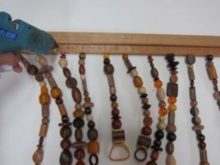 If you used the alternative method: After moving your strands to the desired spacing, hot glue another piece of wood exactly on top of the panel. The final width for this project was 16 inches wide so the 13 strands were all a little over an inch apart.
If you used the alternative method: After moving your strands to the desired spacing, hot glue another piece of wood exactly on top of the panel. The final width for this project was 16 inches wide so the 13 strands were all a little over an inch apart.
Once you get the hang of it, you could add beaded curtains to just about any door or window in your home!
Tips and Tricks
You will need a lot of beads for this project, but keep in mind, the bigger the beads and longer the strands, the heavier the curtain will be.
Take apart jewelry you are not wearing for some fun nostalgic pops, find strands of beads at thrift stores, or look through your grandmother’s jewelry chest.
I really loved this idea, and found a bunch of images and ideas… here they are:
And even better… we are not limited to beads. I also found this cool idea for using old CD’s:
And also some ideas featuring pom poms, wine corks, ribbons, and more:
But wait, there’s more! Here’s a nifty tutorial for making beads out of paper for a really inexpensive, albeit time consuming beaded curtain:
Ok, that’s enough of that!
- Café curtains
These are straight curtains hung from rings that slide along a rod. May cover the lower portion of the window or the entire window. It is great when you need to allow lots of sight into the room while keeping lower part of the room (above dining table, or in the bedroom) private.
They are very easy to make. Here’s a short tutorial for cafe curtains:
Time: 15 Minutes
Cost: $5.00
Difficulty: Easy
Since I was going to Ikea anyway, I picked up 6 extra of my favorite dishtowels, and had my mom whip up 2 panels using 3 tea towels for each panel. Add to the top a one inch rod pocket and I had some rustic, casual cafe curtains!
- Cellular shades
Cellular shades are the best insulators of all energy-efficient window treatments. They get their name and insulating properties from their fabric honeycomb cells that trap air between the window and the room. This unique design maximizes energy efficiency and insulates your home .This results in heat gain in the winter and heat loss in the summer.
Cellular shades come in single cell, double cell, and triple cell. They also offer different levels of light control from light filtering to blackout. Unlike window blinds which are made of hard materials, they are made of a soft paper- or cloth-like materials. Typically spun lace and bonded polyester are used, but other fabrics can be used during the manufacturing process.
For insulation and energy efficiency, cellular (honeycomb) shades, with their little pockets of cells (think beehive and honey) keep your temperature serene. All of those little pockets trap air and help keep the heat out in the summer and the warmth in during the winter. Those bees are smart little hummers!
Available in every possible color, they’re an ideal fit for most rooms and the cordless options make them great for families with kids or pets. Top down bottom up features are a must have option for maintaining privacy while still letting light stream in.
- Drapery
Drapery adds style and elegance to your home while also providing functional light control and privacy. Panels hang vertically from hardware at the top to your desired window treatment length.
Also referred to as curtains, can be used to create an elegant, casual or a sophisticated look. May draw across the rod or remain stationary on either or both sides of the window. Curtains come in a variety of shapes, materials, sizes, colors and patterns, and they often have their own sections within department stores, while some shops are completely dedicated to selling curtains.
Curtains vary according to clean-ability, ultraviolet light deterioration, oil and dust retention, noise absorption, fire resistance, and life span. Curtains may be moved by hand, with cords, by press-button pads or remote-controlled computers. Measuring curtain sizes needed for each window varies greatly according to the type of curtain needed, window size, and type and weight of curtain.
Available in many different styles, fabrics, colors and patterns, you can easily coordinate drapery to layer with any existing window treatments or simply use panels only
Drapes and curtains are the most decorative window treatment and the terms are often used interchangeably as full length panels of material. Drapes add extreme personality to a space, transforming a room in the form of breezy sheers or lush velvet. While decorative, they also filter or block light and may be lined for thermal insulation.
Hung high near the ceiling and draped near the outer edges of a window, drapes can make both the room and the window feel larger.
Drapes become a perfect companion when paired with another window treatment such as a timeless wood blind, an insulating cellular shade, or a rustic woven wood shade. Drapes are the dessert of window treatments!
- Mini Blinds
If you’re looking for the lowest cost option in window treatments, mini blinds are your answer! They are a basic blind that does the trick of providing privacy and controlling the light with a simple twist of the wand.
Mini blinds are available in an array of colors, different materials (aluminum and vinyl) as well as different thicknesses to solve all your light issues. Mini blinds offer minimal treatment. They can also be painted. These rainbow mini blinds are pretty cool.
The DIY is very simple. Take down the blind and clean it really well. When it is thoroughly dry, spray with a primer and then when that’s dry, spray paint it with the color of your choice. If you opt for the rainbow blinds, each slat will have to be painted individually. I’d recommend a foam brush and a good quality paint.
- Outdoor shades
Outdoor shades are innovative, lightweight and just shout easy living. Made from a solar screen material, outdoor shades block the heat, glare and damaging rays. The airy fabric lets the wind move through for a cool breeze, yet protects and offers privacy.
If you live in a climate with extreme sun, outdoor shades can be mounted to the outside of the house to prevent the sun from even reaching your windows and heating the place up like an oven. Outdoor shades are de rigueur (means you gotta have them) for patios, porches, and other outdoor spaces for ultimate outdoor living and entertaining.
- Panel track blinds
Panel track blinds are made out of a series of fabric panels that slide back and forth to give you optimal light control and privacy. Sometimes called sliding window panels. Offer a simple, versatile and stylish solution for sliding doors or picture windows.
These blinds are a modern alternative to vertical blinds for covering large windows or sliding glass doors.
Panel track blinds are the best thing to happen to sliding glass doors and large picture windows since vinyl vertical blinds! You can’t beat these when covering a large space. A cross between drapery and vertical blinds, a series of panels slide open and closed on a track system. So cool.
When mounted to the ceiling, panel track blinds can also be used as a room divider. The variety of materials offered range from basic vinyl to solar screens to natural woven woods. Once your sliding glass doors are outfitted with smashing fabric panels, you will become a panel fan.
- Pleated shades
Pleated shades are made from a single piece of fabric with pleats that collapse and stack neatly as you raise the shade. This slat-like effect gives your home a casual, semi-sheer look that allows a considerable amount of light to filter through the window.
A more affordable alternative to cellular shades are pleated shades which are actually constructed with crisp pleats cascading down your window. The insulation benefits don’t match a cellular shade but the look is quite similar. Many people object to the light that comes through the holes made by the cords as the shade is lowered. However, an option is now available to decrease those unsightly slivers of light, the “no holes pleated shade.” You don’t need an iron to keep those pleats sharp!
- Roller shades
Roller shades are one of the most affordable options when it comes to covering your windows. These shades roll up neatly onto a tube, making them appear minimal and discreet when raised. With blackout and light-filtering options, you can choose the amount of light control that you wish for any given room.
Roller shades, also called roll up shades or roller blinds, are an easy and economical way to add color, style and texture to any decor. Constructed with modern fabrics and offer simple functionality for ease of use.
The idea of a roller shade is pretty simple. When lowered, the shade hangs flat near the window pane and when raised, it rolls up onto a cylindrical rod. Lots of fabrics are a plus here: blackout material, sheer fabric, and linen and a palette of patterns. Technology today even allows you to print your own images, photos, art or design on a roller shade.
A cordless lift option creates an additional clean look. Roller shades are a straightforward, budget friendly window treatment option.
- Roman shades
Roman shades consist of one continuous piece of fabric, featuring horizontal folds down the length of the shade. These folds lay flat against the window when down but fold up nicely when raised, combining the soft look of fabric drapery with the functionality of a shade.
Provide privacy, light control, and offers insulating qualities; can be made in any fabric. Roman shades are usually opened with a cord mechanism, allowing the user to adjust the height of the covered area. Many different kinds of materials, from wood to fabric, can be used to create Roman shades, as well as natural materials such as bamboo.
Roman shades give the rich impression of drapery with the functionality of a shade that opens and closes easily. When closed, they hang like a panel, like a good solider and when raised, they fold up and look similar to a valance, like a cloud.
Roman Shades are available in so many fabrics, creating a burst of color or texture in your room. Different styles fit seamlessly into décor styles such as traditional, family-friendly, and even contemporary. And don’t think form wins over function. With roman shades, there are options galore to choose from like top down, bottom up or cordless or thermal liners. Romans are happy to roam on all of your windows.
- Sheer Curtains (Net Curtains)
A sheer or net curtain is one that is made from translucent (sheer) fabric. The sheerness of a fabric is expressed in 3 main characteristics (extremely rare, very thin, barely visible). The materials which can be made translucent include gossamer, silk, rayon or nylon.
Sheer fabric comes in a wide variety of colors, but for curtains white and shades of white, such as cream, winter white, eggshell, and ivory are popular. They are sometimes referred to as privacy curtains; during the day they allow you to see from the inside out whilst preventing people outside from seeing directly into the space.
- Sheer shades
Sheer shades are an elegant window covering. These popular window treatments feature two sheer fabric facings over soft fabric vanes.
When vanes are open, diffused light is let inside, and your view to the outside is preserved. When closed, however, room-darkening styles of sheer shades will completely block out light.
Sheer shades are the best 2 for 1 window treatment on the market. You get the look of a fabric shade with the functionality of a blind. They are light and airy and elegant. When the shades are closed, the vanes can be tilted open for a filtered view or completely closed for privacy.
Of course, sheer shades can be raised for a full view of your beautiful garden or kid’s playground or rambunctious pets. Beautiful in living and dining rooms, your bedroom is just as important, as sheer shades in a room-darkening fabric guarantee you the sleep you deserve.
- Shoji Panels
Used in Japanese decorating. Can be used as room dividers, doors and window coverings. These screens are made of wood or bamboo with a translucent rice paper, which is porous and easily allows light into the room.
It can be also used as folding screen (free- standing furniture). It consists of several frames or panels, which are often connected by hinges or by other means. It can be made in a variety of designs and with different kinds of materials.
- Shutters
Shutters are a classic window treatment choice, adding architectural design directly to your windows. Shutters are a great value when you consider they actually add value to your home.
Louvered or fixed slats. Attached with hinges so they can be opened and shut. Made of wood or plastic. Shutters may be employed for a variety of reasons, including controlling the amount of sunlight that enters a room, to provide privacy, security, to protect against weather or unwanted intrusion or damage and to enhance the aesthetics of a building. The term window shutter includes both interior shutters, used on the inside of a house or building, and exterior shutters, used on the outside of a structure.
The elegant design of shutters looks attractive from both the inside and the outside.
Shutters are dynamic as an architectural statement and are not only functional and beautiful window treatments, but they can also add value to your home.
I don’t think a simple shutter would be too difficult to make, so I found a bare bones visual tutorial in case anyone wants to try it:
Shutters help to control incoming light, offer privacy when closed and help to insulate against heat, cold, and sound. Shutters add timeless, traditional sophistication to any room. Shutters are so impressive; they make me feel like the Queen of England in my country manor or a totally hopeless romantic in my beach cottage.
- Solar shades
Solar shades are also known as “window sunglasses” for their opaque design that allows you to preserve your outside view while also providing considerable light control. Available in openness factors ranging from 3- to 14-percent, you will want to choose a higher openness to let in more light and preserve your view.
Solar shades are really just a roller shade made with a screen material. If you have a stellar view or just want to bring the outdoors and light into your house, but you need to cut the glare and control the UV rays that stream in from your windows, solar shades do the trick. They do a fine job of filtering the sun, yet your view to the outside is preserved.
Of course, the huge plus is the energy efficiency as we all want to save the resources of our planet while lowering our personal energy bills. Solar shades are another “on trend” window treatment in our light obsessed world.
- Wood blinds
Wood blinds are a classic choice for windows and outlast trends or styles. Made of real wood, using various grains and stains, wood blinds remain durable through the years. The warm look of wood blinds pairs well with other wood furniture, flooring and trim.
I initially think of wood blinds in a den or library, but really, they’re at home in most rooms. Wood blinds are simply natural wood slats that are either painted or stained. They are a classic treatment, complementing many decorative styles and their simple construction makes them easy to operate. Many finishes are available ranging from light pine to bamboo to richly stained ebony. Different slat sizes are offered depending on the degree of control you’d like with regards to privacy and light control. For a stylish look, layer wood blinds with drapery or top with a valance.
- Faux wood blinds
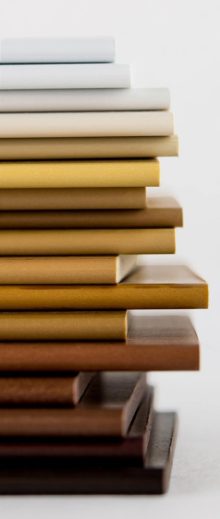 Faux wood blinds have the same look as real wood, but are more affordable window treatments because they’re made out of PVC, vinyl or composite wood material. Faux wood blinds are also moisture resistant, making them a great choice for kitchens and bathrooms where real wood would otherwise warp and crack.
Faux wood blinds have the same look as real wood, but are more affordable window treatments because they’re made out of PVC, vinyl or composite wood material. Faux wood blinds are also moisture resistant, making them a great choice for kitchens and bathrooms where real wood would otherwise warp and crack.
For the best value and for an uncomplicated look, faux wood blinds are a good first choice. Why? Here are some of my favorite words: affordable, efficient, attractive, and easy maintenance. That means no fading, or fraying and just a quick swipe now and then.
Faux wood blinds look and feel like wood blinds, but are less expensive and more durable. Since these blinds won’t warp or fade, they are the best option for humid climates or high moisture rooms such as bathrooms and kitchens.
- Venetian Blinds
Made of wood, metal or plastic. They are suspended by strips of cloth called tapes, or by cords, by which all slats in unison can be rotated through nearly 180 degrees. The slats can be rotated such way that they overlap with one side facing inward and then in the opposite direction such way that they overlap with the other side facing inward.
Between those extremes, various degrees of separation may be effected between the slats by varying the rotation. Slat width can be between 16 and 120 mm, with 25 mm being a common width.
- Vertical Blinds
Unlike horizontal blinds, vertical blinds are less likely to collect dust because they stand vertically. Since they draw to the side rather than lifting and lowering, they operate better on doors and windows that also slide from side to side. Generally they require less muscle strength, and are faster to operate. Are an excellent solution for covering windows that are extremely wide and for patio doors as well.
Fabric blinds are noise reducing and will insulate from the heat of the sun and the chill of the wind. Vertical blinds are available in flat plastic (PVC), fabric, embossed PVC, faux wood materials, metal, wood and also S-curved slats. Vertical blinds are also used for door ways in public spaces in order to keep the warmth inside the room and/or in warmer climates in order to discourage flies and some other insects from entering the building
- Woven wood shades
Woven wood shades, often called bamboo shades or matchstick shades, offer an exotic, natural look and are a great way to add textured, casual good look to almost any decor. Woven wood shades offer complex textures, exotic reeds, grasses, woods, and sophisticated natural colors.
Window treatment manufacturers make woven wood shades out of a variety of materials, including grasses, reeds and bamboo. You may add liners to increase privacy or include fabric trim to further customize the woven wood shade to your room.
Woven wood shades run the gamut from casual and rustic to tailored and elegant. Made out of renewable materials such as bamboo, reeds, or grasses, they are an environmentally responsible selection. Woven wood shades bring wonderful texture into a room and are effortlessly chic.
Other considerations:
- Kitchen window ideas:
The kitchen is your hub, your ground zero. We all have to eat, and let’s face it, as much as you may plan for guests and kids to gather in another part of your home, they come find you in the kitchen, because that’s where all the fun happens. It’s also the room where the temperature is up and down and experiments happen more often than not (I think of mine as more of a lab).
Since there is high moisture and potential spillage in the kitchen, faux wood blinds are a great choice since they will not warp or fade. They are natural ventilators and are durable even for the rowdiest of chefs. They also clean easily, to boot.
If you’ll be covering windows above sinks and stoves, consider a cordless shade in the kitchen. Long winding cords getting stuck in the disposal or singed off into your soup are no bueno. If your kitchen faces out on the street, you might like shutters since they give great curb appeal. Shutters are naturally cordless, too.
- Dining Room Window Ideas
This is where you celebrate the best things, either your nightly family ritual, or your big feast that comes a few times a year. If you’re going formal, think about tall drapes because you can do a floor-to-ceiling effect where you’ll bring a feeling of height and importance. It’s dramatic but still inviting.
If you’re going more laid-back, roman or roller shades will keep the space warm and private with a soft, homey feel. Cellular or pleated shades are a great pick for anyone in between who uses the dining room for all celebrations, big or small.
- Living Room Window Ideas
In here, you’ll be making a statement about your home, entertaining, and protecting large furniture that you don’t want to fade. Solar or cellular shades are the great protectors from direct sunlight, and you can pick how much light you want coming in while still preserving your view outside.
On stark bay windows, roman shades are soft and elegant. On tall windows, or ones you want to seem tall, pick any shade and then overlay long drapes to really give reach and a finished look. Add a valance and you’ll really have a wow window.
Think outside the box in this room—make it a signature room with color, bold patterns and mix and match fabrics. It’s your living room—make it feel like you want to actually live in it!
- Bedroom Window Ideas
Your bedroom is your sanctuary where you wake up and wind down every day. Bar none, your first thought should be privacy, and how much of it you want.
Blackout shades are great for pure darkness, especially if you don’t rise and set with the sun. If you are not a vampire and would like a little light, go with day/night shades that give you the best of both worlds—room darkening on one end and light-filtering on the other. These shades are way amazing and some of us think this is a secret blind, for the underworld.
Cellular shades are naturally calming with their soft diffusion of light and their fabric touch. They insulate during any season, and they come in patterns stimulating enough to wake up to, but still serene enough to fall asleep to. To keep it serene in this room, add motorization—your shades will practically operate on their own. In the end, a blind or shade that makes the ambiance feel warm to you is your best bet in the bedroom.
Wow! Check out these City Scape Black Out Blinds!
These are the perforated cityscape roll-up window blinds created by Ukraine based HoleRoll. They look like nighttime cityscapes when rolled down, look like whatever is outside your window when rolled up.
Their prices start at around $152 per shade, which is way out of my league, but I thought it might be fun and interesting to try to make them. I went on an exhaustive search for a DIY and came up with nothing. So…
How hard can it be? Start with some great roll up shades. Cover the front with black fabric, paper, or paint. Alternatively, buy some black out shades that are already black. And then cut them yourself. A night sky looks fairly simple and might be a good place to start. And then, be brave and get creative! Here’s a city scape image to get started with. Don’t forget to add stars… and maybe a crescent moon!
And if you need even more ideas. Black out shades are not the only things that can be super cool when painted black, back lit, with tiny holes punched in.
So, there you have it! Everything you ever wanted to know about window treatments and a little bit more!
Sources:
Let’s Go Outside!
Time spent outdoors is always time well spent, but when its a well designed space, it’s even better.

What is an outdoor living area? It isn’t just a patio and table anymore. Not just some plants on a deck. Today, the exterior of a home is literally turned inside out in order to create the feel of an indoor area. But how can you make the outside feel more cozy and inviting?
Creating an Outdoor Room
Whether you have a big backyard or a tiny patio, the key to designing for outdoor living is implementing your plan in steps, says Elyse Santoro, a Miami-based interior designer/decorator. “It doesn’t have to happen all at once, and it doesn’t have to be overwhelming or cost a fortune.”
- Where to Put Your Outdoor Room
First, go inside your house and check out the views looking out. Placing the room in a good relationship to the house helps give the feeling that your outdoor room is “an extension of your home,” Santoro says. “Make sure… you have easy access to get there,” she says, whether or not it’s physically connected to the house.
An outdoor room can include anything from an attached, screened-in porch to a gazebo to a landscaped area with a bench. If it’s an independent area, such as a gazebo, create a passageway with foliage or hardscaping to visually connect it to the house. “You want to erase the fact that you’ve gone outside,” says Atlanta-based landscape designer Patricia Thernell. She advises using the same flooring material outside as inside, or using plants to frame the doorway to your outdoor room.
- Defining Your Outdoor Space
“The best way to define an outdoor room is by the activity that will take place in it,” says Mary Donovan, an interior and landscape designer in Atlanta. Donovan interviews homeowners on what they plan to do in their outdoor spaces. Often the answer includes several purposes such as entertaining, family dining, playing games and reading. Figure out if you need one large space or several smaller rooms, each with its own purpose.
Multiple outdoor rooms don’t necessarily require acres of land, Donovan says. Postage-stamp sized front lawns and narrow side yards can be landscaped to be rooms in themselves and not just passageways. “It can be a shady quiet, meandering space with hydrangeas, hostas, moss and a dripping wall fountain, and other plants trained to grow vertically up against the house or on a lattice,” Donovan says.
An outdoor room has to be functional, but it also has to be engaging or you’ll never use it. Santoro asks clients to think about places they’ve traveled to that they absolutely love. “If they say they love Tuscany or the vineyards in northern California, I ask them to remember what it felt like there and to create their outdoor space with elements of that place.”
So, it all begins with the initial design. Do you want a pleasant patio, a quaint courtyard, a stylish gazebo, or a country-style porch? Next, try to harmonize with the backyard. Most of the time, you’ll want every area of the exterior to be a room unto itself, each with its own function and purpose while still creating a cohesive style.
The Floor Plan
You want to think of your backyard as a part of the house, which means it should come with its own logical layout. First off, if you don’t have them already, patios and decks are the most common exterior installations for homeowners because you have to have some kind of focal point to work around. But even when you have a central location, you need to organize and compartmentalize the space.
Here are some basic “rooms” to consider when planning your outdoor space:
- Kitchen
Cooking outside is a summer tradition, buy why limit it to grilling. Outdoor kitchens have become a popular renovation for any chef who wants to go beyond hot dogs and hamburgers.
If you have the a nice big budget, you could add some counter space and cabinets. Install an oven, a range, a wet-bar, or a sink. Of course, make sure these items are made out of the appropriate weather-resistant materials, such as sealed concrete and stainless steel.
Even on a smaller budget, a cozy cooking area is possible. Here are some creative ideas using brick, repurposed tables and cabinets, and what’s that? A volkswagon bug?
- Dining Room
After cooking outside, you’ll probably want to eat out there as well. This delightful patio in England designed by Cool Gardens Landscaping Ltd. is the perfect spot for afternoon tea. It features a towering hedge that serves as an organic art gallery wall complete with an outdoor TV screen and audio system.
Super cool huh?
I found a bunch of other equally cool ideas for dining areas outside. They range from the super simple to the elaborately luxurious. Here’s a gallery of pics to drool over and get ideas from:
Patio furniture is crucial. Tables, chairs, and umbrellas are important, but you may also want to think about other decorative touches such as gliders, porch swings, or a screened-in porch that keeps out the bugs.
- Family Room
Once you’ve eaten, it may be time to adjourn to a common room. Therefore it’s a good idea to have a relaxing retreat, a place to entertain.
Add a cozy outdoor fireplace for those chilly nights. Or, if you have the budget, a hot tub and a pool is a great addition: they’re fun, they’re attractive, and they add value to the home.
More cool ideas:
Oh, and here is something fun!
A trampoline isn’t just for kids in this backyard. A cushioned bumper and collection of throw pillows create a great space for lounging.
- Water Features
Landscape designers, interior decorators and architects all agree: Water is one of the most important elements in an outdoor room. The sound of water really creates a serene setting.
Even if you’re creating a room for entertaining and dining rather than meditating, it’s still nice to hear the splash when you’re sitting around the table. But you don’t have to spring for a pond or waterfall. A container water garden or a tabletop fountain works perfectly.
I found this great little tutorial for how to create a bubble fountain. It looks pretty easy, the biggest expense is the pump. I didn’t price them, so I don’t know how expensive they are.
How to Make a Bubble Fountain
Tools and materials needed:
- spade
- level
- bubble fountain kit
- decorative garden pot
- silicone sealant
- small pump with flow adjuster
- gravel
STEP 1 – Prepare the Site
First, hire a qualified electrician to install an electricity supply and an outdoor outlet to an easily concealed location close to the fountain. Then dig a hole larger than the reservoir.
Remove any sharp stones from the hole and pack damp sand around the edges, sides and base. Place the reservoir in the hole, and use a spirit level to check that it is level in all directions.
Pack more sand around the reservoir, as necessary, and check that it is level again. It is essential that your fountain is horizontal to prevent water from draining out, and to ensure that the pot on top will be stable.
STEP 2 – Place the Pump
When level, place the pump in the reservoir. You may need to fit an extension pipe onto the pump to reach through the hole in the base of the decorative pot. Put the lid on the reservoir, and over the pipe from the pump.
Place the decorative pot on the reservoir lid, making sure that the pump pipe passes through the drainage hole in the bottom. Seal the pump pipe in place with silicone sealant, and leave to dry and harden for 24 hours.
STEP 4 – Attach Flow Adjuster and Fill Fountain
Attach a long section of pipe to the water flow adjuster. Then attach this to the pump pipe in the base of the pot. Trim the water delivery pipe so it reaches just below the rim of the decorative pot.
Use a watering can or hose to fill the reservoir through the holes in the lid, and fill up the decorative pot to just below the delivery pipe.
STEP 5 – Protect the Cord
The electrical cord must be protected by special tubing, which an electrician can advise you about. Make sure that all electrical connections in the garden are fitted with a ground fault circuit interrupter (GFCI).
STEP 6 – Disguise Reservoir and Soften With Plants
Plug in the pump and check that it pushes the water over the top of the pot, and adjust the flow as necessary. Disguise the reservoir with pebbles and gravel, leaving a gap to allow you to fill it up; you need to do this once a week in summer.
Plant up around your pool, leaving a margin between your planting and the reservoir, to avoid dislodging it. Plants from the Mediterranean, such as euphorbias, lavender and rock roses make great companions for an urn. If you prefer a more traditional look, try roses, honeysuckle and daisies.
Here is a great collection of bubbling fountains to get your creative juices flowing. As you can see, the fountain does not have to be buried in the soil to be super cool and beautiful.
- Fireplaces
A cozy fire or fireplace is becoming a staple for outdoor rooms, because a hearth can extend the season of your outdoor room by several months.
Fire pits come in many shapes and sizes. They can be a permanent structure or a simple barrel that can be moved around the patio. Find the design that’s right for your backyard.
Fire pits are not hard to build. They do, however, require a bit of elbow grease and hard work. They can be created with concrete culvert spacers — aka doughnuts — intended to fill culvert gaps in city sewer systems, fire brick, metal containers buried in the soil or surrounded by brick or stone.
I found a couple of simple visual tutorials. Here they are:
Firepits can also be created from a variety of materials:
But wait, those look expensive and/or difficult. I want something super easy and inexpensive. So I went on another search and found these two visual tutorials. One uses sterno, the other is a variation of an oil lamp. Easy peasy.
- Plants
Plants soften hard edges (such as concrete flooring) and add a sense of life, warmth and comfort. Santoro, who’s also an expert in feng shui, likes jade plants, miniature orange trees and potted philodendron in sheltered areas, and pines and bamboo to define outdoor areas. Or, choose plants based on the feelings you want to evoke in the space.
For example, a meditative outdoor room works best in shade, surrounded with ferns and hosta with ligustrum to define borders. Left to grow naturally, a ligustrum hedge looks woodsy and informal, or you can trim it to define a more formal outdoor room.
There’s no need to spend big bucks on planters and flower pots. Look around the house or scour thrift stores and flea markets for unique vessels to hold plants, herbs and vegetables.
Shade and Shelter
One of the best ways to ensure that you have a luxuriously comfortable outdoor room is to ensure that you have shade, privacy, and a feeling of shelter and safety.
Curtains made from outdoor fabrics were used to create instant privacy on this charming porch. There are so many different ways to create privacy and shade with walls, screens, curtains and plants. Here are some great ideas:
Whichever your relaxation method of choice, an important consideration in any outdoor room is protection from the elements. In addition to shade from the sun or even a light rain, consider erecting screens or other wind breaks on wall-less structures.
- Backyard Tents or Teepees
If you’re worried about the kids spending too much time in the sun, put one of these in the backyard for a great place to cool off. A tent can be a luxuriously wonderful place to spend time in the back yard for the grown ups as well.
Tie It All Together with Flooring
Since flooring defines a space, put down some kind of hardscaping, whether it’s a deck or a stone floor or a concrete slab. If your outdoor room has a floor of grass, “you’ll never go out there,” says Santoro. “If there’s no floor it doesn’t feel like a room.
- Walkways and paths
Garden paths come in many styles, and it is up to you to determine not only which style fits your garden best, but which you can commit yourself to creating and maintaining.
Some take much more time, effort, and expense than others. For example, gravel and mulch paths are inexpensive, but stone and brick are more durable. Stepping stones add charm, while mosaics add elegance and beauty but are incredibly time-consuming.
Pea gravel is fairly inexpensive, and in my area there is an abundance of limestone rock that can be scavenged and scrounged. Also you might check with companies that make grave stones to see if they have a supply of broken or unusable gravestones. Other possibilities include beer bottles embedded in sand, bottoms up.
Outdoor Flooring Buyer’s Guide
What’s the best material to build your driveway, deck or patio? Here’s a look at five outdoor flooring choices and the cost, pros and cons, and ideal locations for each.
From brick to cedar decking to concrete pavers, outdoor flooring options can quickly get complicated, but when you consider the pros and cons of each, it’s simple to choose a type of flooring and style that fits your space and your budget.
The following info is from design experts Jeff Wilson, a home improvement expert who has hosted several shows for HGTV and DIY Network, and Morgan Grimball, ASLA, a landscape architect in Columbia, SC.
Natural stone
Pros and cons: Stone can be expensive to truck in and installation is labor-intensive. Local stone from your region (for example, fieldstone in the south or slate in the northeast) costs less and is more eco-friendly. Once installed, natural stone is extremely durable and almost maintenance-free.
- Cost: Varies by type of stone and region, but around $25-35 per square foot.
- Ideal location: Patios, pool decks, front porches, walkways, driveway accents
Design ideas: Use stones with an irregular shape to create a meandering mosaic pathway; for a more uniform appearance, select cut modular stones. Natural stones have beautiful color variations from gray to red to blue, which can form part of the pattern and overall design of your outdoor space.
Concrete
Pros and cons: A basic slab of concrete is inexpensive, low-maintenance and a good long-term option, though cracking is difficult to repair. Concrete pavers are easier to repair; simply pull up the damaged section and replace.
- Cost: $4-6 per square foot for basic concrete; $7-8 per square foot for pavers; $12 per square foot for stamped or acid-etched concrete
- Ideal location: Patios, driveways, pool area, garden paths, front porches
Design ideas: Coloring and stamping options make concrete resemble stone, bricks, or other higher-end materials. Concrete pavers are durable, low-maintenance, and come in a wide variety of designs from brick to flagstone.
Wood
Pros and cons: Wood decking is one of the simplest DIY projects, which lowers the cost substantially, but wood requires cleaning and sealing every one to two years.
- Cost: Around $8-10 per square foot for the least-expensive treated lumber; $18-20 per square foot for higher-end wood; $20-25 per square foot for inexpensive treated lumber, supports and railings. Composite decking runs about $35 per square foot.
- Ideal location: Ground level or raised decks, pool decks
Design ideas: Using local hardwood in deck building is greener and can be less expensive, since the wood doesn’t have to be trucked in. If your ground is sloped, consider building the deck in levels to follow the slope.
Brick
Pros and cons: Brick gives off a beautiful old-world look and is low-maintenance and relatively slip-resistant, but ground shifts over time can make a brick pathway or patio difficult to shovel snow because of the irregular surface.
- Cost: Approximately $15 per square foot, including the base
- Ideal location: Patios, garden paths or walkways, pool decks or fountains, front porches, driveways
Design ideas: Brick can be installed in a number of patterns, such as basketweave, herringbone and circular. Encouraging moss to grow between brick pavers fills in the cracks and helps prevent weeds, but can be slippery when wet.
Tile
Pros and cons: Ceramic tile installed outdoors must be highly slip-resistant and able to withstand freeze-thaw cycles. Look for tile specifically formulated for the outdoors, which is dense with low absorption ratings. Tile usually requires a sealant to protect the grout from cracking.
- Cost: $12-20 per square foot
- Ideal location: Front porches, patios, garden stepping stones, pool decks
Design ideas: Use accent tiles to create a border; lay contrasting tiles in a diamond pattern; create a pathway within a large patio by laying a contrasting color in a walkway formation; use smaller tiles in a mosaic pattern as a focal point.
- Note:
All costs for all materials are estimates that include labor and installation. Prices may vary by region, and installing materials yourself will cost substantially less in most cases.
But Wait There’s More!
And if you don’t want to go for something permanent, here is a wonderful and luxuriously cool temporary outdoor room:
Sources:
Dining Room Feng Shui
A feng shui dining room is one that arouses hunger, brings harmony, strengthens the bond among family members, attracts prosperity, enhances wealth and a whole lot more.
In feng shui, dining rooms are given a very high degree of importance and that’s because it’s “The Room” where a family is “supposed to” dine and spend a real quality time together.
I said “supposed to” because in most houses dining rooms are seldom used (for dining) and they – tend to – become “dumping rooms” for all sorts of things that can’t find a place elsewhere in the home; here’s a list of few – really few – items that are usually dumped in dining rooms:
- kid’s toys
- old cabinets
- seldom used travel bags
- laundry clothes
and the list goes on and on…
However, you must understand that piling all these items – that don’t actually belong – to the dining room has a very negative effect on feng shui of the dining room. In fact, piling clutter in any area of a home or office is bound to deteriorate feng shui for that area because they restrict the free flow of Qi energy in the house.
For good feng shui in the dining room:
- Make sure that the dining room is inviting, comfortable, hunger arousing and calm.
- Maintain balance of colors in dining room; don’t make it too bright or overly dull.
- Dining room must be well ventilated and it should receive plenty of sunlight.
- Hang a mirror in dining area such that it reflects the dining table; this’ll bring in more prosperity.
- You can provide a wash basin in North or East of dining area.
- Keep the dining room as near as possible to kitchen.
- Have kitchen and dining on the same floor.
- If your kitchen is really huge then utilize an area of the kitchen as dining area.
- If the dining room in your home is a part of living room (a common case nowadays) then put curtains or potted plants as a line of demarcation.
- Go for a square/rectangular or oval/circular dining table.
- Make sure that the dining table is of high quality wood.
- The dining table must be big enough to provide space for everyone.
- Keep the number of chairs even.
- Keep sitting arrangement such that no one’s back is towards a door or window as it causes a sense of insecurity.
- East facing is good for head of the family; other members can face North, East or West while dining.
- Be polite and gentle to family member while dining; be gentle and polite always.
- Be relaxed, calm, happy and stress-free while dining; in fact be this way always.
- Always keep something on the dining table; you can keep fruits on it; apples help develop friendship, pears are good to attract positive energy, peaches aid in good health and oranges symbolize richness and prosperity.
- If fruits aren’t your choice then you can keep flowers on dining table. Just make sure not to use dried flowers, they imply deterioration.
- Make sure to have meals with your family daily; however, if that’s not possible then at least have a meal together once a week.
- Images of mouthwatering and lip smacking dishes in dining room arouses hunger.
- Always thank God before you start eating.
Here’s What to Avoid:
- No toilet doors in front of dining table or dining room.
- Make sure that dining room door and house entrance doesn’t face each other.
- Make sure that the dining room doesn’t become a room of dining etiquette for anyone; else they’ll lose interest in eating.
- Never sit under a beam while eating.
- Please avoid TV and other electrical instruments in the dining room; this’ll make the family to spend some quality time together.
- Avoid low ceiling in dining room.
- Avoid negative paintings such as weeping girl, war, crime etc. in dining room; in fact avoid them everywhere.
- Avoid hanging clocks in dining room; they tend to create haste while eating.
- Never eat in dark.
- Avoid eating alone; that increases loneliness. Put on some soothing music if you’re alone.
- Avoid irregular shaped dining tables such as, diamond or hexagonal shaped ones.
- Avoid glass top dining tables as they’ll bring in nervous energy.
- Avoid dining tables that have cushions on top; go for hard top dining tables as they represent solid foundation.
- Never place the dining table touching a wall; it must be away from any wall so that everyone can sit comfortably.
- Avoid rocking chairs in dining room.
- Avoid facing south while eating.
- Don’t allow kids to sit in the South-West corner of dining table.
- Never use or even keep broken or chipped utensils or glass wares.
The Dining Room Table – Shapes and Sizes
There are two criteria to look at when choosing the best shape for your dining table.
- Best visual choice. What is your dining room asking for? What table shape will look and work there the best?
- Best bagua area match. If most shapes would work, then decide based on the feng shui bagua area of your dining room.
From a general feng shui perspective, a round or oval table is considered better than a square or a rectangle one. The reason for it being the flowing shape that contributes to a more even distribution of energy, so to speak. In simple terms, sitting at a round or oval table will make everyone feel more welcome, at ease and equal in their relating to each other.
However, the first criteria to look at is your dining room size and shape. If your space is asking for a square or rectangular shape and you insist on having a round table, you will not be creating a good feng shui dining room.
Good feng shui always starts by listening to your home, and then applying the best feng shui guidelines to it.
So, if you feel that a square or rectangle table would work better for the of your dining room, go for it because it is also good feng shui, just be sure to buy one that has rounded corners. Sharp corners are always best avoided as they create bad feng shui energy called Sha Chi.
Here are the best shapes for each bagua area of a dining room:
- East – Rectangular or Square
- Southeast – Rectangular or Square
- South – Rectangular
- Southwest – Square
- West – Square or Round
- Northwest – Square or Round
- North – Round
- Northeast – Square
- Center – Square
This selection is based on the play of the five feng shui elements and how they either support the energy in a specific bagua area or weaken it.
A couple more details to look at while selecting a good dining room table are as follows:
- The table should be in proportion to the room
- It is considered best to have an even number of chairs (unless you go for a round table).
- Best feng shui chairs are the ones with a solid back.
As the dining table is one of the most versatile and functional furniture pieces in your home, I would suggest taking your time and doing some good research. Ask where the table is made and who made it.
Buying locally, whenever possible; this is always a good idea and excellent feng shui, too. Invest in good quality wood and try to avoid a glass top dining table.
Dining Room Size for Chi Flow
The best feng shui dining room is spacious. There should be enough empty space to allow the chi energy to move about the room freely. Avoid blocking doorways, windows and the natural flow of traffic in and out of the room.
This free flowing chi energy will usher in abundance both in the health and wealth areas of your life. A minimum of 2.5 feet should be given around the table to allow guests to move their chair away from the table. If you can afford more space, all the better.
In traditional Chinese feng shui a dining room relates to wealth. In Chinese culture there is a straight correlation between the size of the dining room and wealth: the more people we can feed the wealthier we are!
Location and Feng Shui Design Aspects
The best location for the dining room is near the kitchen. This is a practical location as well as a feng shui one to maximize the benefit of chi energy.
Ideally, the dining room should be in the corner of your home. This location, like high-pitched ceilings, allows for the chi energy to collect and circulate in this space.
The most auspicious location of a dining room within a house is considered to be southeast and south. Not surprisingly these two directions relate to wealth and fame.
Dining Rooms Close to Front Doors
If your dining room is located too close the front door, try to separate it as much as possible. Keep the dining room door closed or use a decorative screen to block the front door from view. In feng shui, a dining room too close to the front door means chi energy can leave too easily and won’t fully enter the room.
Choosing and positioning the table
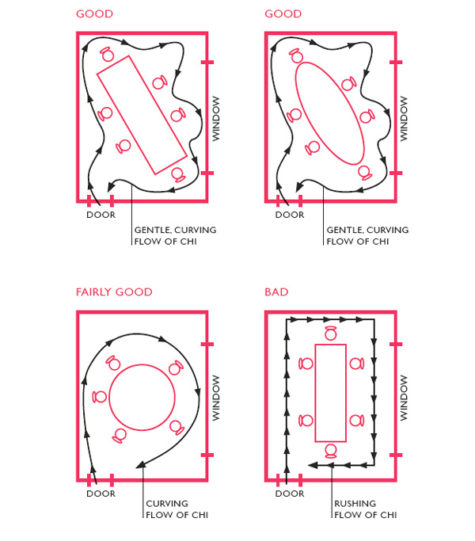 Your dining table should be large but fit comfortably in the room. Oval or round shapes are best, but if your table is rectangular, you can balance it with rounded shapes such as rugs in the rest of the room. It’s best to place the table at the center of the dining room and turn it at a slight angle in relation to the walls, so the chi will flow in a gentle, curving path around the room. If you put the table straight and parallel with the walls, the chi will be channeled in a straight line through the room or around the edges, and may get trapped in the corners.
Your dining table should be large but fit comfortably in the room. Oval or round shapes are best, but if your table is rectangular, you can balance it with rounded shapes such as rugs in the rest of the room. It’s best to place the table at the center of the dining room and turn it at a slight angle in relation to the walls, so the chi will flow in a gentle, curving path around the room. If you put the table straight and parallel with the walls, the chi will be channeled in a straight line through the room or around the edges, and may get trapped in the corners.
Seating arrangements
In feng shui, it’s good practice to seat the oldest family member or an important guest in the “honoured guest” position at the table. This is the seat furthest from the door, with solid walls behind it and offering a good view of the door and windows. If possible, place all the seats so that no one has his or her back to a door or large window, because this “weak” position may leave that person feeling insecure. This problem is especially likely with round tables.
Setting your table
In general, plain colours and simple shapes are best to promote the calming energy you need around the table. If you prefer a pattern, opt for one based on just one or two main colours. Vertical stripes are ideal because they symbolize uplifting energy. However, busy patterns splinter the chi. To get the most benefit from your tableware, keep items in good condition and discard any chipped plates, bowls or glasses.
Table displays
A rounded bowl filled with rounded fruit, in the centre of the table, is excellent feng shui; the more food you show, the more “richness of life” you possess. Many fruits have special significance: you could choose apples to boost friendship, pears for energy, peaches for health and oranges for richness. You can include other favourite fruits as well. Flowers are also a lovely decoration. Yellow ones are ideal to enhance communication. Silk, paper or plastic flowers are also fine. However, don’t use dried flowers because they represent decay and stagnation.
Lucky energy
The table and the area around it need to be “loaded with luck” (chuang ho hsing yun). Healthy, beautiful plants are a must in the dining room! They bring vitality, freshness and color., and nurture goodness in the chi. I especially like using larger plants with rounded leaves and flowers. Cut flower arrangements are fun to make and are also great in the dining room.
Keep electrical items, including TVs and stereos, out of the dining room; their energy is too yang. In addition, remove any clocks, because they are unwelcome reminders of the passing of time. A dining room should be “eternal” (yung yuan te).
The best material for a dining room table is wood. I do not recommend metal or glass tables since they are cold and do not hold energy.
Here’s an example of a beautiful but very cold dining room:
Lighting
Lighting needs to be soft and calming. Wall-mounted lights equipped with dimmer switches are a good idea, because you can alter the lighting levels to suit your mood or a special occasion.
- Use Lighting to Attract Yang Energy
In feng shui, the chi energy is comprised of the negative and positive energies of yin and yang respectively. The yin (female) chi energy is passive/restive while the yang (male) chi is active/energetic. Lights attract yang energy and you want to activate this dynamic energy for this room.
Recessed lighting is subtle and can also be used as direct lighting for wall art and paintings or simply placed on a dimmer switch for ambient lighting options. Torchiere floor and table lamps are great for uplighting to attract chi energy toward the ceiling and allow more energy to flow into the dining room.
A chandelier above the dining room table is the ideal choice of lighting. A crystal chandelier will activate the energy in the room and create an uplifting sparkling feeling. I love to dim the overhead light and use a lot of candles during family and guests gatherings. It always seems to slow down the time and have a magical, relaxing and mood enhancing effect.
Generate Abundance with Mirrors
One of the best kept secrets of a feng shui dining room is the use of mirrors. The mirror should be placed to reflect the dining room table top. This placement doubles the food (abundance, health and wealth) and is considered one of the most auspicious element in a dining room design. However, a mirror should never reflect a kitchen or bathroom or it will double bad energy from these areas.
A mirror will also soften the light. Choose one with a suitable frame for that sector, or with beveled edges.
Mirrors are also great to use in the dining room if they can be hung in a way that reflects the outside. Try to position a mirror to reflect a garden, tree, or anything special to you from outside. You can also use the mirror to reflect a beautiful piece of art or a flower arrangement from the center piece on a dining room table.
- Mirror Height
Be careful not to hang the mirror so that it cuts off the heads of dinner guests’ reflections. This placement is considered inauspicious and brings ill health.
- Floor Mirrors
A floor mirror that extends well beyond chair height is a good choice. Just be sure that it isn’t placed opposite the dining room door or reflects the front door, kitchen or bathroom.
If you’re brave and want to add walls of mirrors, don’t use mirror tiles. Instead opt for full length large mirrors.
- Mirror Placements to Avoid
A mirror opposite a front door will bounce all chi entering your home right out the door, never allowing it to enter your home. In feng shui, if the mirror is opposite the door leading into the dining room, chi energy will never reach inside the room and can mean inauspicious results for family health and wealth.
The water of life
Clean, flowing water symbolizes luck, energy, health and “richness of life”. A small water feature or aquarium will benefit most locations. Alternatively, you could have one or two water symbols, such as shells, or a picture of flowing water.
If you have a southeastern wall in your dining room you can use water to enhance your wealth by placing a wall fountain or a fish tank. However, don’t use water items in the northeast, south or southwest; they clash with the chi of these sectors.
Goldfish signify luck, and are ideal for an aquarium. Three or nine are the most beneficial numbers; include one black fish to represent protection. If you like tropical fish, have golden platys and a black mollie.
Good Feng Shui colors for dining room
Dining room wall colors should be warm, earthy and have a nourishing vibe. For example, yellow stimulates conversation and digestion, red stimulates appetite, and sage green brings freshness and vitality. A cold blue color would is the least appropriate for the dining room walls and décor.
- Here is a collection of colorful dining room ideas:
You can add colors to jazz up your dining room decorating with fabrics, bright tableware, crystal glasses and accessories. Napkins and table cloth designs and colors should be selected in accordance with the dining room table position. Feng Shui room decorating guide suggests blue color for the table in the northern zone of the dining room. Greens are Feng Shui colors for the eastern parts of the room and the house.
For large areas such as walls, single colors are best. You can always use ornaments and pictures, or a display area with items that suit the location, to add splashes of brighter colors. Try to avoid having highly patterned wallpaper, which can splinter the chi. If you already have this problem, remedy it by putting up abstract pictures in strong, plain colors appropriate for the location.
If you prefer neutral colors or like stylish dark or elegant white table cloth, try to add more Feng Shui colors with napkins, flowers, candles, napkin rings, tableware and vases to spice up your dining room decorating design.
I love the way the chairs and the rug in the above photo provide a nice burst of color while the rest of the dining area is pleasantly neutral.
There is another important Feng Shui room decorating detail, – coasters should correspond to the shape of the table in Feng Shui home. If you have a round dining room table, use round coasters and get oval for the oval dining room table, and so on.
One of the most important and easy to follow Feng Shui tips for dining room decorating: never use cracked or chipped plates and glasses. Ancient Feng-Shui teachers say that it brings troubles into the house. Also they suggest to serve glasses with transparent liquids for dinner. Shiny glasses make attractive table decoration and can play the role of individual Feng Shui crystals that stimulate the positive energy flow and attract wealth.
Dining room usage:
Ideally, the dining room should be used often and free of clutter. You may want to say goodbye to those projects and piles of papers that have been residing on a dining room table for several months.. If you don’t use the room and it’s cluttered, the energy stagnates which can cause stagnation in your finances.
Art in the dining room:
Choose art for your dining room that gives you a feeling of wealth and abundance. It’s personal but some examples that work for me are landscapes, seascapes, fruit or flowers. Your choice of art should also reflect the elements needed to enhance wealth in the particular space.
Pictures that give you feelings of pleasure and abundance will also help; good subjects include bright flowers, rounded fruit and sunny landscapes.
Sources:
Refurbishing The Dining Room
Make your dining room a comfortable dining and conversation space for the family. Whether your style is formal or family friendly, here are some great ideas to update your dining room.
Clean It Up
First up, I think it’s a good idea to make sure that the wooden surfaces sparkle and shine. Here’s an easy recipe for a good wood cleaning product:
Apply this formula to clean and restore luster to wood furniture. It also may be used to help remove superficial water rings on wood tables.
You will need:
- Funnel
- Measuring cup and spoons
- Lidded 8-oz. plastic squirt bottle
- Microfiber cloth (or clean, soft rag)
Ingredients:
- 2 Tbsp. olive oil
- ¼ cup distilled white vinegar
- ¼ tsp. lemon oil (or fresh lemon juice)
Instructions:
Using funnel, pour olive oil, vinegar and lemon oil into bottle. Shake well to emulsify. Squirt polish onto microfiber cloth and rub onto finished-wood furniture. Always go with the grain and evenly distribute polish. Remove any excess polish with a clean cloth.
Colorizing Your Dining Room Furniture
Maybe instead of a good cleaning, your dining room furniture needs a spot of color! Here is a collection of super colorful and interestingly wonderful painted tables and chairs:
And if you have metal chairs, they can be cleaned up and painted too! Check these out:
If your taste and your style is more conservative, give them a new makeover with paint and fabric. A bold graphic pattern can bring a pop of color and life into a room. And the best part: It doesn’t cost a lot of money.
How to Re-Cushion Old Dining Chairs
These are the chairs we’re starting with:
Here’s a list of the tools and materials that will be needed for this project.
Tools:
- Staple gun and staples
- Hot glue gun
- Measuring tape
- Flathead screwdriver
- Scissors
- Small pliers
- Hammer
Materials:
- Fabric for chairs
- Black upholstery tacks
- Carpet padding
- Quilter’s batting
- Cotton batting
- Paint
Step by Step Instructions with pics:
- Remove Old Fabric
Use a flathead screwdriver and pliers to remove upholstery tacks and the staples underneath. Do not throw away fabric or cushioning, you can use them for templates. If seats are different, number the bottom of the seat as well as fabric that was removed.
- Clean Chairs
When fabric is removed, clean chair to remove dirt and greasy build up.
- Prime and Paint
When chairs are completely dry, apply a coat of primer to entire surface. A coat of primer will help paint better adhere to chairs. When the primer is dry, add your first coat of paint. Let chairs dry completely and then apply a second coat.
- Measure and Cut Padding
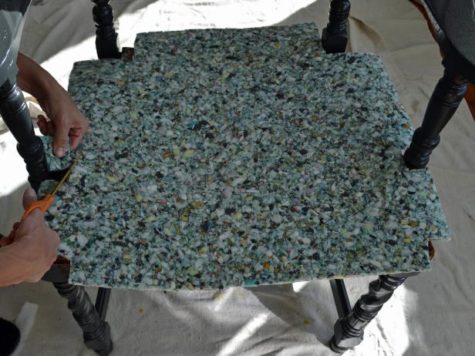
Use old fabric as a guide to cut a piece of carpet padding for the chair. Place padding on the chair and then cut in details you may have missed. Make sure there is enough overhang to go over the side of the chair, you can always cut excess off later.
- Attach Cushioning
Use a hot-glue gun to adhere padding onto seat and down the sides. Hold in place while the glue dries. To make it extra cushy, glue a second piece of carpet padding on top of the first one.
Cut a piece of quilting batting bigger than the carpet padding and lay it on top. Use a hot-glue gun again to adhere the batting to the padding.
- Attach Cotton Batting
Use cotton batting for the final layer. Cut this layer long so it hangs down past the bottom of the seat. Glue cotton batting onto the quilting batting on top and around the sides of the seat. After the glue has dried (usually just a few minutes), flip the chair over and staple the overhanging batting to the bottom of the chair seat.
- Cut and Prep Fabric
Again, use the old fabric as the template to cut the new fabric. Place the new fabric on the seat and make sure it is centered and smooth. You may want to stick a few straight pins in the top to hold the fabric in place. Place one staple in each side, in the middle. Turn the chair upside down. Pull the fabric a little taunt and continue stapling each side from the middle out to the corners. If needed, use a hammer to push the staples all the way down.
- Finishing Touches
Leave plenty of room around the corners and legs for folding in. You will probably need to cut some of the batting off to get the fabric to fold properly before hammering in the upholstery tacks. We used three tacks for the side of each leg.
- The Finished Chairs
I love how each one is slightly different, and I wonder if the fabric was painted or stenciled. Super cool, huh?
Not interested in recovering your dining room chairs? You can easily clean them up with this simple recipe:
Top It Off
Add texture and formality up above by applying tin tiles or embossed wallpaper to the ceiling. Having a little architectural interest on the ceiling will draw the eye up and make the room seem bigger. Get the look of 1920’s glamour on your ceiling with unbelievably real-looking fake tin tiles.
How to Install Tin Ceiling Tiles
People often think to decorate their walls with art and new paint colors, or their floors with fabulous rugs, but a famous designer secret to making a space special is to dress the ceiling. It isn’t called the fifth wall for nothing. We started this project with a bare, square ceiling over a Spanish-style dining room. With some simple calculating and installing, this faux tin ceiling makes a dramatic impact, and it keeps with the 1920’s style of the space. This plastic tile is made to look just like the real tin version. In addition to being easier to cut and work with, it’s cheaper, too.
Here’s a list of the tools and materials that will be needed for this project.
Tools:
- Measuring tape
- Chalk snap line
- Duct tape
- Scissors
- Paint roller
Materials:
- Faux tin ceiling tiles
- concrete sealer
Step by Step Instructions with Pics:
- Get Started: Plan, Purchase and Install
Find the square footage of the area you’d like to tile. Measure the length and width of the space. Next multiply those numbers together to find the square footage. This will be important for ordering enough of the product you select. If you’re working on a ceiling, have a friend help you measure if needed to get the correct dimensions.
- Order or Create Your Tiles
When picking faux tiles, think about the style of your home first. Look for a style that naturally blends with your space. Faux tin ceiling tiles come in several colors, and several faux metal finishes – it comes down to taste and color scheme. They also come in 6″ patterns up to 24″ patterns. We chose a larger pattern that had a Spanish-style vibe and ordered it in a dark, bronzed finish.
Purchase 15% more tile than you need, for any cutting mistakes and pattern matching. I also suggest ordering 1″ decorative strips in the matching material of your tile to cover seams.
To determine your installation needs, check the ceiling’s material. Many people prefer a glue-up install, so you can reposition tiles as needed while the glue sets up. Plaster, paneling and plywood work with glue, but check your manufacturer’s instructions for best practices.
- With a friends help, snap chalk line.
Two people should hold it taut in place, and one person should pull down and release the chalk-covered string to snap a chalky line on the ceiling.
Two people should hold it taut in place, and one person should pull down and release the chalk-covered string to snap a chalky line on the ceiling.
- Mark the Control Lines
For most spaces, the control line should be a straight line cutting your tiled area in half. Measure to find a halfway point on either side of your space. Use a snapping chalk line to connect the two points by stretching it from one side to the other at your halfway mark. Two people should hold it in place, and one person should pull down and release the chalk-covered string to snap a chalky line on the ceiling. This will serve as a reference line that you can use to ensure straight tile placement.
Once you’ve completed a line going one direction, rotate 90 degrees and create another control line to create a cross and form straight lines bisecting your middle point. Plan for your first tile to be placed in the corner created by the intersection of the two chalk lines. For this project, that intersection fell behind a light fixture in the center of the room.
- Dry Fit Tiles Before Installing
It’s always best to dry fit your tiles before gluing up. Before you apply adhesive, place your tiles on the ceiling and trace any fixtures you may have to cut around.
Duct tape on the back of your tiles will help hold it up while you trace and dry fit each tile.
- Make Cuts
Use scissors to cut tiles to fit your ceiling. We cut out rounded shapes, to leave room for the light fixture in the center of the room. Faux tin tiles are very easy to cut, but it is recommended to have a strong set of household scissors to do the job.
- Roll On Cement and Install
Apply an even coat to the back of your tiles. Apply an even coat of contact cement to your ceiling as well
The cement is applied using your paint roller. Apply an even coat to the back of your tiles. Contact cement has an open time of approximately 15 minutes. That means that once applied, you should let it sit for a few minutes to become tacky and the begin applying the tiles to the ceiling.
While they are setting up, apply an even coat of contact cement to your ceiling as well. The cement on both surfaces will bond with itself, creating a seal.
Apply the tiles on your reference line first and work out toward the edges of your ceiling. Measure and cut pieces of tile to fit any areas where a full tile cannot go. Stick to the pattern repeat for best results.
- Clean and Cover Gaps
Sometimes ceilings are not square, so you may find yourself having to adjust a tile here and there. The decorative strips that match the tile are very helpful for covering any gaps. Clean the tiles with a dry cloth and make sure any cement has been wiped off the surface before you apply the strips. They are not repositionable, so try to get it lined up perfectly the first time.
- The finished Ceiling:
I think it looks pretty cool, and if you have nice sturdy tile to use, it’s probably not that difficult to do. I did, however, think that the cost of the faux tiles was kind of high, so I went on a search and came up with a super cool and not very expensive faux tile project that looked really fun. Best of all, the tiles could be thumb tacked onto cork board and installed as a back splash.
Susy’s Artsy Craftsy Sitcom is the only place I could find with a tutorial to these tiles. I love how pretty they are. Recycled crafts are one of her specialties. Embossing disposable cookie sheets is an easy technique and creates amazing art. Beautiful faux tin tiles!
Make Beautiful Faux Tin Tiles With A Cookie Sheet
I’m always on the look out for interesting things to make out of the unexpected. Disposable aluminum cookie sheets can be found at your local party supply store. This simple embossing and paint technique turns a disposable pan into a work of art, and this project comes with free downloadable patterns!
For this project I used:
- 2 disposable aluminum cookie sheets
- Patterns ~ Faux-Tin-Tile-Patterns and More Faux Tin Tile Patterns
- A knitting needle
- Paintbrush
- Various metallic acrylic paints
- Spray primer
- A cork bulletin board
- Thumb tacks
Begin by measuring out and cutting (3 ea.) 7″ squares from each cookie sheet.
Use a ruler to measure them and mark the cookie sheet by pressing a knitting needle along the ruler, then simply cut them out with scissors. Take the ruler and score 1/4″ from all four sides of your square using the knitting needle.
Use the scissors to clip a notch in each corner. Fold the metal over carefully along your scored seam. This will create a smooth finished edge for each tile.
- Print out the patterns.
You can either use the ones that come with the tutorial, or surf the internet for ideas of your own. Here are a few that I found in a google search for “simple geometric patterns to color” :
Lay the metal tile on top of a folded towel and use a knitting needle to press the design into the metal. For your convenience.
Here the metal tile is shown with the pattern scored into it.
Keeping the tile on the folded towel, then use the end of a paintbrush handle to gently rub indentations into the metal where you want them. The more you rub, the deeper they can be, just be careful not to use a ton of force as the aluminum is very thin metal.
Once the piece is indented to your satisfaction, it is time to paint it. You could certainly leave it unpainted at this stage, but I’m all about color. Lightly spray each piece with a layer of primer. Once it is dry, begin painting the indented areas using metallic acrylic paint.
Once all the indentations are painted, add a base color to the raised areas. Add details by watering down some metallic acrylic black paint and adding it to lines and edges of the indentations, giving it an antiqued look.
I used the same color scheme for each tile, so that they all worked together.
There are many ways to display your finished tiles. I chose to use a cork bulletin board and lined them up carefully, pinning them down with thumbtacks. This resulted in a great piece of wall art that will definitely surprise anyone when you tell them it started out life as a couple disposable cookie sheets.
Note:
I love this project. It does look time consuming, and the finished tiles are probably a bit flimsy. The idea of using thumbtacks to attach them seems easy and I like the way it looks. I bet this could be thumb tacked and also glued (just to be safe) to Styrofoam panels and attached to the ceiling.. That would be super cool and also add some great insulation.
Sources:
Almost A Vacation!
If we were actually rich, we’d be able to hop on our private jet and fly off to the beach whenever we wanted. Then we could relax, and live the good life, and it might look something like this:
That’s a nice fantasy, so how do we convert it into “living as if…? ” I have a few ideas.
Maybe we can’t actually jump on a private jet and fly off to a secluded island or amazing beach, but what we can do is relax and enjoy a video or two… maybe even hang out in a cool hammock, have a picnic, enjoy a fancy beverage, make a cool meal, and imagine that we are actually there.

Here is a relaxing “almost a vacation” YouTube video:
But wait… Hammocks are the ultimate symbol for the outdoor rest fan. They’re portable beds, easily strung up between two sturdy long structures from trees to poles.
Instant Hammock in 9 easy steps:
Here’s how to make a hammock in a minute from a sheet or any big piece of cloth. It’s the simplest method, and does not require a sewing machine or any complicated directions… here ya go:
First bunch up the ends and tie knots in them as shown. If you don’t have much cloth, are skilled with rope, or don’t care if you fall you can skip this step.

Next, tie a rope to each end with a lark’s head knot, just like this, or tie whatever knot you like best. If you don’t fall it means you did it right.
Hang it up, get in, and relax in utter comfort. For extra coziness pull the hammock around you like a cocoon. And since you can hang it up indoors as well at out, why not enjoy some relaxing waterfall and jungle sounds.
For a Working Vacation:
So if your budget doesn’t allow for a bonafide working vacation at the beach, you can use your hammock for a workstation for large drawings, or if you are painting a cool mandala on the floor, or anything else you can think of that would be fun to do in the comfort of a hammock…
If you do have to work, be sure to have this video playing so that you can pretend that this is a super cool hideaway… complete with beach and waterfall:
Outdoor fun:
Here is a cool triangular hammock. It’s a bedspread tied at the corners to three trees.
Helpful tips:
A king size sheet is a good size for an adult. Your local thrift store has used sheets in fun patterns for cheap, just give them a good wash.
Yes, the tutorial images show how easy it is to make a hammock, but they don’t look all that luxurious. So here is a small collection of images that might give some ideas on how cool it could look given the right choice of fabric. Say, for example, a super cool king size bedspread…
Now add some cool outdoor decor, some fun lighting and voila!
A Picnic
Why not have a nice little picnic to go with our relax at the beach theme:
Here’s a list of items you don’t want to forget to bring to your nifty picnic lunch!
- Frozen Bottles of Water
The main rule for outdoor eating is to keep hot foods hot and cold foods cold. Ice packs will get the job done, but frozen bottles of water do double duty. After they melt (and the food’s been eaten), you’ll have cold drinks on hand for everyone.
- Corkscrew/Bottle Opener
If you’re packing wine, beer, or bottles of soda, be sure to toss a corkscrew with a bottle opener in your bag. (Bonus points for packing plastic cups with sturdy, flat bottoms too.)
- Wet Wipes
Pre-moistened wipes will keep hands clean and help clean up sticky spills, even if there’s no running water nearby.
- Salt and Pepper
Seasoning is a small thing, but goes a long way in making your picnic feel more thoughtful—especially if you happen to be eating fried chicken.
- Paper Towels
You never know when you might have a big spill on your hands. And a roll of paper towels won’t blow away like a stack of napkins will.
- A Tray
If you’re eating on the ground, a lightweight plastic or enamel tray will provide a smooth surface to prevent drinks from toppling over.
- Serving Spoons
Cutlery is essential, of course, but don’t forget a large spoon or two for serving food.
- Folding Knife
A small folding knife will come in handy for a variety of jobs, and is essential if you’re serving meats and cheeses.
- Cutting Board
A lightweight cutting board is also a good idea if cheese is on the menu, or if you’re slicing sandwiches or fruit.
- Trash Bags
Always throw a trash bag or two in your bag for easy clean up when the picnic’s over. Even if there are plenty of trash cans nearby, your own bag will save you from having to walk back and forth to throw everything away.
Don’t have a nifty place to go for a picnic? Easy peasy! Just play this video and pretend. It doesn’t even have to be a beach, it could be a beautiful waterfall in the heart of the rainforest.
All this traveling around from beach to rainforest is making me hungry. Here’s a cool recipe for a picnic basket pie.. super cool… not so easy to bake, but definitely worth the effort.
I saw this on The Great British Baking Show, and I’ve been wanting to try it ever since.
Picnic Basket Pie
Ruby’s Picnic Basket Pie recipe appears in the The Final episode of Season 2 of The Great British Baking Show. It’s a savory pie filled with layers of deliciousness. Here’s a pic of what it looks like inside that yummy little picnic basket pie.
This recipe is for a savory pie, but I think it would be equally yummy if it had layers of apples, walnuts, and cinnamon. The most important aspect when it comes to the filling is that it not be juicy. If it gets juicy while baking, the crust will be soggy. So if you opt for a fruit and cheese filling – cook the fruit first.
Ingredients
For the pastry:
- 600g/1lb 5oz plain flour
- 300g/10½oz unsalted butter, at room temperature but not soft
- salt
- ½ tsp baking powder
- 50ml/2fl oz milk, to brush
- 1 free-range egg, beaten, to glaze
For the roasted vegetables:
- 2 tbsp sunflower oil
- 2 medium red onions, chopped
- 2 garlic cloves, in whole cloves, skin on, lightly crushed under fork
- 3 Romano red peppers, chopped
- 1 large courgette, chopped *(see note below)
- 1 aubergine, chopped into 1cm/½in cubes *(see note below)
- salt and freshly ground black pepper
For the filling:
- 100g/3½oz couscous
- 90g/3¼oz sun-dried tomato paste
- 250g/9oz halloumi *(see note below)
- 100g/3½oz mozzarella, grated
- small bunch fresh oregano
- small bunch fresh basil
For the caramel
- 100g/3½oz caster sugar
Directions
Preheat the oven to 200C/400F/Gas 6.
For the pastry, rub the butter into the flour using your hands until it resembles fine breadcrumbs. Add 150ml/5fl oz water and bring the mixture together to form a dough (be careful not to overwork it). Wrap the dough in cling film and leave to rest in the fridge while you prepare the filling.
For the roasted vegetables, lightly oil a roasting tray with sunflower oil, and arrange the onions, garlic, peppers, courgette and aubergine on the tray. Toss to coat the vegetables in oil.
Roast for 30-40 minutes, or until the vegetables are tender. Season with salt and freshly ground black pepper. Set aside to cool.
For the filling, put the couscous in a bowl and add enough boiling water to just cover it. Cover the bowl and let it stand for 5-10 minutes.
When the water has been absorbed, use a hand-held blender to blend half of the couscous with the sun-dried tomato paste. Combine with the unblended couscous. Season with salt and pepper and set aside in the fridge.
Slice the halloumi, pat dry with kitchen paper and dry-fry until brown spots appear. Flip it over and fry the other side in the same way. Leave to cool.
To make the pastry basket, divide the pastry dough into four portions: 350g/12oz for the case, 300g/10½oz for the lattice ‘basket’, 150g/5½oz for the lattice lid, and 100g/3½oz for the handle and other extras.
Roll out the pastry dough for the lattice to about 3mm thick, keeping the pastry cold (return it to the fridge for five minutes to chill if required).
Cut five strips 2cm/1in wide. The strips need to be long enough to go down one side of the tin, across the width of the base and up other side of tin, leaving a slight overhang each side. The strips will be about 25-30cm/10-12in long (depending on the size of the tin).
Lay the strips inside the tin – spacing the strips evenly along the length of the tin.
Cut four strips also 2cm/1in wide and the same length as the tin (two strips for each long side of the tin). Place one strip flush with the tin’s base and the other about two-thirds of the way up. Weave the strips in an out of the vertical strips to make a lattice. Where the strips overlap, brush with a little water or milk and press into place.
Freeze the tin with the lattice inside.
Meanwhile, roll out the pastry for the case into a rectangle big enough to line the base and sides of the tin. Transfer the pastry rolled pastry to the fridge to rest.
Make a rectangular lattice for the hamper lid, cutting long strips of pastry, and interweaving them (it’s best to do this on a baking tray lined with greaseproof paper). Leave small gaps between rows so there are holes in the lid where any steam can escape during cooking. Rest the pastry in the fridge.
Make a basket handle and two buckles out of the remaining pastry (you can mould the handle over a piece of scrunched up tin foil). Transfer to the fridge to rest.
Brush the inside of the frozen lattice with milk and line it with the rolled pastry case, pressing lightly to stick the case to the lattice. Rest it in the fridge for 15 minutes.
Remove the garlic cloves from the cooled roasted vegetables and discard.
To fill the pie, lay half of the couscous on the bottom (this will soak up any liquid) and pack it firmly by pressing it down. Layer the vegetables, halloumi and grated mozzarella on top. Sprinkle over the oregano and basil. Top with the remaining couscous, again pressing down. Make sure all layers are tightly packed.
Brush the edges of the pastry with milk, then slide the lattice lid into place from the greaseproof paper. Press the edges to seal. Brush the top of the pie with beaten egg.
Bake for 50 minutes.
Bake the pastry buckles, hinges and handles separately for 10-15 minutes towards the end of the pie’s cooking time.
Remove the pie from the tin and brush the sides with beaten egg. Return it to the oven and bake for another three minutes. Remove from the oven and leave to cool.
For the caramel, melt the sugar in a pan with a couple of tablespoons of water. Do not stir. Let it reach a light golden-brown colour.
Dip the handle ends and buckles into the caramel and stick them to the pie (caution: melted sugar is very hot. Take care not to burn yourself). Hold in place while the caramel sets.
Tips/Techniques
- Equipment and preparation:
You will need a 900g/2lb loaf tin (preferably with straight, rather than curved, sides) and a hand-held blender.
Notes:
- What is a courgette?
Zucchini (/zuːˈkiːniː/, American English) or courgette (/kʊərˈʒɛt/, British English) is a summer squash which can reach nearly a meter in length, but is usually harvested immature at 15 to 25 cm (6 to 10 in). In the British Isles, a fully grown zucchini is referred to as a marrow.
- What is an aubergine?
Brit term for what is called an Eggplant in the US. Also refers to the deep purple color associated with the commonly available type of eggplant.
- What is Halloumi?
Halloumi is a Cypriot firm, brined, slightly springy white cheese, traditionally made from a mixture of goat and sheep milk, although these days cow’s milk is also used.
Here’s a pic of the finished basket:
Cocktails anyone?
Sweet and fruity with a hint of coconut, it is just the thing to sip on a warm beach while you watch the waves come in.
Fantasy Island Cocktail
Ingredients:
- 2 ounces coconut rum
- 1 ounce melon liqueur
- 2 ounces pineapple juice
- Pineapple chunk
- Maraschino cherries
Directions:
Combine rum, melon liqueur and pineapple juice in an ice-filled shaker. Shake well, strain into martini glass. Granish with pineapple wedge and cherries.
Makes one drink
Beach Art
I also thought it might be fun to browse google for beach art, and find some images to use as wallpaper for my computer, or my phone. Maybe I’ll even post some as a “where I’d rather be” on Facebook. Do you see anything you like?
Not big on the beach art? No worries… here’s some cool hammock art to choose from:
Sources:
Aromatherapy for Prosperity
Pure Essential Oils have used in aromatherapy for thousands of years to attract riches and wealth for body, mind, spirit and emotions. The traditional use of aromatic oils to attract prosperity into one’s life has been practiced for thousands of years by some of the world’s most renowned cultures.
Aromatic wealth attraction formulas have often been inherited through one’s family lineage as a practice for passing on a wealthy family’s prosperity consciousness and to ensure the family’s continued attraction of riches.
Many of these Prosperity Oils are considered “holy” oils and have been used traditionally in sacred healing rituals, as well as ceremonial rites of passage and purification, to prevent and cure disease and for wealth attraction.
Prosperity oils are mood enhancers and aphrodisiacs which promote good feelings and an aura of attraction. As you know when you feel good, good things seem to naturally come your way. Like a magnet the Prosperity Oils work to help you attract wealth and abundance into all areas of your life.
Prosperity oils work on all four levels of being: physical, emotional, mental and spiritual. Their application either alone or in a synergy blend amplifies your electro-magnetic energy field and aligns you with the ‘sattva’ higher frequency energies of prosperity consciousness for wealth attraction.
Many of the Prosperity Oils are Spice Oils known for their strong curative properties. Throughout history health has been considered the most valuable commodity one could have. So any means to ensure continued “good” health was always highly valued and vigorously sought out.
Additionally for centuries Spice oils from the orient were traded as valuable commodities on the world market and considered more valuable than gold.
The Prosperity Oils are known for their powerful resonance with the frequency of wealth and reputed to attract wealth and abundance to those who use them.
You can use the recommended pure essential oil alone or in a synergy blend with other prosperity oils to enhance their results and increase your prosperity consciousness for wealth attraction.
Key Prosperity Oils
- Cinnamon (Cinnamomum Zeylanicum)
It has a long tradition of use, having been produced in Sri Lanka for more than 2,000 years. Historically cinnamon oil was used in the Middle East and Orient for combating viruses and infectious disease. Cinnamon Oil dates back to the Egyptians! The essential oil promotes a healthy immune response, and may help maintain a healthy lifestyle regimen. Brings feelings of joy.
Caution: Cinnamon oil is suitable for skin application in weak dilutions of less than 1%.
Note: Cinnamon oil is made two ways, one with the bark and the other with the leaves. For the purposes of prosperity, I don’t think it matters which you choose. If you are using it medicinally, it might be good to do some research.
Cinnamon is said to attract wealth by transforming our core beliefs of limitation into abundance. It will release anger, frustration and abuse that we have buried that deal with our dependence and addictions.
It is good for those of us who really want to look at and change their belief systems or their old patterns. This will help those who need to release memories of physical abuse (including slavery) whether it is this life or a past life.
- Myrrh (Commiphora myrrha)
Myrrh is a very powerful antioxidant making it supportive for healthy skin. It opens our mind to receiving gifts. The benefits of Myrrh include the spiritual and emotional as well. Myrrh is very spiritual oil and has been used in religious ceremonies and rituals for over 5000 years!
Traditionally myrrh oil has been used for enhancing spiritual and emotional well-being. It is an excellent aid to the healthy functioning of the limbic (emotional center) of your brain.
In the Christian tradition, Myrrh was given to Baby Jesus along with Frankincense and Gold. So, Myrrh and Frankincense were considered luxury items used by the wealthy and highly regarded next to gold.
Myrrh releases fears, difficult experiences as it relates to us or the world. It asks us to be more accepting, trusting and non-judgmental of ourselves.
When we can love and trust ourselves more, than we don’t attract situations that are as painful and we learn to integrate our physical with our spiritual being.
Because this oil opens the heart chakra and is uplifting to the mind, it can relieve stress and relax the body. Place on the heart to release this patterning and embrace relationships (self and others).
- Spikenard (Nardostachys Jatamansi)
A valued oil since ancient times spikenard has often been used in anointing rituals and religious ceremonies. It was the foot balm Mary Magdalene used to anoint her master’s feet in the New Testament of the Bible. For centuries, Spikenard has been used traditionally in Ayurvedic health practices native to India, and was historically used to anoint those of high honor.
One of the greatest benefits of Spikenard oil is its uplifting aroma that can help promote feelings of relaxation and calmness. Throughout history, Spikenard has commonly been used to manage and uplift mood, or to help promote relaxation. Today, Spikenard oil can be helpful for promoting calm, relaxing, or uplifting feelings when used topically or aromatically.
Not only is Spikenard oil known for its uplifting properties, but it is also a very grounding oil. The grounding properties of Spikenard essential oil make it a popular choice for aromatherapy and meditation. The woody, musty scent of Spikenard oil makes it a useful oil for aromatherapy and massage, while the grounding properties make it useful for promoting relaxation during meditation.
Spikenard oil can be applied topically to help promote calm or relaxing feelings. When you want to experience the calming benefits of Spikenard essential oil, apply one or two drops to the temples or back of the neck. Before applying Spikenard to the skin, consider diluting the oil with Coconut Oil to help minimize skin sensitivity.
- Sandalwood (Santalum Album)
A known aphrodisiac sandalwood oil is used extensively in Indian temples, as well as in churches around the world in religious ceremonies for worshiping the divine.
Used for centuries in Hindu, Buddhist, and ancient Egyptian ceremonies, burning sandalwood was thought to relieve depression and restlessness, promoting spirituality and inner peace. The fragrance is still used today in funeral rites to instill comfort and acceptance among mourners.
Paradoxically, sandalwood oil has also been shown to be both soothing and stimulating. When used topically, sandalwood oil was found to have relaxant properties without causing drowsiness, according to research published in 2004.
- Ginger (Zingiber Officinale)
In the first century AD, ginger was exported to Europe via India as part of the lucrative spice trade. Ginger was used extensively by the Romans.
Ginger is one of those herbs that has a long history in East Asia for bringing luck. The oil can be rubbed on money, helping you to remember not to “burn” through it – the heat of the oil is thought to counter the ‘fire’ you feel to spend!
Supportive of the digestive system, ginger is commonly used to soothe, comfort, and balance digestive discomfort. Emotionally it gives us courage.
Did you know that the West African women in Senegal weave belts of ginger to arouse sexual interest in their partners? Wow, that’s interesting!
Its spicy and sweet aroma makes one physically energized.
The benefits of ginger are not lacking in the spiritual side of things either.
As a matter of fact, Ginger addresses “lack” and therefore would assist those who need self-confidence and motivation to put plans and ideas into the physical realm. In other words, it allows us to “digest” parts of ourselves that need to be changed so we can better serve ourselves.
We know that ginger has an aphrodisiac effect on the body as well. Therefore, it opens the root and sacral chakras and will release suppressed sexual energy.
- Spruce (Picea mariana)
Spruce oil is physically grounding and relaxing. Has a sweet and earthy scent that is fresh and fruity. It is also said to release blocks to prosperity and wealth.
Native Americans used Spruce for its purifying and cleansing effect as well as for medicinal, spiritual and practical reasons. They used it for protection and capturing the universal energy here on earth the earth plane.
Spruce essential oil will ground and balance the body and release emotional blocks.
By the way, any of the oils that are from trees (Western Red Cedar, Palo Santo, Cedarwood, Frankincense, etc) will provide stabilization, grounding and security to our being, physically and emotionally.
- Cedarwood (Cedrus atlantica)
This intense, deeply sensual scent goes hand in hand with attracting power to your life. It’s also a scent commonly associated with beauty and prosperity, likely due to the sensual and grounding notes in the aroma.
It’s also often considered a protective essential oil, so not only could it attract prosperity to you, but it can also protect you from misery and misfortune.
Wear just one drop in a diffuser around your neck, or anoint a single drop over your heart to help bring out your inner beauty and strength. You don’t want to overdo this powerful scent, and a single drop is plenty to help you attract the prosperity you desire into your life!
If you are feeling in any way tense, stressed or depressed try inhaling cedarwood essential oil from the bottle or put a few drops on a handkerchief and breathe it in whenever you feel the need. You can also get all the benefits of its aromatic properties by diffusing cedarwood essential oil in a diffuser machine.
- Patchouli (Pogostemon Cablin)
This oil has been used to relax the mind and clarify thoughts for hundreds of years. Originating in southeast Asia patchouli has been used for thousands of years. The early European traders were reported to have exchanged one pound of patchouli for a pound of gold.
An earthy, intense oil that helps inspire happiness and optimism. It can help sharpen your wits. It reestablishes mental and emotional equilibrium and energizes the mind.
Patchouli Essential Oil is primarily used to align the heart chakra with the root and sacral chakras. It does this by releasing obsessions, insecurities and jealousies and enhancing our desire to live a fuller life.
It also grounds the body and asks us to stay in the present moment rather than stressing about things that are beyond our control.
Much like bergamot, patchouli essential oil often has connections with attracting money. Supposedly, it’s also an oil that has the ability to attract love into your life… so you may want to mix up a little into your own custom perfume blend before you go out for the night!
- Bergamot ( Citrus bergamia )
Bergamot’s effects are uplifting as well as relaxing. It opens up the heart chakra, and allows you to release your need to be in complete control of a given situation. Does it really bring you success and money? Maybe – although it’s probably more related to your own confidence and uplifted state of mind!
Diffuse bergamot oil to bring yourself success and money – or add a drop to your wallet, while envisioning your wallet filling up with cash!
Another way is to anoint yourself with it to bring success and money – meaning add a drop to your finger tip, then rub it on each wrist, and a little bit on your forehead.
- Sweet Orange (Citrus Sinensis)
Orange Essential Oil is rich in the powerful antioxidant d-limonene and aids in maintaining normal cellular regeneration. Also has calming effects and may be used for feelings of peace.
Mentioned in Chinese literature in 314 BC oranges make a wonderful nerve tonic. A happy oil with the scent of sweet oranges promotes relief of physical and emotional tension.
Caution: May cause photosensitivity. Avoid exposure to direct sunlight after skin application for up to 12 hours.
Its fresh and citrus aroma is very uplifting to the body and mind.
Orange Essential Oil uses include the spiritual and emotional realm as well. Orange releases self judgment, obsessions and fears so the emotional body can be restored and balanced. When we release these negative and highly charged emotions we can see clearly again and make better choices for our life.
It will lend support by uplifting and promoting a positive attitude while calming our spirit. This oil will help those who tend to overwork, strive for perfection, but get aggravated quickly by intolerances or mistakes.
- Galbanum (Ferula Galbaniflua)
Traditionally galbanum has been used for making incense and is mentioned in the Book of Exodus 30:34 for this purpose. The ancient Egyptians highly favored galbanum as a holy plant aromatic and the reputed “green” incense of ancient Egypt is thought to be galbanum.
This magickal essential oil empowers positive sacrifice in the sense of giving up in order to change for the better. It also assists in one’s exploration of the self, but what it reveals can be shocking. This scent has traditionally been used for acquiring magickal skills such as divination, contact with angels, and communicating with the dead.
- Frankincense (Boswellia Frereana)
One of the ‘Holy’ oils from ancient times when it was considered more valuable than gold, frankincense oil has a powerful and enticing sweet, balsamic and warm wood aroma that sweetly sparkles with freshness and a hint of spice and incense-like overtones. It is uplifting and centering.
This precious oil was found in King Tut’s tomb in Ancient Egypt.
Frankincense Essential Oil helps to uplift mood and brings feelings of relaxation. It may help smooth the appearance of healthy-looking skin, and is useful in combination with massage after exercise.
Frankincense oil has been used to awaken our spiritual awareness and connect with spirit for 5000 years or more. It will help us release parts of our ego which hold us back from connecting with our soul, as well as feelings of unworthiness and insecurity.
Once we are able to connect with our spiritual side, we can embrace our true purpose in the world and become more spiritually driven rather than ego driven.
Use Frankincense during meditation to connect with spirit and stay centered in meditation.
- Clove (Eugenia Caryophyllata)
Clove bud oil shares similar antiseptic and anti-microbial qualities as cinnamon leaf oil. Use clove oil to help restore the loss of your inner drive and motivation. Its hot and spicy aroma brings clarity!
Caution: Clove oil is known to irritate the skin and mucous membranes and generally not for use in skin except in extremely weak dilutions of less than 1%. Please respect the power inherent in clove oil and use with extreme care.
Promotes a healthy immune response, and may support overall wellness. An important ingredient in Young Living’s Thieves blend, its principal constituent is eugenol.
Clove oil uses includes the spiritual realm as well. Clove is said to provide insight into our emotional discomfort.
How many times have something has happened only to find out later there actually was a hidden meaning behind it?
For me, all the time! But it was about eight years ago that I realized that every time I really just didn’t want to go to work that day, I would manifest something that would self sabotage!
We all have days like that, but that was how I learned to “take a day off”. I wasn’t honoring that I needed a day off and needed to just take it on my own! That taught me how to be nourishing to myself.
So, clove can help us in this respect. It helps us reflect on the causes of our sabotage; and assists us in releasing them because they no longer serve us!
Using These Essential Oils
Plant aromatics have been used for thousands of year to enhance one’s prosperity consciousness for wealth attraction. The ways to use the different essential oils for drawing in money, abundance, wealth, prosperity, etc. is limited only by your imagination!
- Place a drop of your desired oil inside your wallet to draw in more money while visualizing your wallet filling with crisp $20, $50 or $100 bills!
- Wear your desired essential oil(s) daily to attract money. Put a drop on your skin or clothing or create a spritzer to wear like a body spray.
- Before going to a Casino, write the name of the casino on a piece of paper or print out a picture of it and use your desired essential oil on and around the name or picture with the intention of winning large sums of money!
- Anoint your paycheck to provide increases it bring about promotions.
- Anoint a green candle and burn it, with the intention of bringing more money into your home.
- Anoint your lottery tickets and visualize yourself willing unlimited amounts of money.
- Anoint crystals, amulets, talisman and other charms that you use in your manifestations for money.
- Anoint your cash, debit cards, credit cards, store cards, etc… as you use them to spend to ensure the money will return to you.
- Anoint your purse and/or wallet with your desired oil daily so you will never be without money!
- Mass Anoint your coins to reproduce rapidly with a spritzer or even pure drops of your desired oil.
An Abundance Affirmation:
Dispense 1-3 drops of your prosperity oil or blend onto a cotton ball. Close your eyes and begin to inhale the scent of your oil. Breathe deeply and allow yourself to relax. As you continue to breathe and inhale the scent of you oil your cellular respiration will deepen and your brainwaves will begin to slow down to a relaxed alpha state. When in an alpha state your subconscious mind I more open, and receptive to your suggestions.
Speak your affirmations aloud, with confidence and clear intention. Feel the spark of the divine flow of abundance, the embodiment and “consciousness of abundance” within you. And so it is!
I give thanks that I am rich and prosperous in every way.
Money flows abundantly in my life for which I am very grateful.
My abundance makes everyone better off.
I embrace abundance and abundance embraces me.
Money is my friend and ally.
I am aligned with the energy of money.
I relax into wealth consciousness.
More Ideas for Improving Finances With Essential Oils
Here are some oils that can help – patchouli oil, lemon oil, rosemary oil, orange oil, cinnamon oil. When applied to the bottom of the feet helps root the body to earth and strengthen the basic energy center.
When applied to wallet or purse helps disintegrate poverty thought forms, and negative thought about money, and increase the prosperity energy of wallet or purse. Use blessed oils on wallet, check book, and credit cards to help disintegrate negative thought forms like poverty thoughts, excessive spending, and also to help neutralize contamination from paper money and coins that may have rubbed off onto you wallet or purse.
Use lemon and orange in office in either a diffuser or spray bottle. In morning or at night when no one is around add 50 drops lemon oil, and 50 drops orange oil into 4 ounces of water or alcohol and spray on carpets, in bathrooms and in showrooms or sales offices.
The smell will help neutralize any negative smells and the smell left behind will excite people, and they should buy more. Use lemon oil in offices to help increase blood flow to the brains of workers by using lemon oil in the daytime, will also help reduce computer operator errors.
Peppermint oil in the afternoon also helps to help nourish the mental capabilities, and help give energy for the rest of the day.
Use lemon, tea tree, eucalyptus to help neutralize airborne viruses and bacteria in the air to help reduce worker absences due to illness from colds and flu.
Use rosemary or patchouli on the hands and feet to help root the body to the earth, thus expanding the basic energy center. Use small drop of cinnamon oil on the bottom of the feet.
A Magickal Prosperity Oil
Way back when we were doing our Gypsy Magick project, we made Prosperity Oil. Here’s a link to that post:
Over at the Magickal Apothecary, there are a couple of recipes using essential oils for prosperity. First we have this one: Pumpkin Seed Prosperity Oil.
And secondly, there is this one, Earth Bath:
Sources:
Kitchen Feng Shui
Your kitchen is the feng shui part of the home that nourishes and sustains life. Feng shui-wise, it is the most important part of your home. The kitchen is also a feng shui symbol of wealth and prosperity. This is why one of the first rules for good kitchen feng shui is to avoid having your kitchen close to the front door or to the back door, where the chi (good energy) can easily escape.
- We all know that the food we eat gives us energy.
For this energy to be of high and healing quality, the food needs to be prepared in a harmonious and well-organized kitchen; a kitchen that has a balanced flow of Sheng Chi, or good feng shui energy.
Good nutrition is good feng shui, so add healthy, organic foods to your diet, especially fresh fruits and vegetables. Besides the high nutritional value, organic fruits and vegetables carry strong healing vibrations from the earth; a quality of energy that your body dearly needs.
As we constantly exchange energy with our surroundings, a good feng shui kitchen leads to a good spirited chef, which, in turn, leads to good energy meals for a happy family!
Here are a few more basic good feng shui kitchen guidelines:
- The kitchen should have several levels of proper lighting, be airy and spacious, clean, bright and welcoming.
- For good feng shui, keep the kitchen simple and do not overload it with gadgets.
- Keep clutter at bay.
- Fresh flowers bring beautiful uplifting energy to your kitchen. Place a bowl with fruits, a vase of flowers, or a living plant on your kitchen table, windowsill, or wherever the layout of your kitchen allows.
Choose colors that blend well and feel good together. Feng shui-wise, the color yellow is a good choice for the kitchen, as it is good for your digestion. You can choose this color as light as “butter yellow” or as vibrant and strong as “squash yellow.”
The kitchen was considered to be the heart of the home since ancient times; use feng shui to make it a happy and healthy heart! Follow these simple feng shui tips and create a home where family and friends continue to share many beautiful moments together.
Even if your current kitchen is in a challenging feng shui location, you can still do your best by applying basic feng shui tips, as well as constantly creating good, fresh and vibrant energy full of love and care.
This good energy you create in your kitchen will come back to you tenfold, so it is an excellent investment in your health and well-being!
The location, design and feng shui basics of your kitchen are all considered very important in a good feng shui floor plan. In fact, your kitchen is part of the so-called “feng shui trinity” – the bedroom, the bathroom and the kitchen – because of its utmost importance for your health and well-being.
Location.. Location… Location…
So, what is the best feng shui positioning of a kitchen in a good floor plan and what is the worst one?
The worst feng shui positioning of a kitchen is the one where the kitchen is close to the front door and is the first view you see as you come in. Please note this does not apply to a kitchen further away from the door that you can partially see from the front entrance; this only applies to a floor plan where you literally come home through a kitchen.
Even in this case, there are better and worse scenarios. An oven that you can see from the front door, or aligned with the front door, is considered very bad feng shui. It is a bit better if you see a nice view of your kitchen, let’s say a kitchen island with some flowers on in, or a little herb garden for good feng shui.
Another bad feng shui floor plan kitchen location is a kitchen either under the bathroom or facing the bathroom door (a bathroom door in proximity to the oven or kitchen island is the worst).
The reasons here are plain common sense – the two energies should be kept apart and never mixed.
The last bad feng shui kitchen location is a kitchen very close to the staircase – these two energies are opposite each other and are best kept at a distance.
Moderately challenging kitchen locations are a kitchen very close to the laundry room or the garage, but these scenarios are much easier to work with and improve.
There are several elements that are important in the actual design of the kitchen. The designer triangle principle – where the oven, the fridge, and the sink form a triangle – is good feng shui and well-known to many. Less known, but very important feng shui factor is to avoid having your oven positioned in the way where you cook with your back to the door.
- How important is the stove or oven mouth direction for feng shui?
An important feng shui point regarding the stove location and positioning is to have the stove placed in a way that allows you to have a good view of your kitchen. Cooking with your back to the incoming flow of energy is not good feng shui.
Unless you can actually change the location of your stove, let’s say if you plan to use feng shui in renovating your kitchen soon, I would suggest not worrying about the direction of the oven mouth.
The first and most important aspect in feng shui regarding the stove is its location in the bagua map of your home.
As the stove represents the fire feng shui element, it is best to have it in a location that is compatible with or is not damaged by its fire energy. Usually, South and Southwest are considered ideal feng shui spots for the oven.
- When a kitchen door faces the bathroom door:
Having the kitchen and the bathroom doors face each other is considered very bad feng shui, indeed. One does not need to know much about feng shui to intuitively understand that this is not a good set-up for a healthy home.
When two doors are opposite each other, the feng shui energies flow very fast in and out of the spaces that are guarded by the doors. This is why another direct door alignment – the front door aligned with the back door – is also considered bad feng shui.
What you have in the case of a bathroom door facing the kitchen door is the energies of the bathroom (release, purification, letting go, etc) mingling with the precious energies of the kitchen (nourishment, cooking, warmth, love & support).
In practical terms, you have the undesirable odors from the bathroom affecting the energy of the kitchen, which is the heart of the home. In more complex terms, you also have the energies of the water feng shui element of the bathroom going against the fire feng shui element of the kitchen.
It will be harder to maintain optimum health and loving communication levels in a house with this set-up, but it does not mean you cannot do your best to even slightly improve the situation.
Your goal is to create as much division as possible between the kitchen and the bathroom, and here are 5 simple feng shui tips to consider if you cannot move out or plan a renovation.
- Always keep the bathroom door closed. This will help keep its energies from spreading into the whole home, and especially into the kitchen.
- Be sure your bathroom is always clean and a pleasure to be in, meaning it has really good feng shui energy.
- Find a creative way to define the boundary between the bathroom and the kitchen. For example, you can experiment with a divider screen, a tall plant or a bamboo curtain (if your kitchen has an open entryway) or have doors with no glass (if the kitchen doors have glass inserts).
- Choose different wall paint color on the two opposing walls — the kitchen door wall and the bathroom door wall. This can work well to define and energetically separate the two areas.
- Creating a focal point in between the two areas will draw the energies away from mingling and bring a sense of beauty. Work with big scale art and choose colors and images according to the feng shui bagua requirements for each specific area.
Once you understand what needs to be done and experiment with various solutions, you might find many more ways to improve your current situation.
If you own a home, look into the possibility of at least a minor renovation to remedy this situation. And, if you rent, you will sure be wise to avoid this set-up again! Understanding what makes a good feng shui floor plan and what is the best placement of all rooms in the house can help you make good decisions in the future.
If your kitchen is very small
The kitchen is considered the heart of the home not only in feng shui, but in many, if not all, old cultures. Feng shui wisdom adds the element of the state of your kitchen reflecting the state of your health; as well as attracting the flow of wealth and abundance into your life.
The kitchen is also a part of the very important feng shui triangle – the bedroom, the bathroom and the kitchen – which is directly connected to the state of your health and well-being.
What do you do, though, when your kitchen is very small and it seems like you can never keep it clean or find enough space for all your kitchen supplies?
If you have a difficult time with people putting things away and keeping it clutter free, it may mean that you have more items than your kitchen can accommodate.
Decide on the very minimum you can get away with and have “a place for everything and everything in its place”. I know this is much easier said than done, but see if you can pack some items away to improve the feng shui energy of your kitchen.
One feng shui decor element that usually works for a small kitchen is, strangely enough, to have some open display shelving. This little feng shui trick opens up a small, confined space and lightens the energy by creating a better flow.
Of course, with this comes the added issue of keeping the open shelves clutter free. It is good to know, though, that for good feng shui your whole space has to be clutter-free, be it visible or not.
You can also consider repainting the wood cupboards in a lighter color, such as white or pale butter yellow , whichever color works best with all the other elements in your kitchen (the countertops, the floors, etc.)
With a small kitchen smart lighting becomes crucial, so be sure to not limit yourself to one boring, energy draining typical ceiling fixture. Experiment with different levels of lighting and sense the change in energy each one of them brings. For a space to have a better quality of energy, at least 2-3 layers of lighting are recommended; this is especially important for a small kitchen.
Mirrors, of course, are one of the best feng shui solutions for small spaces and are sure called the aspirin of feng shui for a good reason! Find a way to place a mirror in your kitchen so that it brings more light and visually expands the space.
Be sure to also have some fresh energy in your small kitchen, be it a small container garden with aromatic herbs, or just some fresh fruits on display.
Most of all, keep it clean and keep it simple, and find many ways to fall in love with your very small kitchen. It is definitely possible.
Feng Shui of Kitchen Plates Shapes and Colors
Round is the feng shui shape with the most flow, or harmonious movement. This is not to say that square shaped plates are bad feng shui, not at all, just different energy, slower, more grounding.
- What colors and shapes of plates should I use in my kitchen for good feng shui?
- What plates should I use in my kitchen for good feng shui?
- Are round dishes better feng shui than the square ones?
- What color is best feng shui for plates, or does it depend on the kitchen location?
This is an interesting kitchen feng shui question, but I have to start with this: there are really no shoulds in good and successful feng shui applications.
It is always best to go with what you love and are drawn to.
This especially applies to your kitchen and your bedroom, as both places, feng shui-wise, are directly connected to your well-being; and only you know what makes you feel happy and nourished. Start with your own preferences, then see how they compare with the general feng shui guidelines.
In the course of understanding deeper levels of feng shui, you may feel drawn to make subtle (or not so subtle!) adjustments to your feng shui choices, but first always be guided by your feelings.
So, to answer your question with another question I would ask: “What plates do you like the most in your kitchen? What colors are you drawn to the most while dining?”
Personally, I use white plates, mostly round ones. I think white color it is the best energy foundation for the beauty and nourishment of the food that is served on these plates. You will also notice that good restaurants always use white plates.
To me, a clean white plate is like a fresh canvas waiting for the next masterpiece.
Round is the shape that has the most flow or harmonious movement, thus a fresh energy most suited to maintain, present and enjoy food. This is not to say that square shaped plates are bad feng shui, just a different energy that is slower and more grounding.
I guess one could say that square shaped plates make you slow down more.
Color-wise, I would say the best choice would be based on your personal preference, unless you have a big collection of dishes on display. In this case, you would like to have colors appropriate for your kitchen decor scheme, as well as for the bagua area the kitchen is located in.
Generally, blue is a good color for dishes when one is trying to lose weight; while red, orange and yellow will stimulate the appetite.
Herb Garden Tips for Feng Shui Kitchens
If you love your fresh herbs, I know you will find the best feng shui spot for the little herb garden in your kitchen. Best containers are of the earth feng shui element – try to avoid metal or plastic containers.
One of my most favorite ways to create great energy in my kitchen is with aromatic herbs.
Creating your own little herb gardens can be a really enjoyable process with numerous benefits. I enjoy cooking, so the smell of fresh herbs in the kitchen is heaven for me (great feng shui!)
I love the energy that fresh herbs bring into the kitchen.
Basil, rosemary, thyme, mint and lavender are my all-time favorites, but I also try to include something new every year. Check the 5 best herbs for a cook’s container garden for some great tips.
The vibrant, alive energy of herbs connects you to what matters the most – the simple, the good things in life. It’s a reminder of the nourishing power of the earth in all its beauty.
Growing Herbs in the Kitchen
If you want to enjoy a continuous supply of garden-fresh herbs in your own kitchen, keep these tips in mind.
- Choose plants carefully.
Opt for small-leaved herb varieties when possible, as they do the best indoors. In basil, for instance, you’ll find Fino verde, which has half-inch leaves. Some herbs naturally have small foliage, like oregano.
- Where to get the plants?
Buy established herb plants in the nursery or via mail-order, or grow your own from seeds or cuttings. You can grow basil year-round by periodically letting older plants go to seed and then scattering the seeds in the pot. To grow mint, use root cuttings.
Start herbs from seed in a soil-less potting mix in a warm location. Hasten germination and get the plants off to a good start by growing them on a seedling heat mat. Once the herbs reach two inches high, take them off the heat and repot them in regular potting soil.
- Provide plenty of light.
Most herbs grow best in a bright location, such as near an unobstructed southern window. Eastern and northern windows can also work, if you provide supplemental light from full-spectrum lighting. Western windows receive afternoon sun, but get warm and may burn foliage, especially in the summer months.
If your kitchen is windowless, grow herbs in a hydroponic growing system that comes with its own special lighting.
- Ensure air-circulation and cool conditions.
Herbs grown in stuffy, warm rooms attract pests like scale insects and mealybugs, and they grow weak and spindly.
“Herbs don’t like it warm in winter, even if you do, so place them in cool areas, such as on windowsills,” says Denise Schreiber, greenhouse manager for Allegheny County Parks in Pittsburgh and author of Eat Your Roses. “Air circulation is also necessary,” she says. “Locate the herbs near an overhead fan or in an area of the kitchen that receives air movement from another room.” Cracking windows open occasionally also helps.
- Watch watering.
Avoid overwatering your indoor herb garden or letting pots sit in trays of water, as soggy soil will quickly lead to root rot. Water when the first inch of soil dries out.
- Rotate often.
Leggy, weak growth is a common problem with indoor herbs. Help ensure they grow straight and strong by rotating the plants once a week so that all sides receive adequate light.
- Fertilize monthly.
Keep your herbs growing healthy and strong by feeding them on a regular basis with a half-strength solution of a well-balanced, liquid fertilizer, such as a 15-15-15.
- Prune regularly.
Fortunately for your cooking, herbs require frequent pinching for the plants to stay bushy and healthy, so make sure to prune often. The more you pinch, the more the herbs will grow, and the tastier your cooking will be.
- A Few Helpful Growing Tips
When buying herbs for indoor growth, it’s best to purchase plants that haven’t already been growing outside. The shock of bringing them indoors can cause trauma and affect growth and production. Remember that winter is a natural resting phase for plants, so it’s unrealistic to expect abundant growth. Try minimal watering and let them do their thing. Clipping them regularly will promote further growth so clip away—remember, you’re growing them to use!
A common mistake is to plant all herbs in one container. This inhibits growth and in the case of an invasive herb, you’ll likely witness an herbal blitzkrieg in your container, so plant each herb in its own container. Containers should have ample drainage holes in the bottom and since herbs can be susceptible to fungus, allow them to breathe by using terracotta pots, no smaller than six inches in diameter. To allow further ventilation, place pots in a container of small pebbles.
Always use a high-quality organic potting soil that contains vermiculite or perlite for adequate drainage. Avoid using soil from the outside, as it contains organisms that are controlled by the outdoor environment. Rosemary, thyme, and basil prefer soil with more lime, so adding a spoonful of crushed eggshells to the soil is beneficial. Though herbs are hearty, they do like to be fed once in a while—especially when growing in limited pot space. Herbs are grown for their leaves not for their flowers, so any fertilizer you give them should promote leaf growth, not blooms. One of the easiest ways to feed your herbs is to add one tablespoon of fish emulsion to a gallon of water and use this every time you water.
Water the herbs at the base, where the stem meets the soil—don’t water the leaves. Water once and let the water drain completely through, then repeat. How often your herbs need to be watered is a matter of watching and learning to read each individual plant. A good rule of thumb is to let the soil dry between waterings. Remember, one of the biggest mistakes in watering herbs is over-watering them; herbs don’t require as much water as a typical houseplant. If you see leaves turning yellow, this is the first sign of over-watering.
If your herbs require supplemental light, clamp-on reflector lights with fluorescent bulbs work best. Clamp the lights to the pot, four to six inches away from the plant. If you see brown spots on the plant, this is a sign of burning and the lights either could be too close or may have been used for too long.
With winter approaching, there’s no need to go without fresh ingredients for warm stews, soups, and herbed crusts and breads. And now is the right time to start growing herbs for any Thanksgiving cooking you may have in store. With minimal space and perhaps some artificial light, a winter garden could provide plenty of fresh winter fare.
The Easiest Herbs to Grow Indoors
If you love your fresh herbs, I know you will find the best feng shui spot for the little herb garden in your kitchen. Be mindful of the containers you use – the best containers are made of earthenware and bring the earth feng shui element; try to avoid metal or plastic containers.
Good luck in creating an aromatic herb garden in your very own kitchen!
- Lemongrass
Technically, you don’t even grow lemongrass, in that it’s not planted in soil, making this one incredibly easy herb to keep in the house. When buying a stalk at your local market, look for plenty of stem and make sure the base is intact. Trim the top and place the stalk in a couple inches of water. The stalk will produce roots and dozens of new shoots.
- Chives
These are one of the easiest herbs to grow indoors, as they do not require much light and are prolific in their production. Chives are easiest to start from an already-established plant. Just pull up a bunch from the established plant (including the roots), place it in a small pot half-full of potting soil, then cover the roots up to the crowns with more potting soil. Cut about one-third of growth off the top to stimulate new growth.
- Mint
Both spearmint and peppermint literally grow like weeds. They’re both very hearty and very invasive, meaning that they can quickly choke out other herbs. Keep in mind that a lot of spearmint is required to produce the same minty effect as peppermint, so if you’re growing it indoors, where space is limited and harvesting is frequent, peppermint is the better option. Start your peppermint plant with seeds—not root or leaf cuttings—in a small pot full of potting soil. Peppermint will thrive in shade, but make sure it’s in a spot where it gets at least a little bit of light each day.
- Parsley
Parsley is one of the most commonly used herbs and is very easy to grow, though the seeds can be difficult to germinate and may take up to two weeks to see results. The good news is it doesn’t require much light or maintenance once you get it started. Keep in mind, though, that this plant is a fairly slow grower, so initial clippings will not harvest a lot.
- Vietnamese Coriander
Coriander is the seed of the cilantro herb. This particular version of coriander is easier to grow than regular coriander, as it’s very hearty and very reliable.
- Oregano
The Greek variety of oregano is easiest to grow; however all oregano requires six to eight hours of sunlight per day, so a well-lit window—particularly one with southwestern sun exposure—is best.
- Thyme
This is another herb that requires six to eight hours of sunlight per day, and it may even need supplemental light. My favorite is lemon thyme, which can be used in place of regular thyme and has a unique citrus-like flavor and isn’t nearly as easy to find as other varieties in stores.
- Rosemary
This herb is very easily over-watered. It prefers to remain on the dry side and does not need particularly rich soil. Several varieties are available; some are bush-like and some are more of a creeping plant. Choose an upright variety like Tuscan Blue or Blue Spire. These will remain more compact, making them a better choice for indoor growing.
- Basil
This is a favorite to use when cooking. However, this herb is one of the most difficult to grow, especially indoors during the winter months. The best varieties for indoor growth are the Spicy Globe or African Blue. The African blue won’t have the wide, bright-green leaves you may be used to seeing in grocery stores; it’s similar to Thai basil with its narrower leaves and bluish-purple stalks.
A gallery of ideas:
Here are a bunch of ideas for nifty kitchen garden containers:
How Can I Feel the Feng Shui Energy?
Good feng shui energy is all around you, it comes in all forms, shapes, and sizes. Basically, you can test the quality of any given energy by the way it feels. You know the feng shui energy is good when you test it with the basic question: does it feel good?
A room does not necessarily have to look perfect in order to have good feng shui energy. No amount of wind chimes, fountains or lucky bamboo plants will bring good energy if the overall good feel of the room is missing.
Creating Good Energy In The Kitchen
Now let’s focus on your kitchen, as this is an ultra important space for your home, as well as for your own well-being, of course! A house with a happy kitchen is a happy house indeed! The kitchen was always considered the heart of the home in all ancient cultures, and feng shui, being an ancient art, is no exception to this rule!
Good feng shui in the kitchen is as important as good feng shui in your bedroom, and for the same obvious reasons – your body is deeply connected to the energy of your kitchen.
There are many ways you can improve the quality of feng shui vibes in your kitchen. It starts with the basics of a clean kitchen with a good flow of air and lots of natural light. Then you can go deeper and find out which bagua area your kitchen is located in so that you can strengthen its feng shui.
Feng shui-wise, the best bagua areas for the wood element of the herbs are East, Southeast and South, but the very first criteria would be the energy flow in your kitchen, including the natural light.
Feng Shui Tips for A Soulful Kitchen
Feng shui in the kitchen is a fascinating topic with almost never-ending options and possibilities in creating good energy in this special area of your home. Of course, in feng shui-ing your kitchen you always start with the basics – clean, clutter clear, follow the logical flow – and then move on to a bit more advanced feng shui levels.
However, what I keep noticing in my feng shui practice is many kitchens with a predominant energy of coldness.
Kitchens that visually look absolutely gorgeous and shine with the latest appliances, but have a very distinct feng shui energy of coldness.
It is very sad if you think about it, as your kitchen is the last place in your home where you would want cold energy.
Actually, no place in your home wants cold energy. Not really, (other than your fridge, of course!) Fire and nourishment are the keywords for a good feng shui kitchen, and soulfulness and warmth are the absolute components to make it work.
Ancient people considered kitchen to be the heart of the home and the keeper of the soul of the space. In many areas, images of special gods/deities are placed in the kitchen and asked to look over the well-being of the family. In feng shui, there is even a deity called the Kitchen God that is much feared amd respected (in traditional feng shui applications).
Now, we kind of think the same about the kitchen.
But mostly in terms of “must-have” latest appliances, gadgets and a seamless look – one might wonder from looking at many home decor magazines if this is a kitchen or a clinical room. We have lost the feeling of the soul of the home and the magic that is created in the kitchen.
If we are to get in touch with it again, to invite it back into our homes and our lives – feng shui wisdom suggest you spend some time re-creating your kitchen.
Ask yourself:
- How does your kitchen feel?
- How does your kitchen smell?
- What is it telling you in the morning?
- And at night?
Experiment with many easy feng shui ways to shift the energy in your kitchen – be it with better lighting, warmer colors or mouth-watering kitchen art. Bring some fresh herbs into your kitchen, display fresh fruits, water bottles, etc, make your kitchen alive with energy.
Use feng shui kitchen tips to invite the energy of soulful nourishment and joy back into your home. Explore the use of colors, shapes, scents, etc, explore and play with them in a creative way. It is your kitchen and it is deeply connected to the quality of your health and your overall well-being.
After all, a home without a soul is not a home, really. Just a structure waiting for more, waiting for a bigger purpose to be revealed. Help your home find that soulful purpose. You will be the one to greatly benefit from it.
Sources:
- Radical Self Care Project Overview by shirleytwofeathers - No Comment
- Radical Self Care Image Gallery by shirleytwofeathers - No Comment
- It’s A Wrap by shirleytwofeathers - 3 Comments
- Something To Consider by shirleytwofeathers - 1 Comment
- Nurturing Your Precious Self by shirleytwofeathers - 3 Comments
me: Make Your Own Violet Fire
Abdulrahman: Money Chant – Very Fast
Shirley Twofeathers: It’s A Wrap
Daniel Knirs: It’s A Wrap
Shirley Twofeathers: It’s A Wrap
